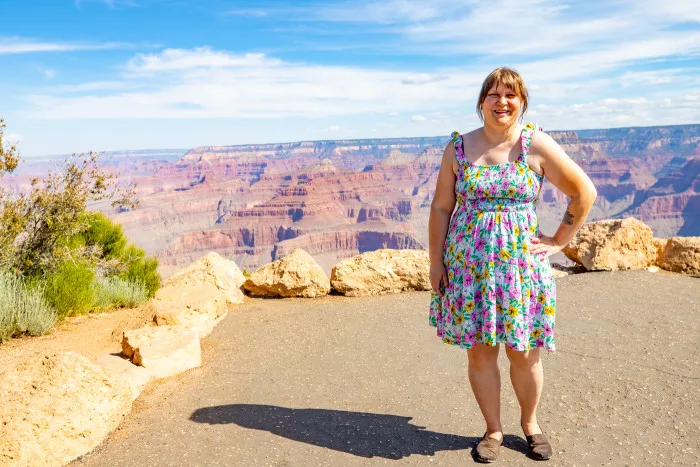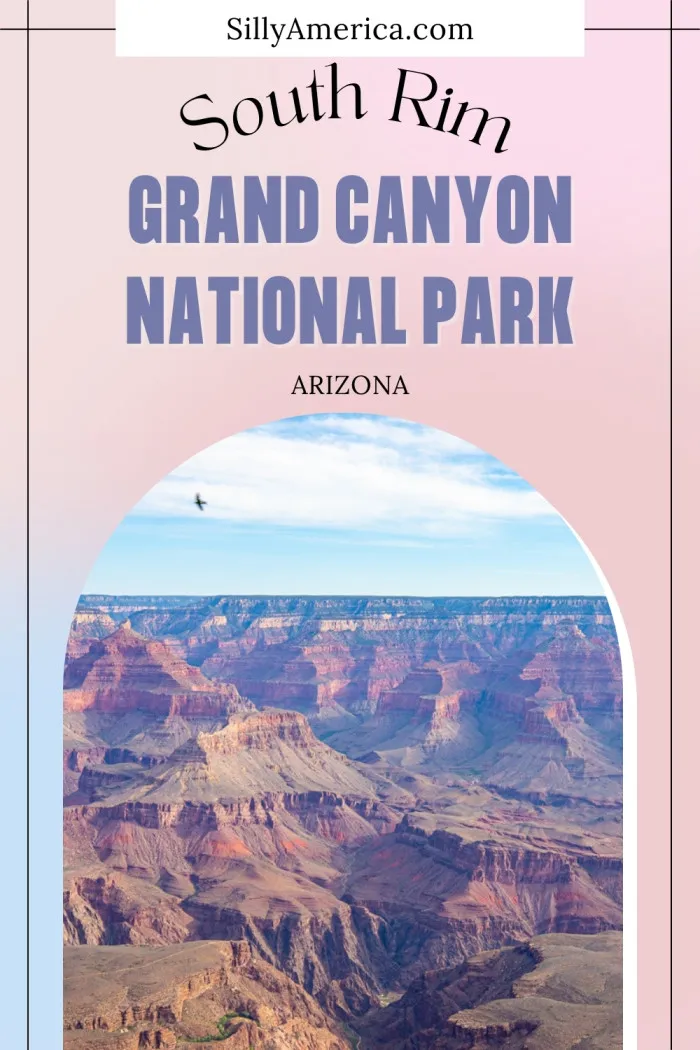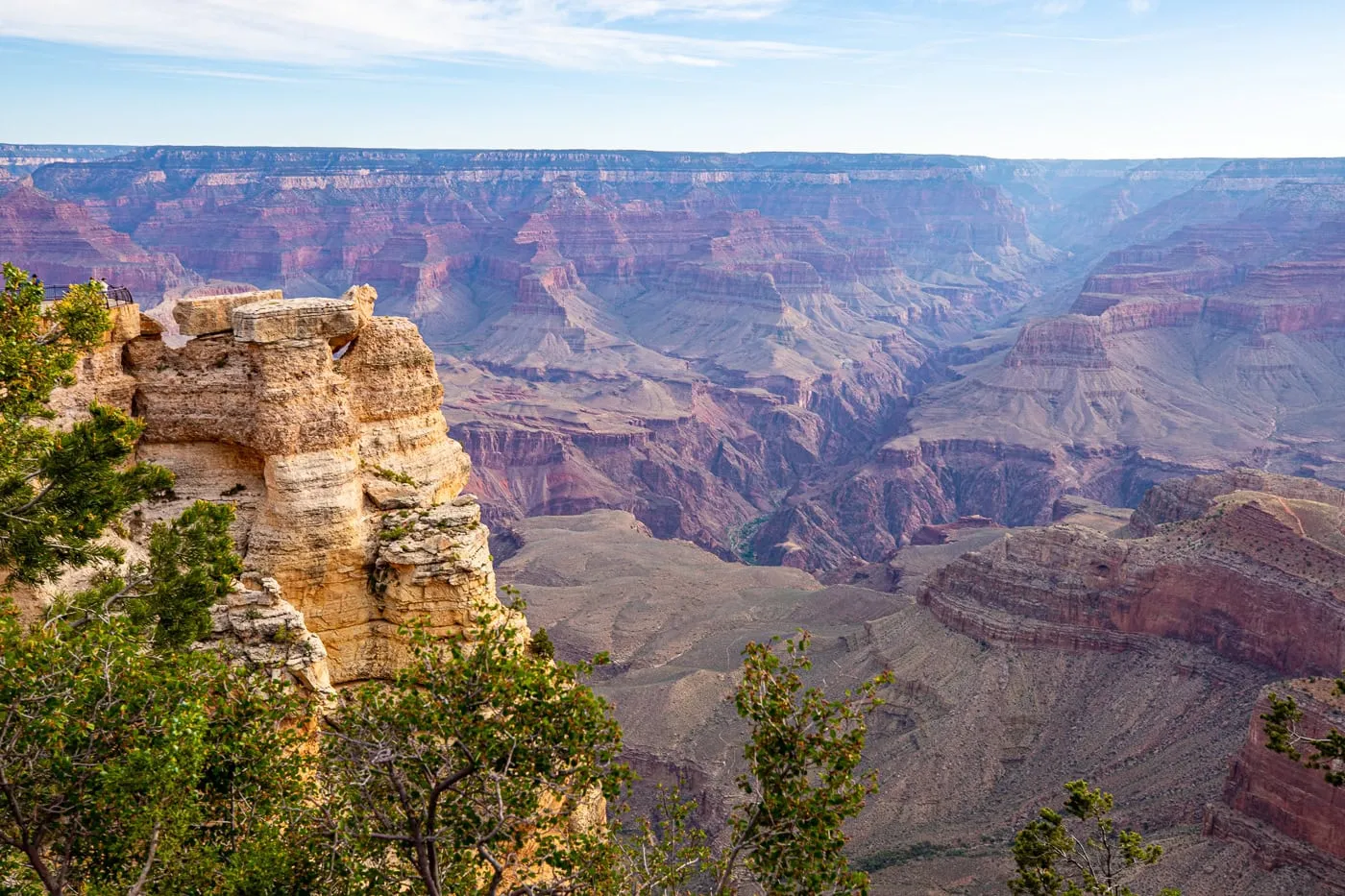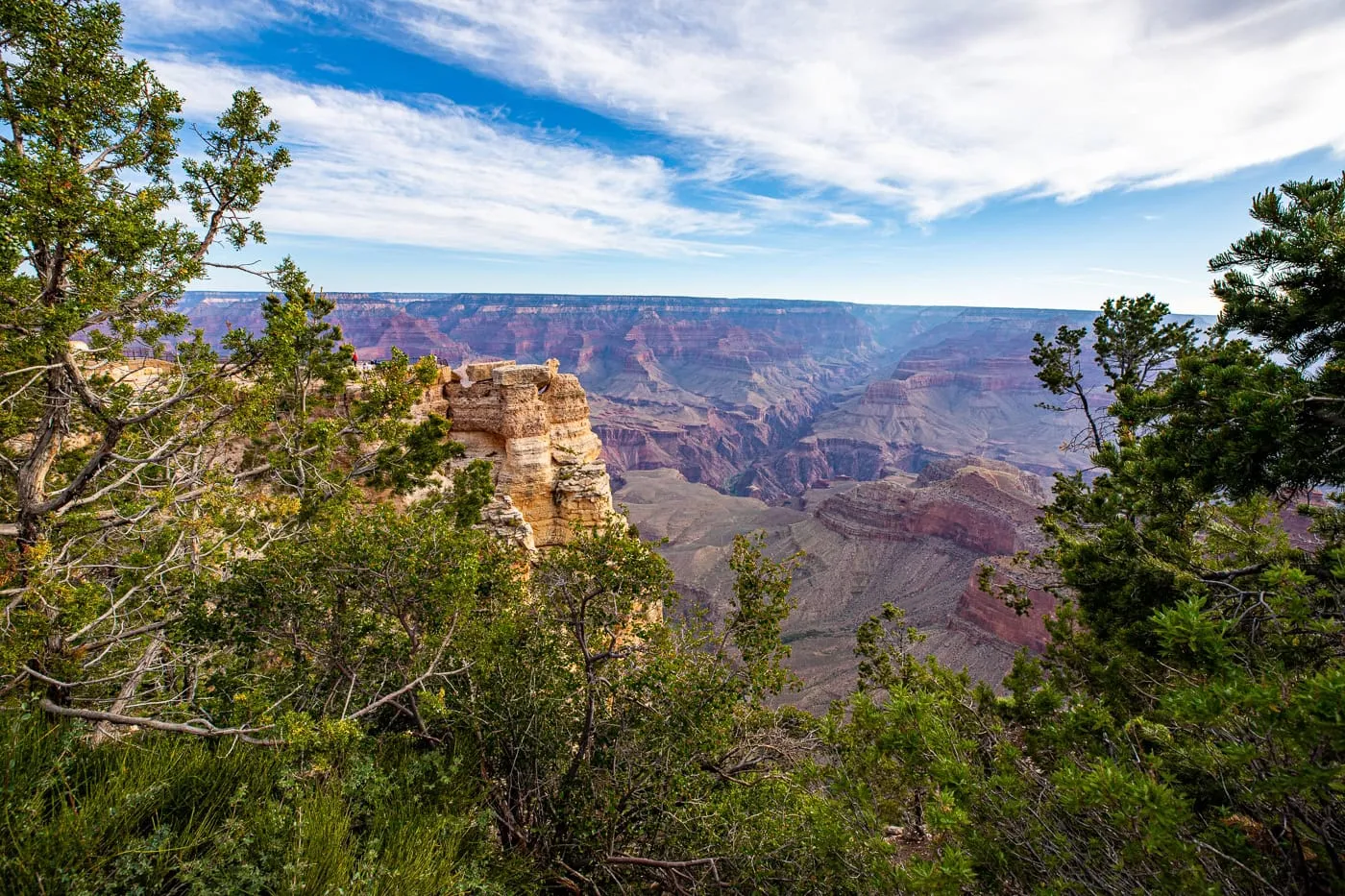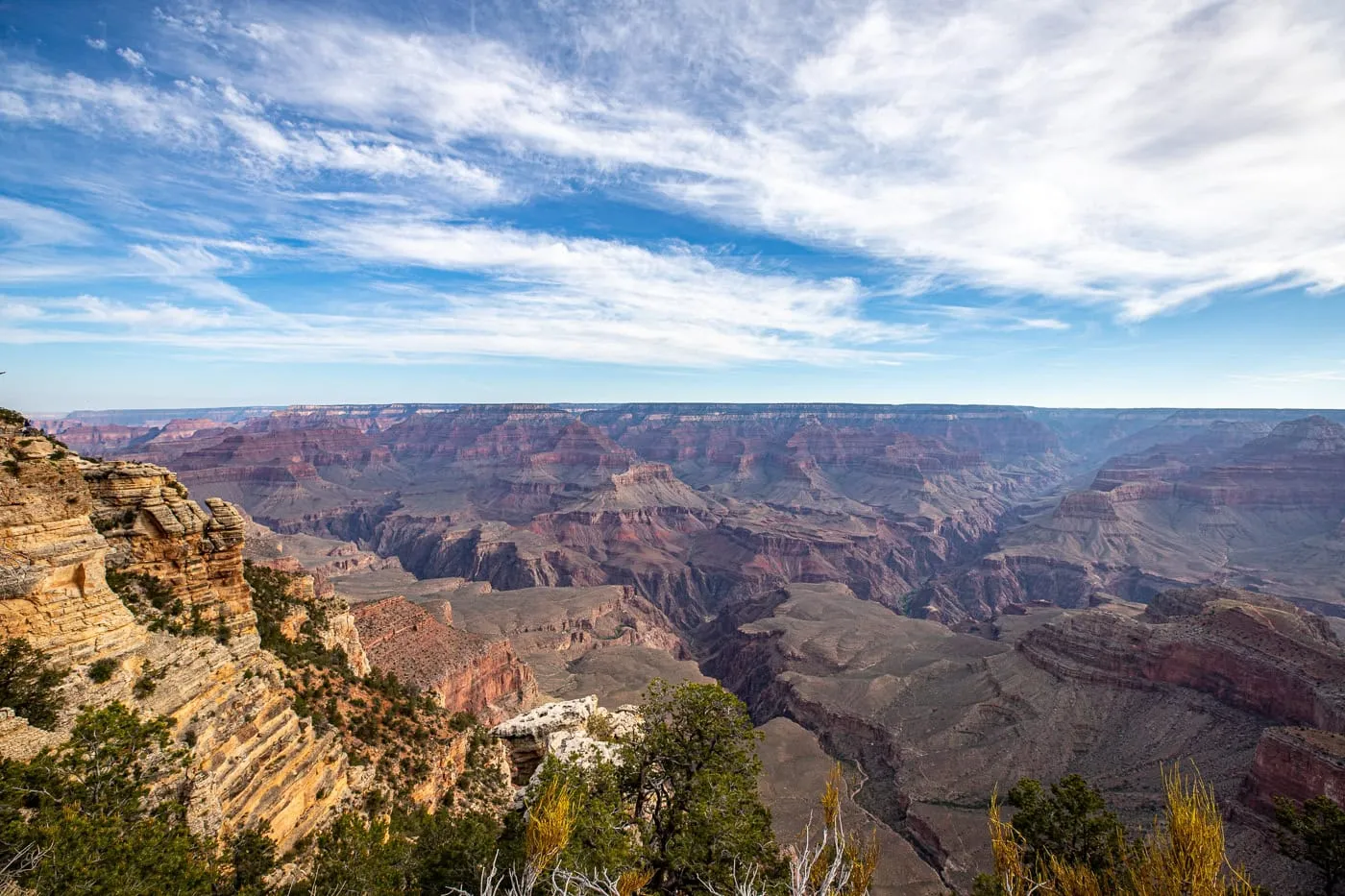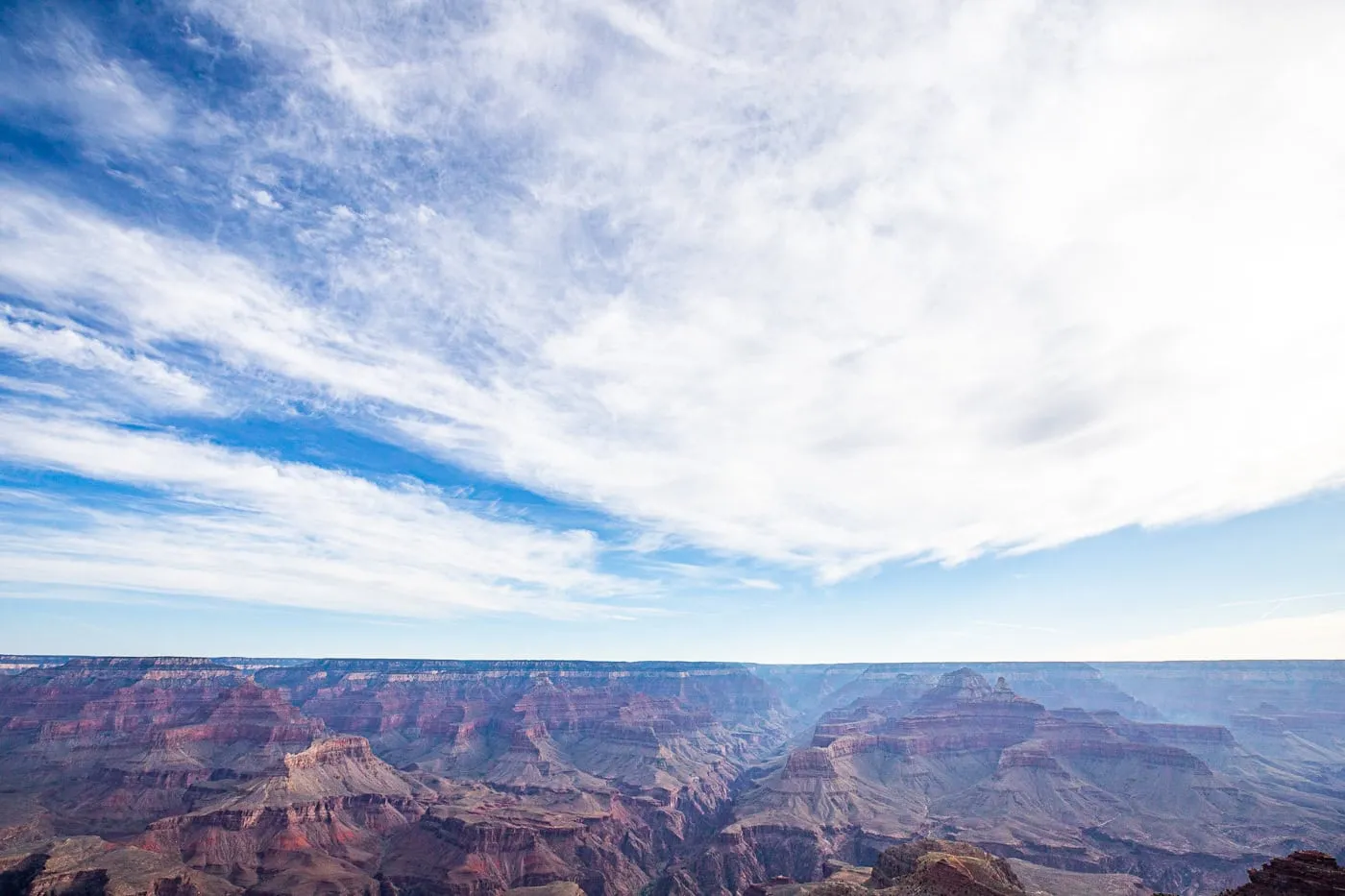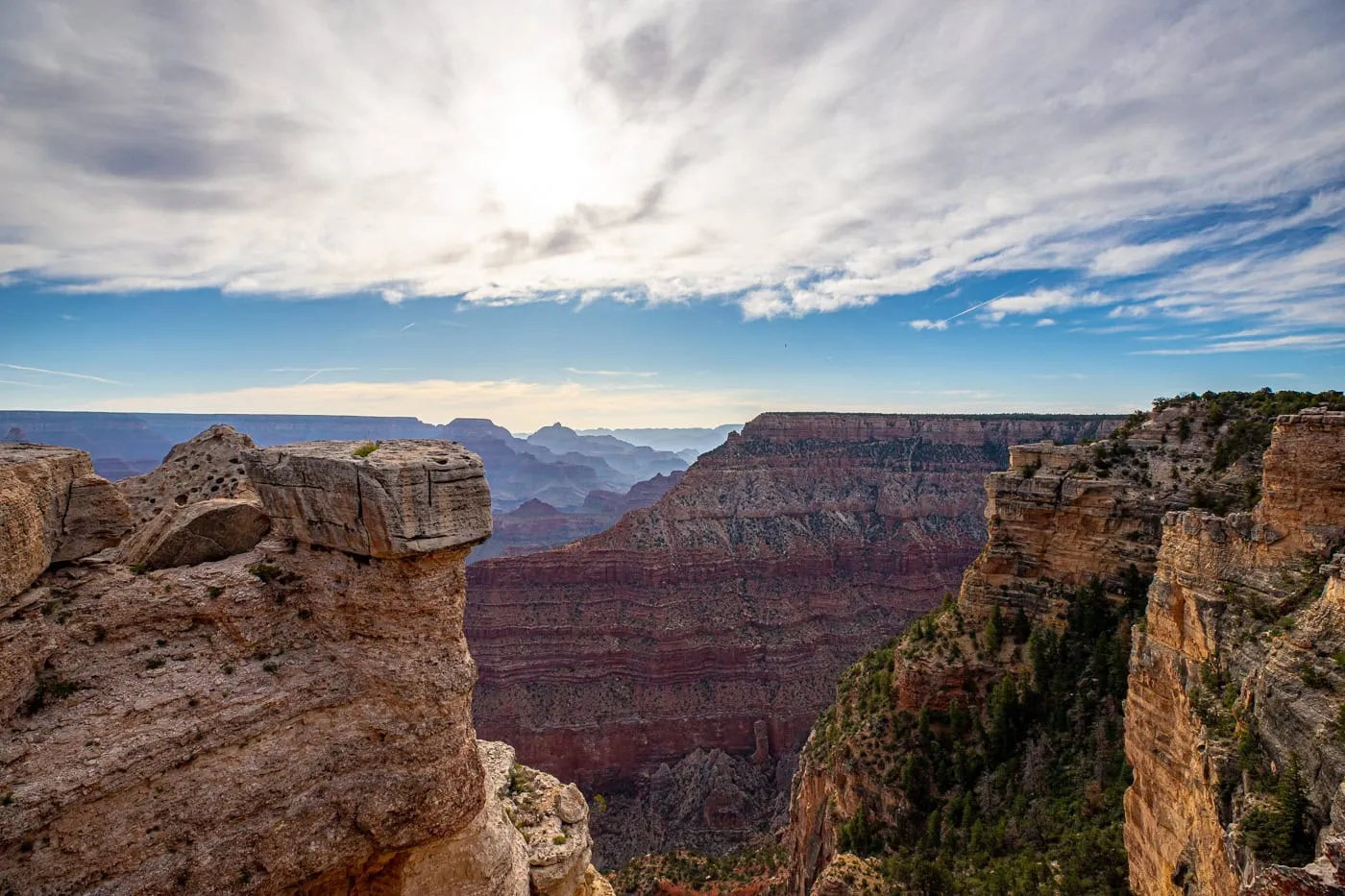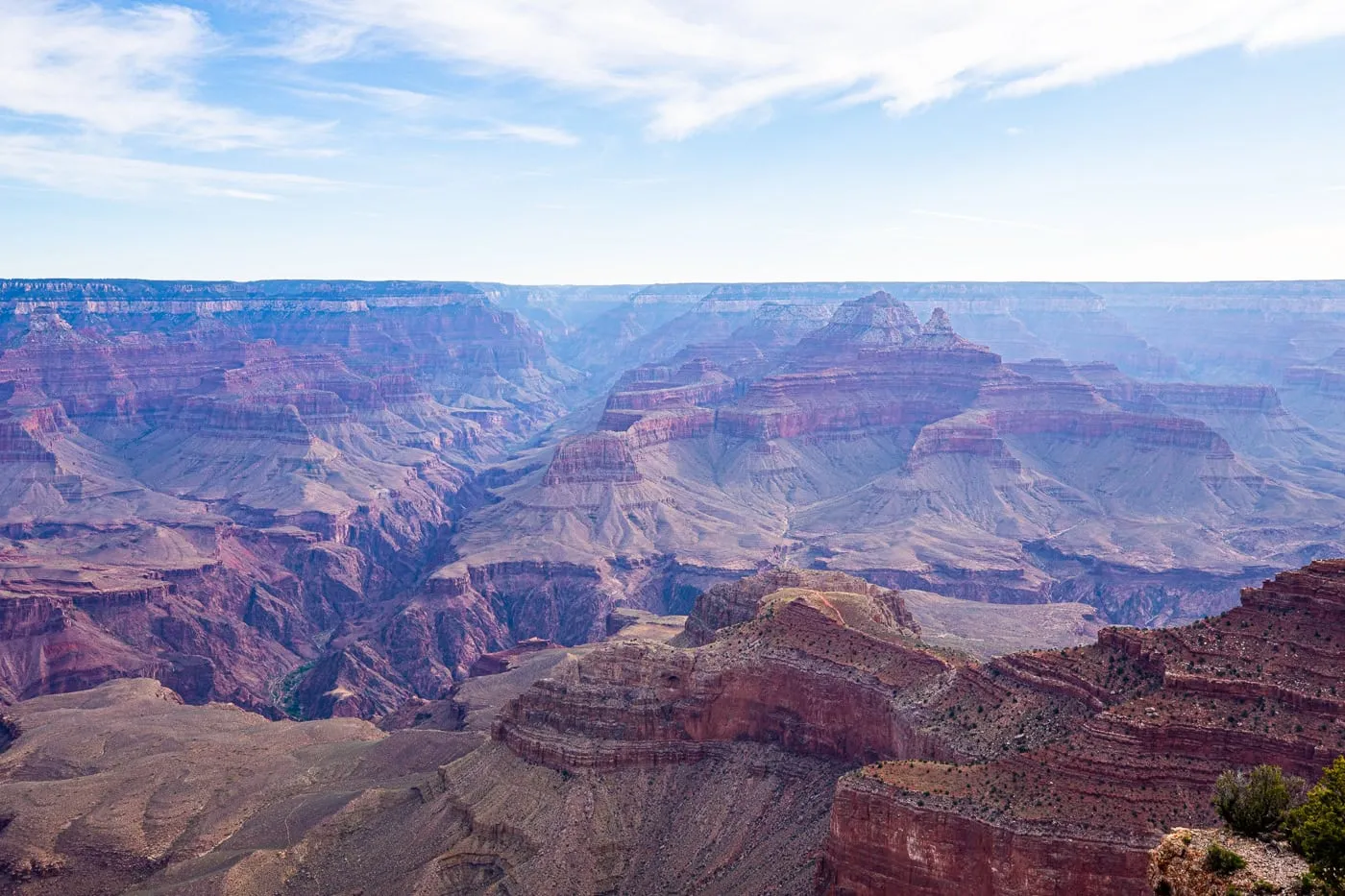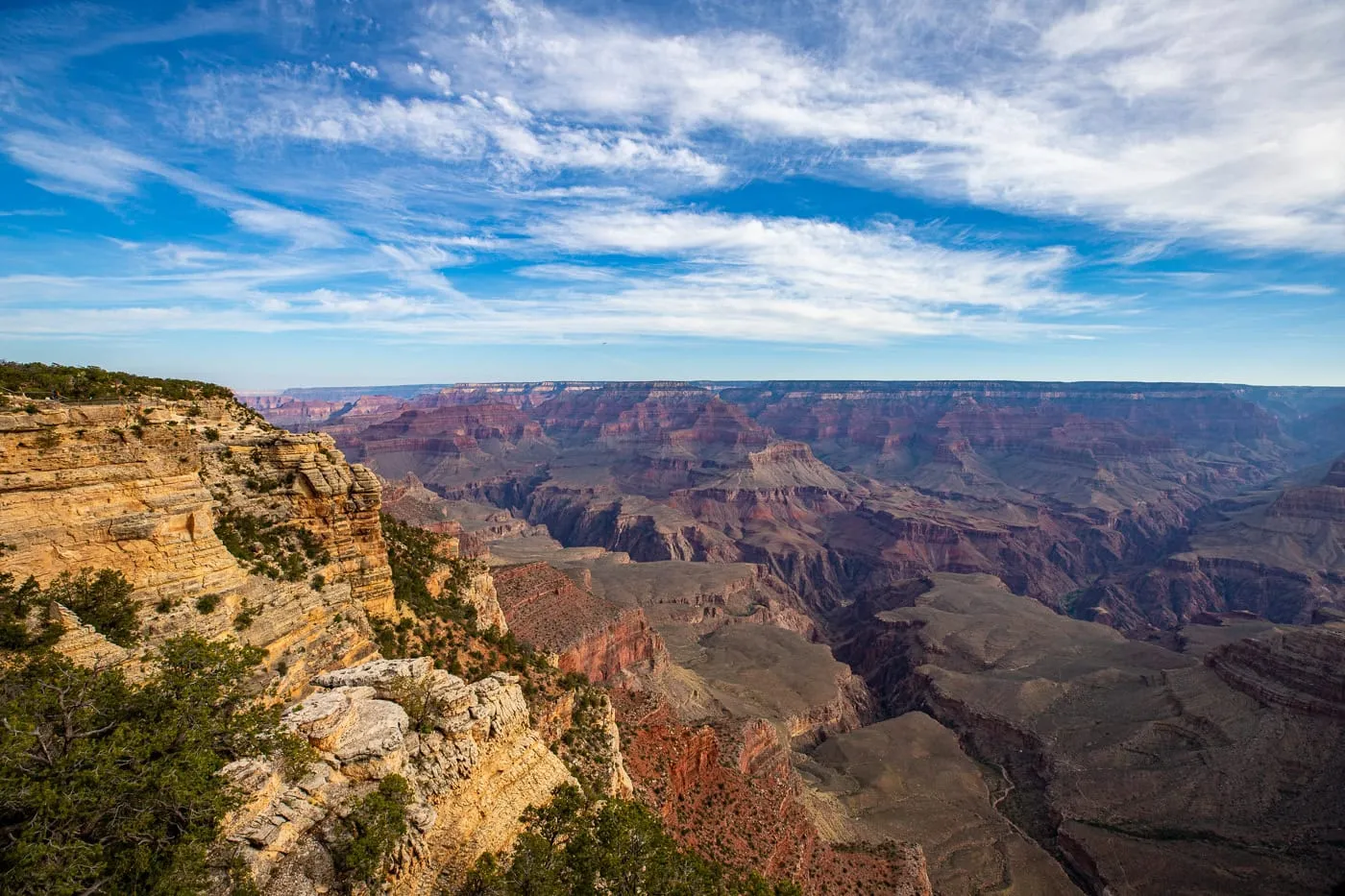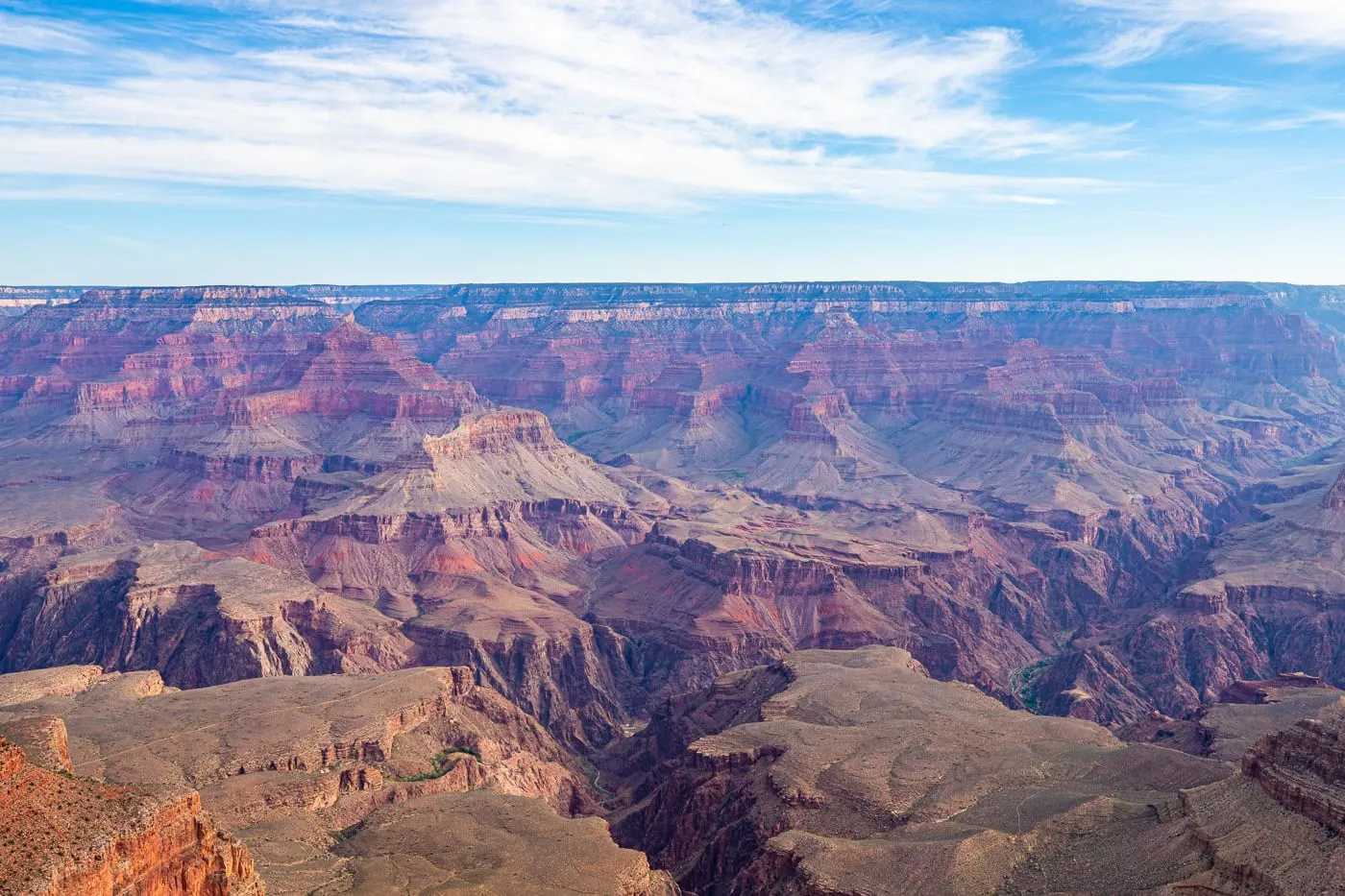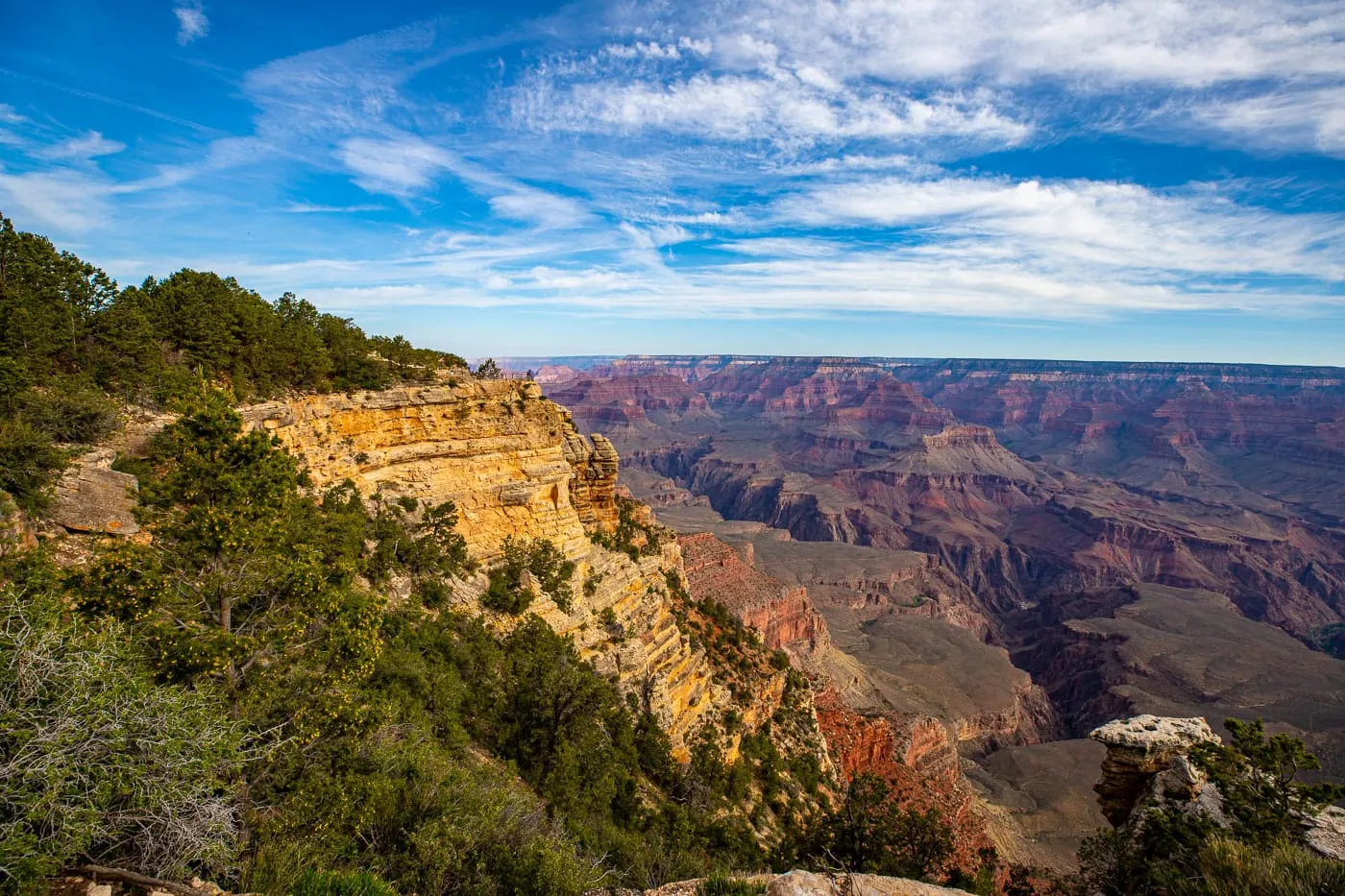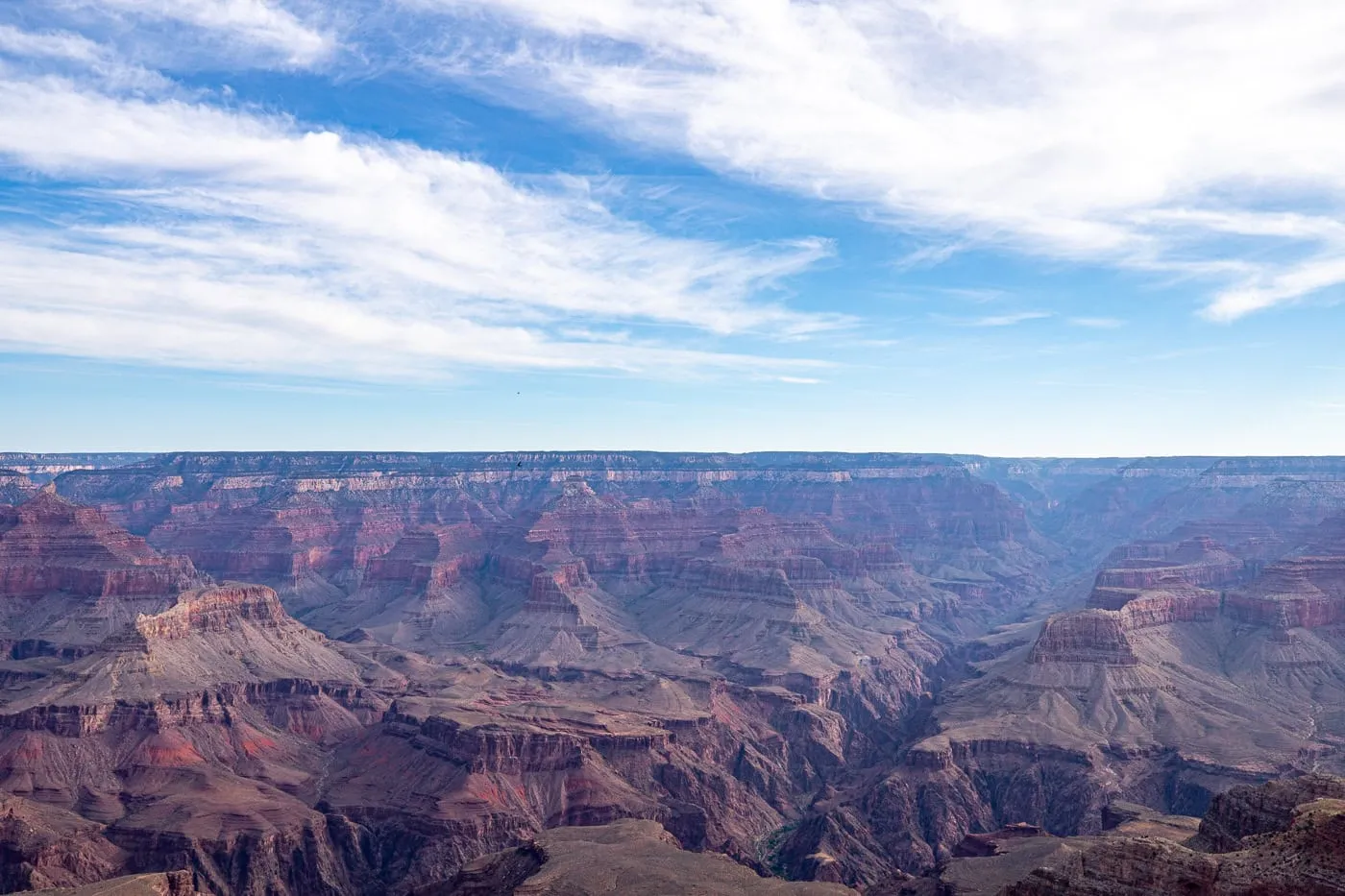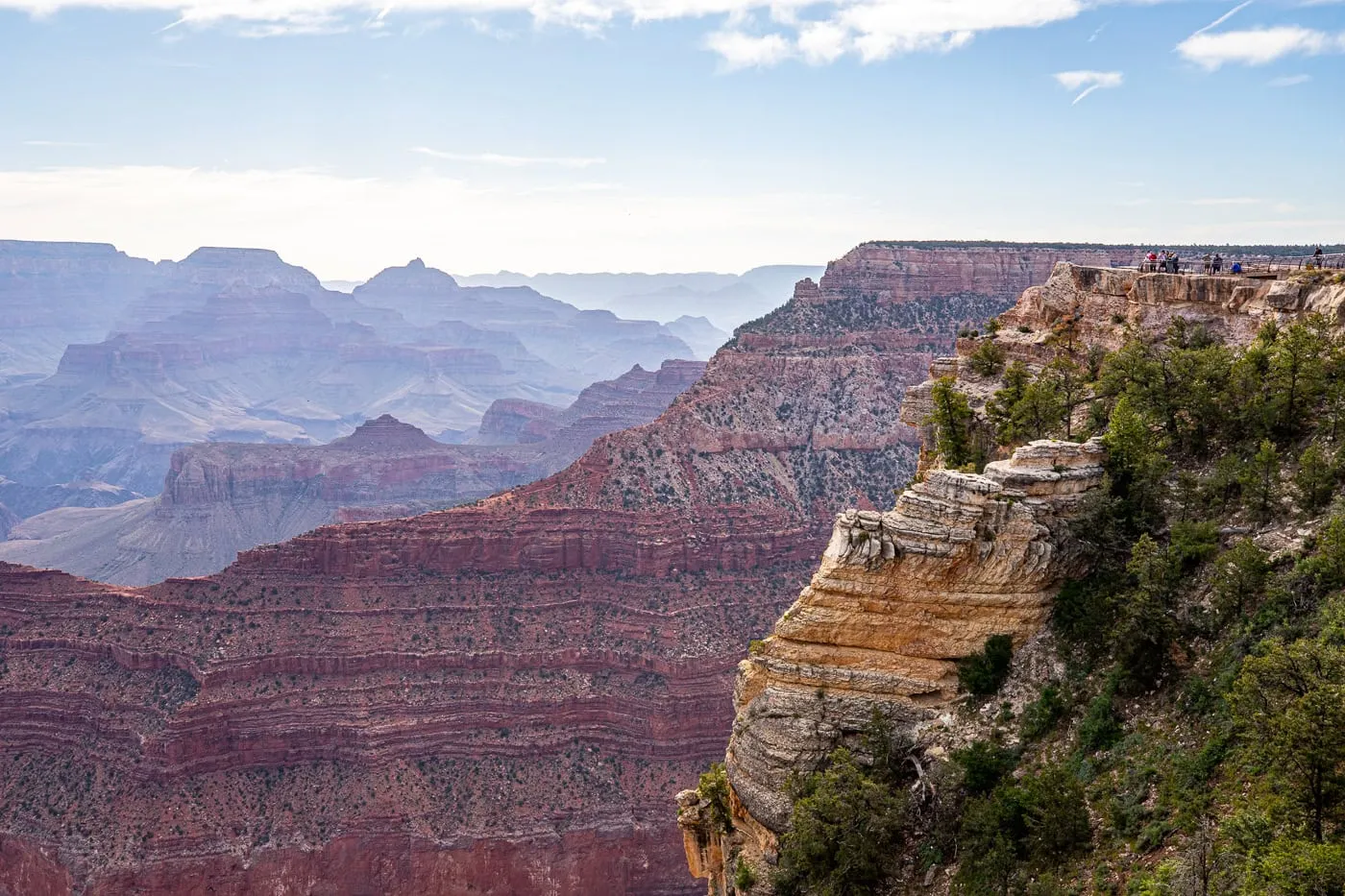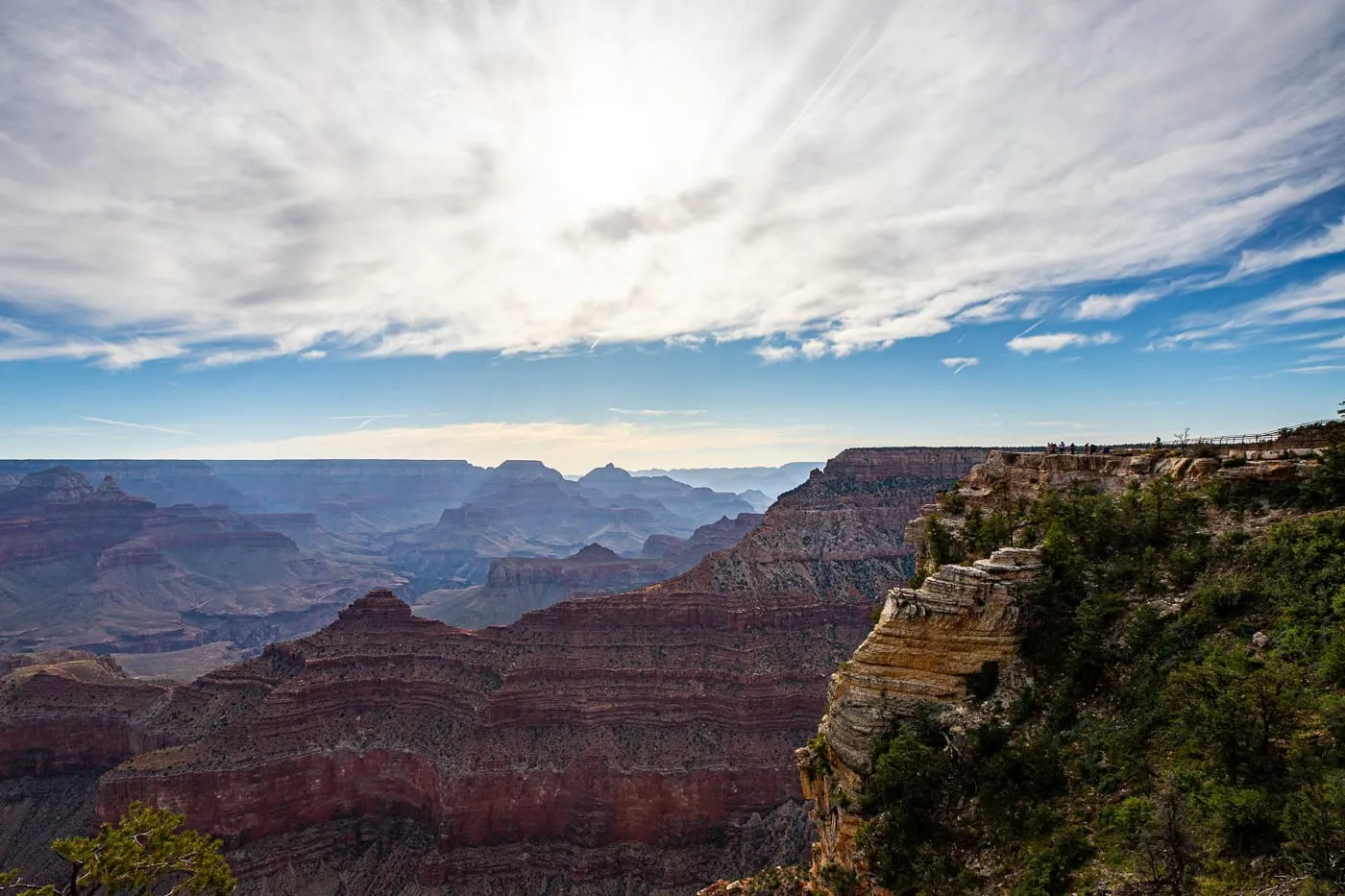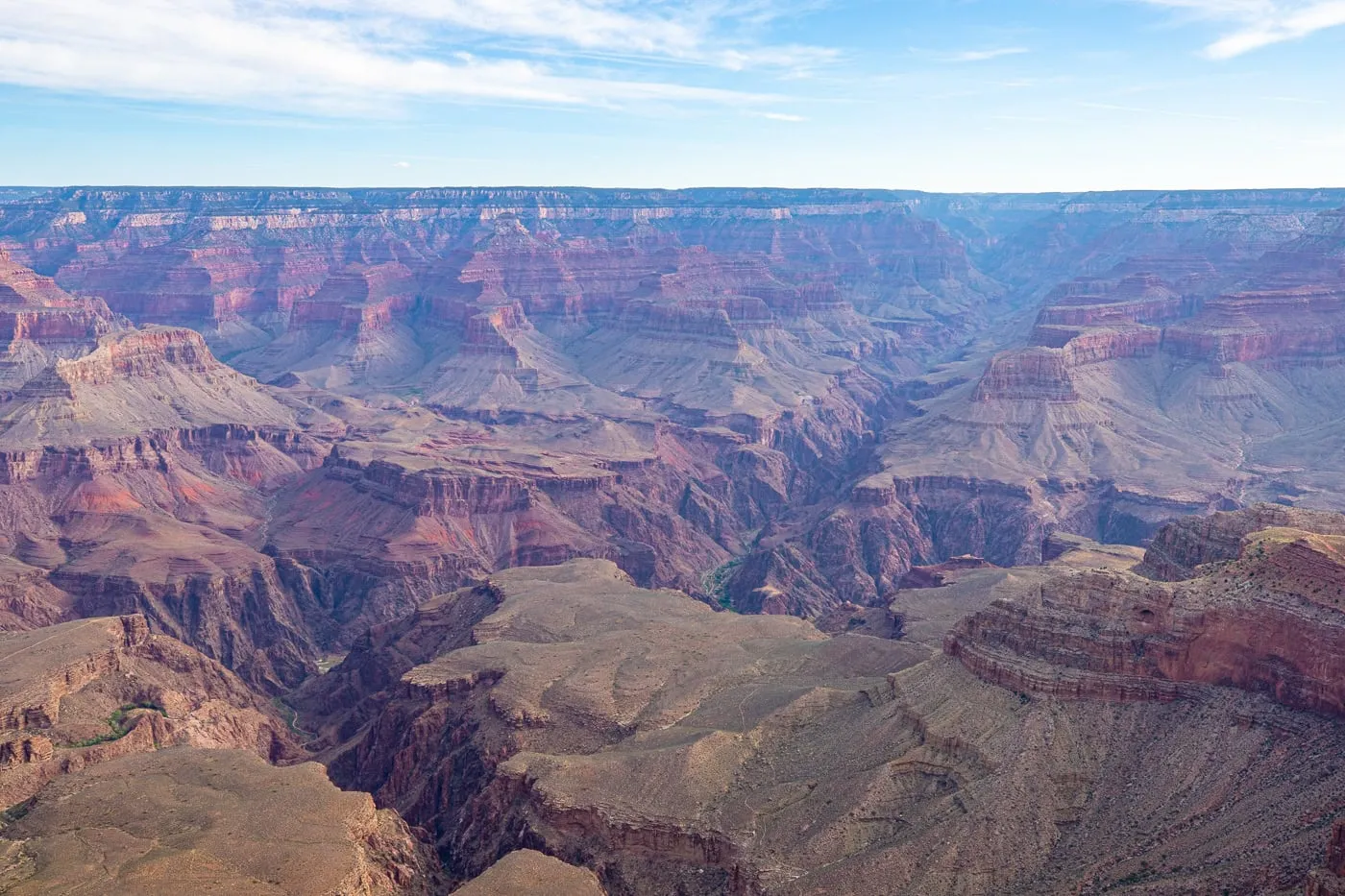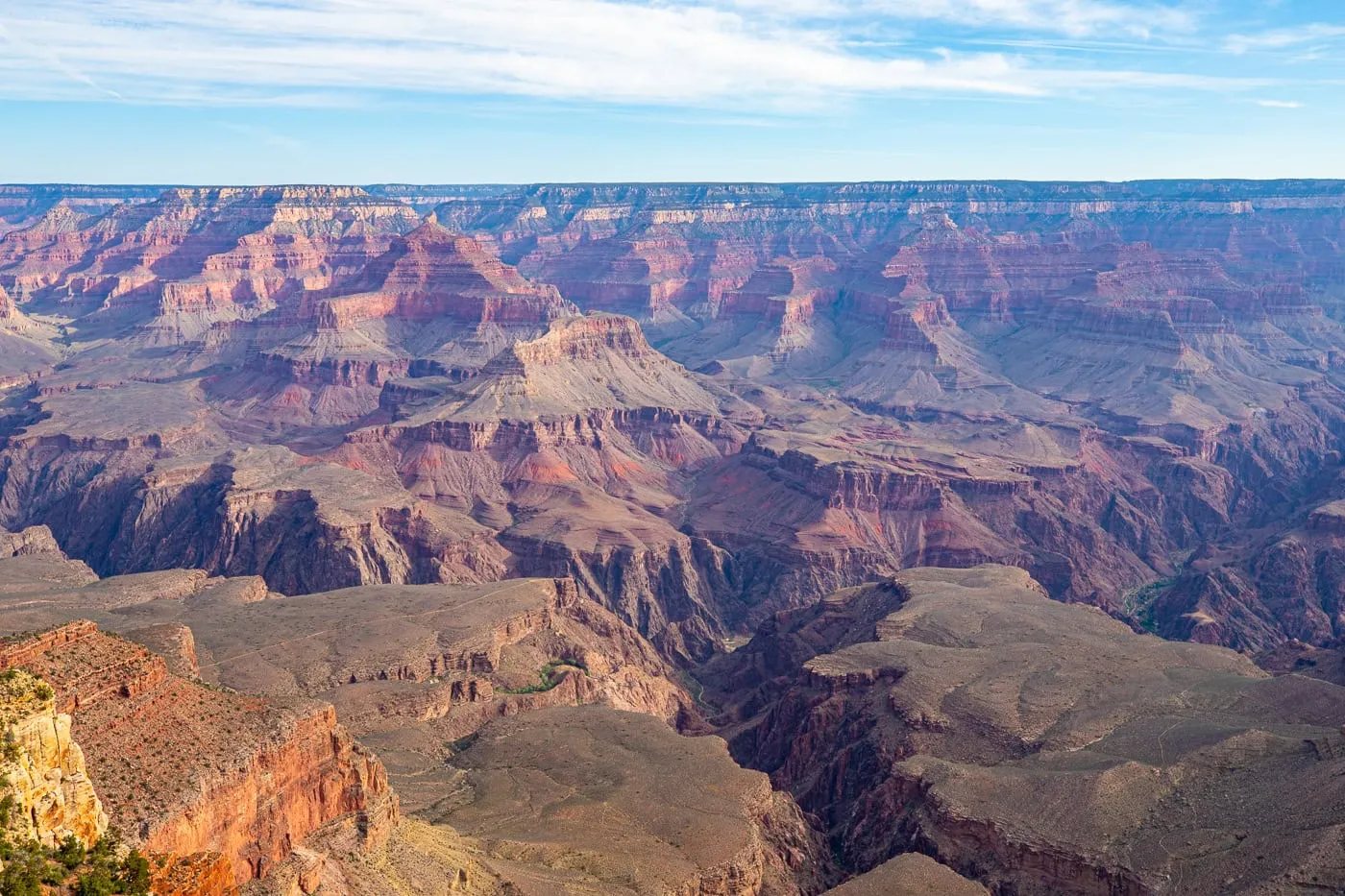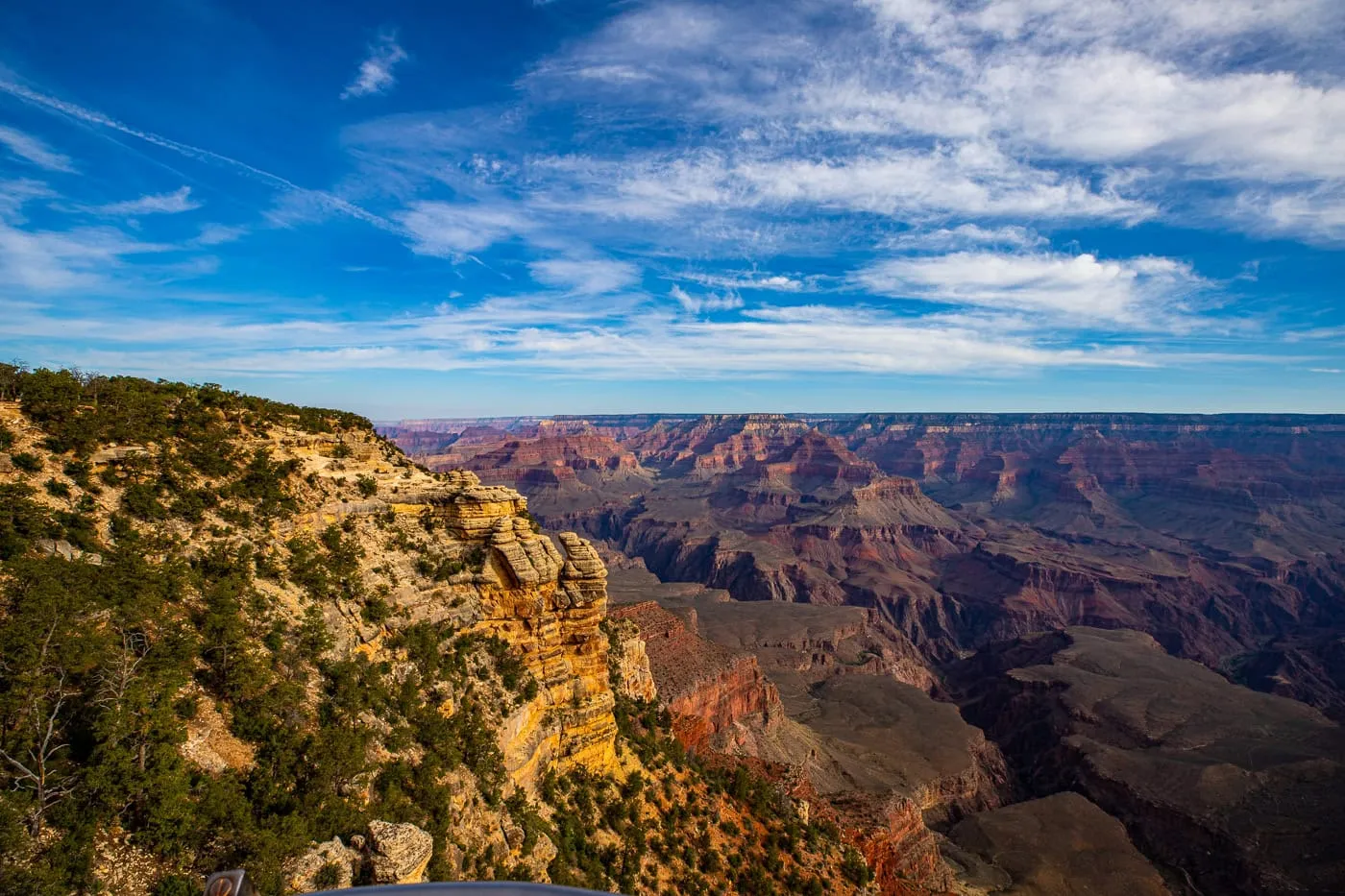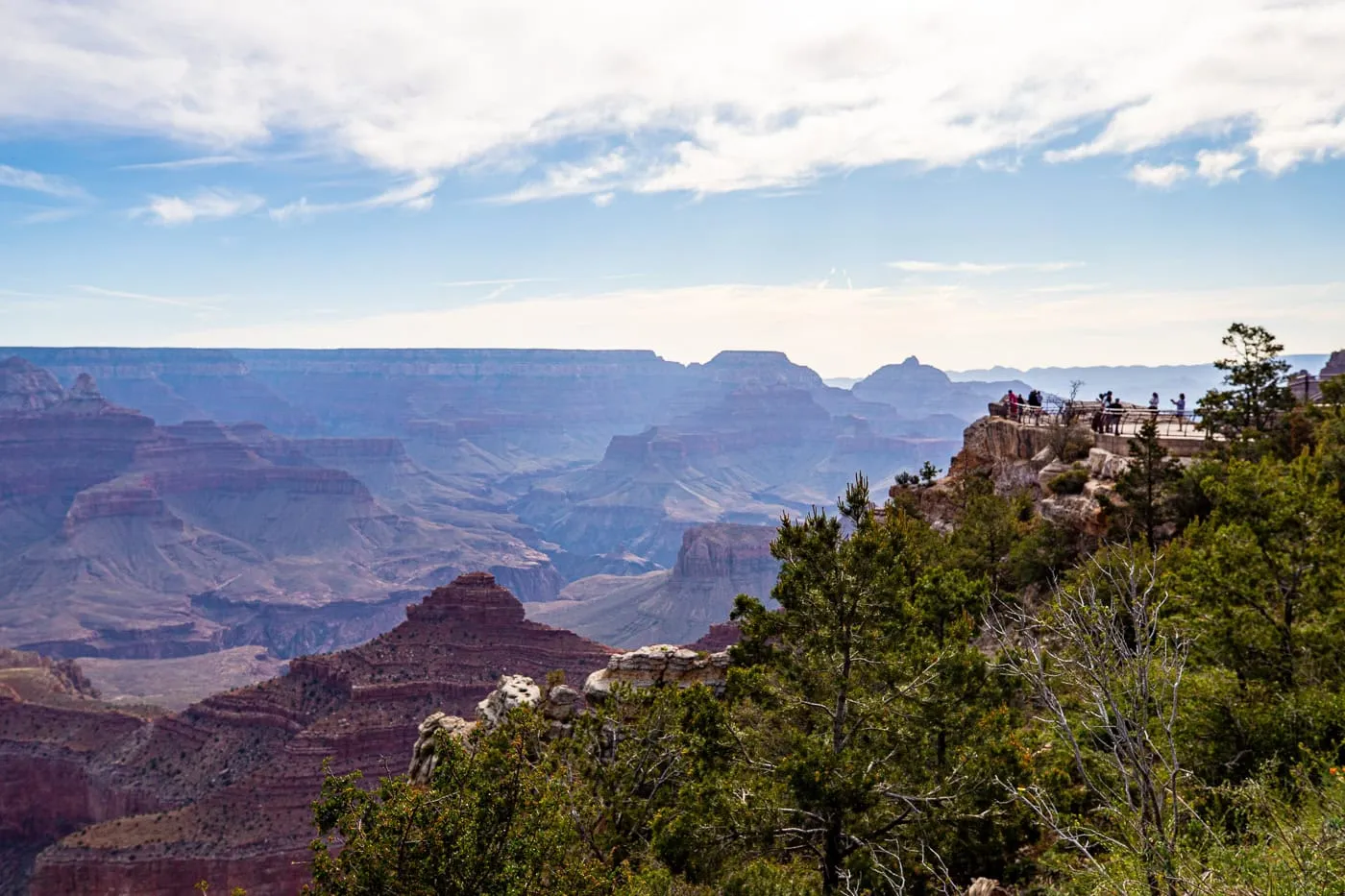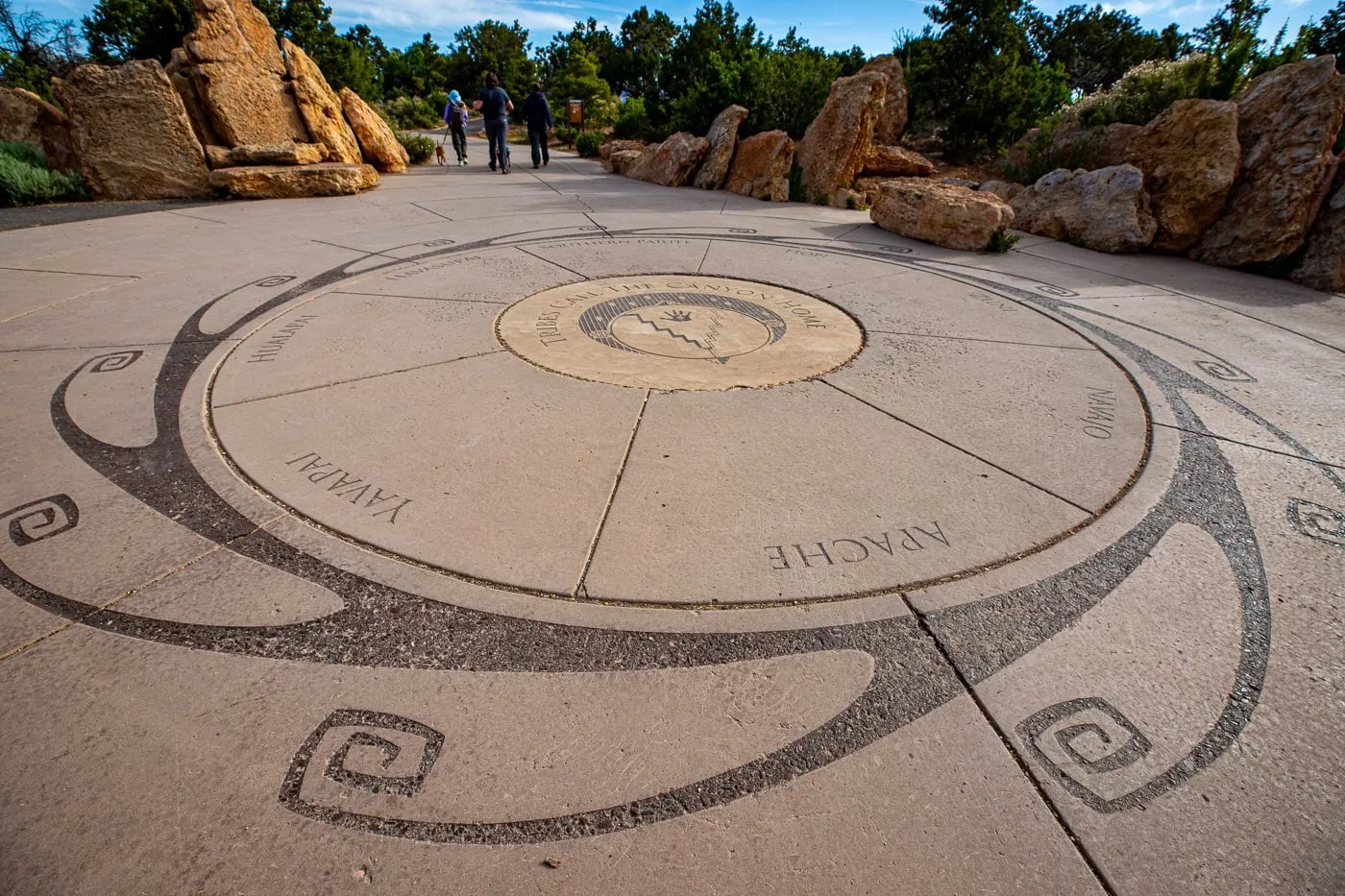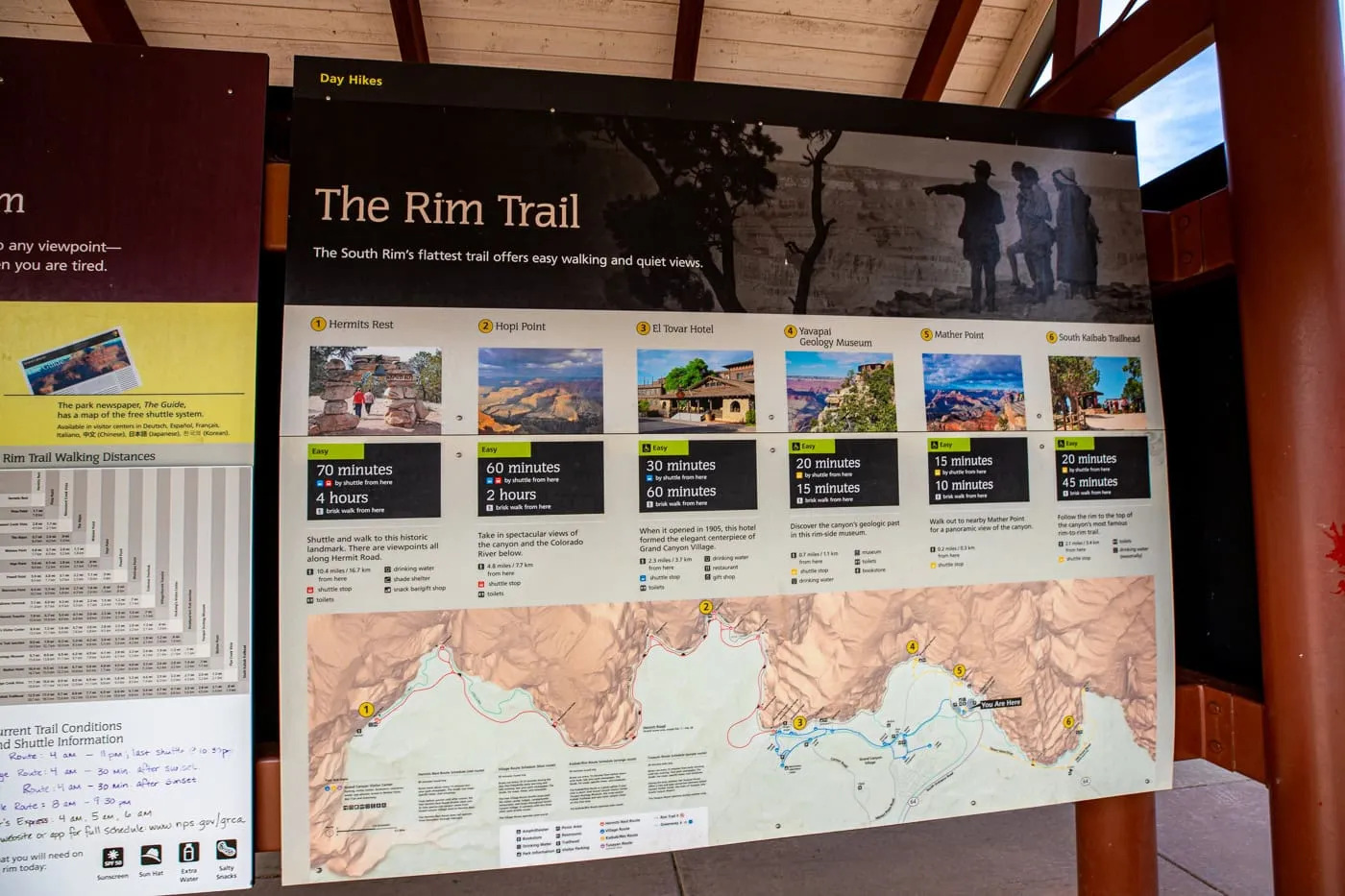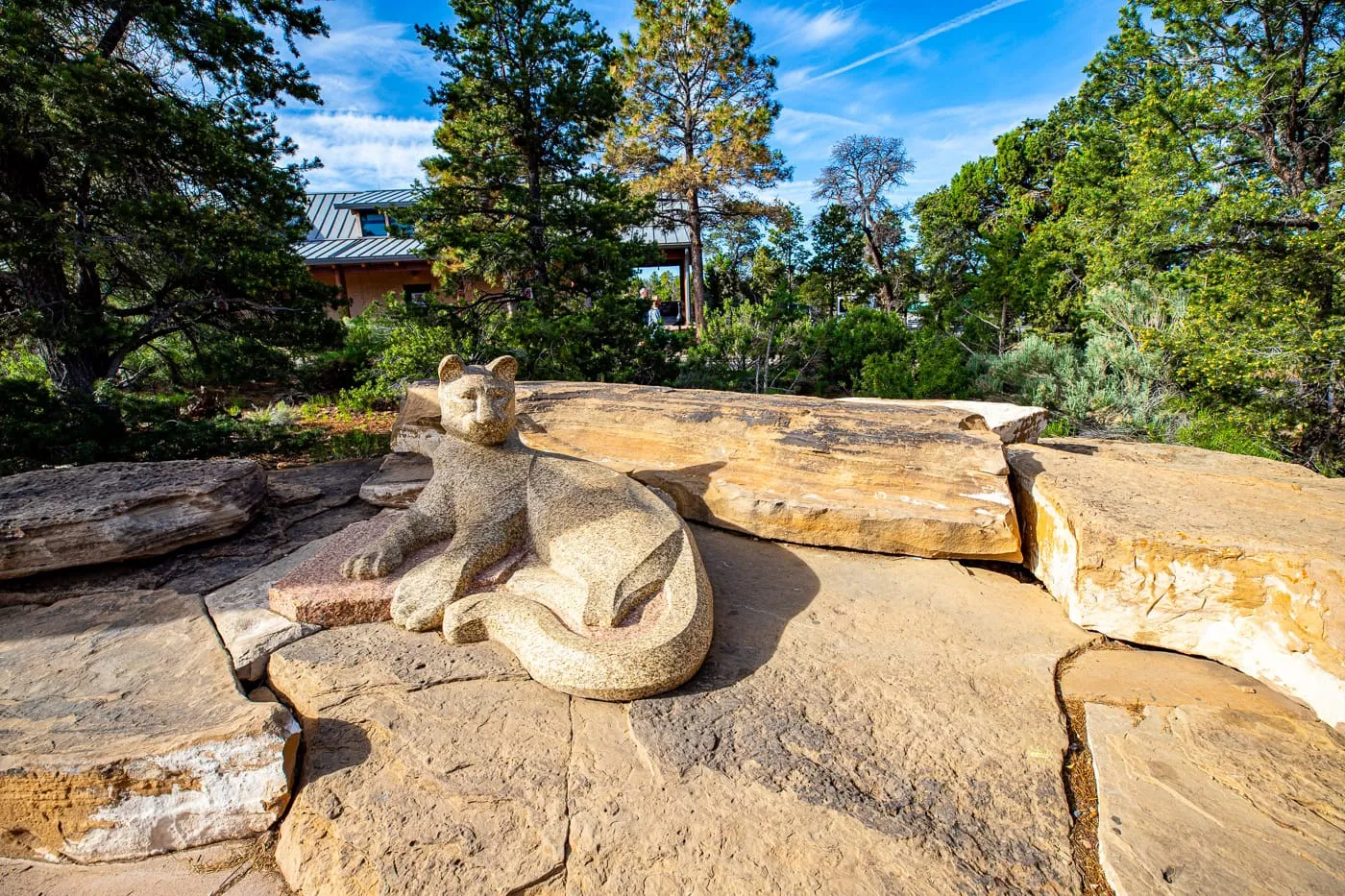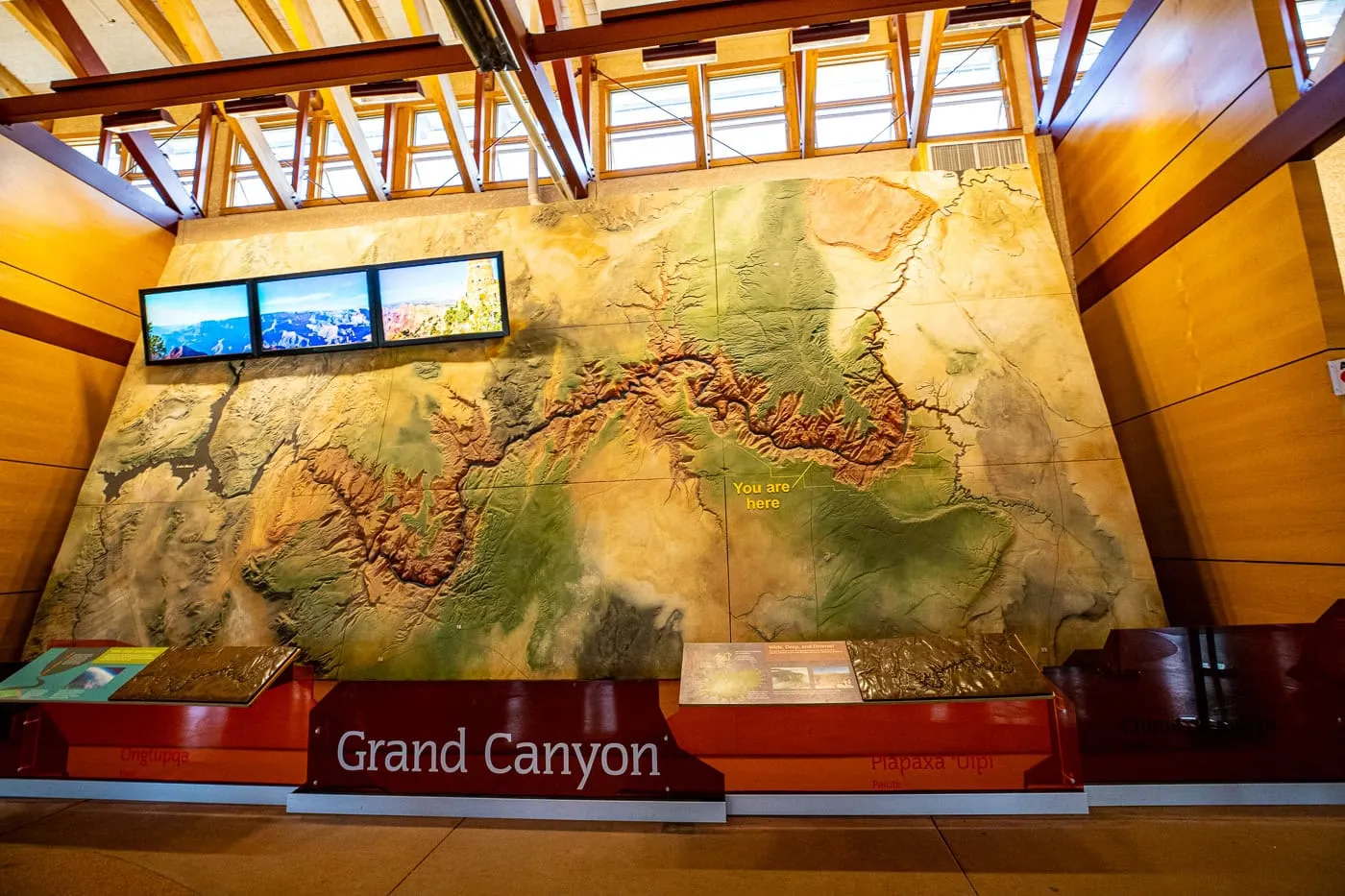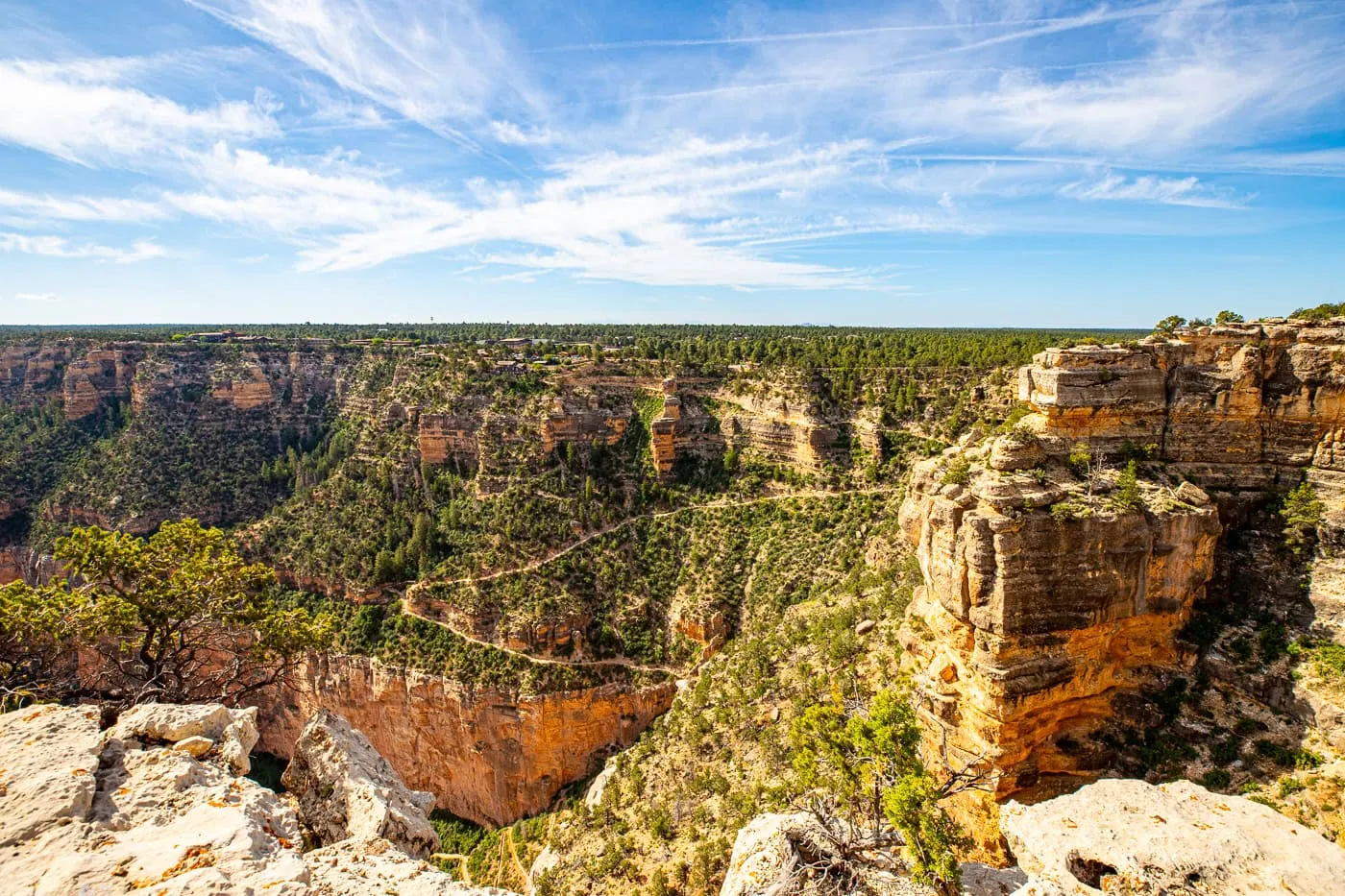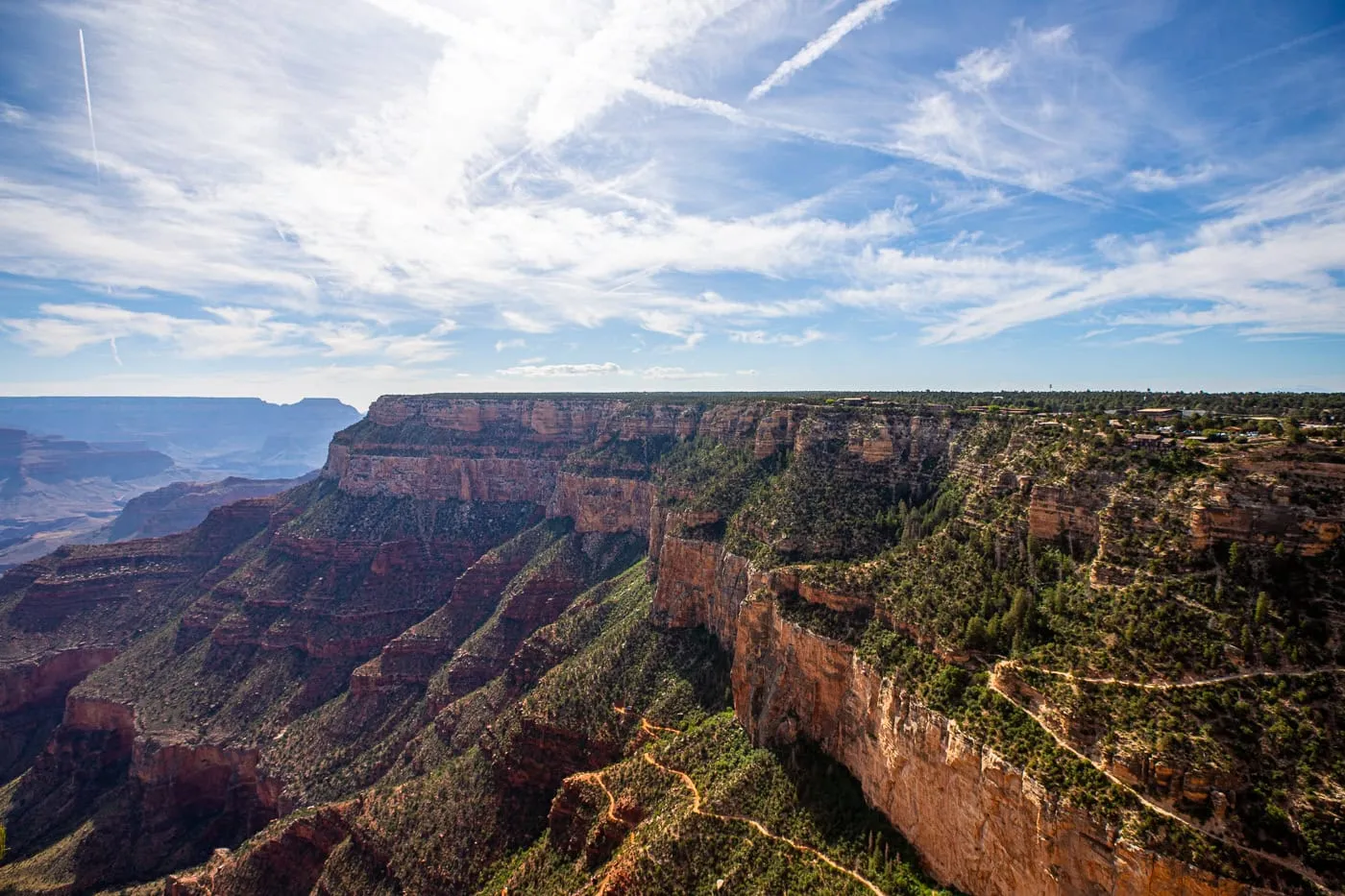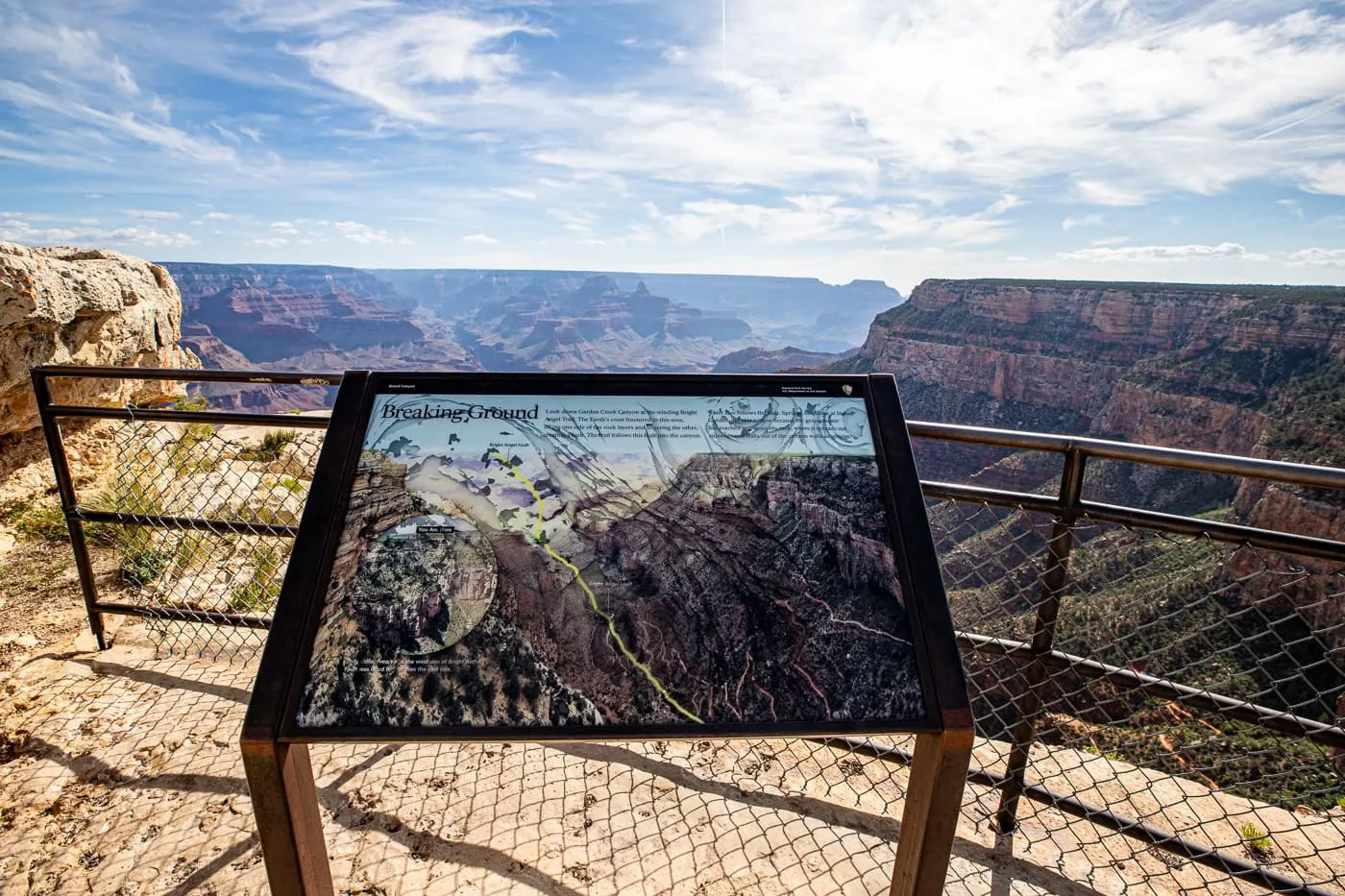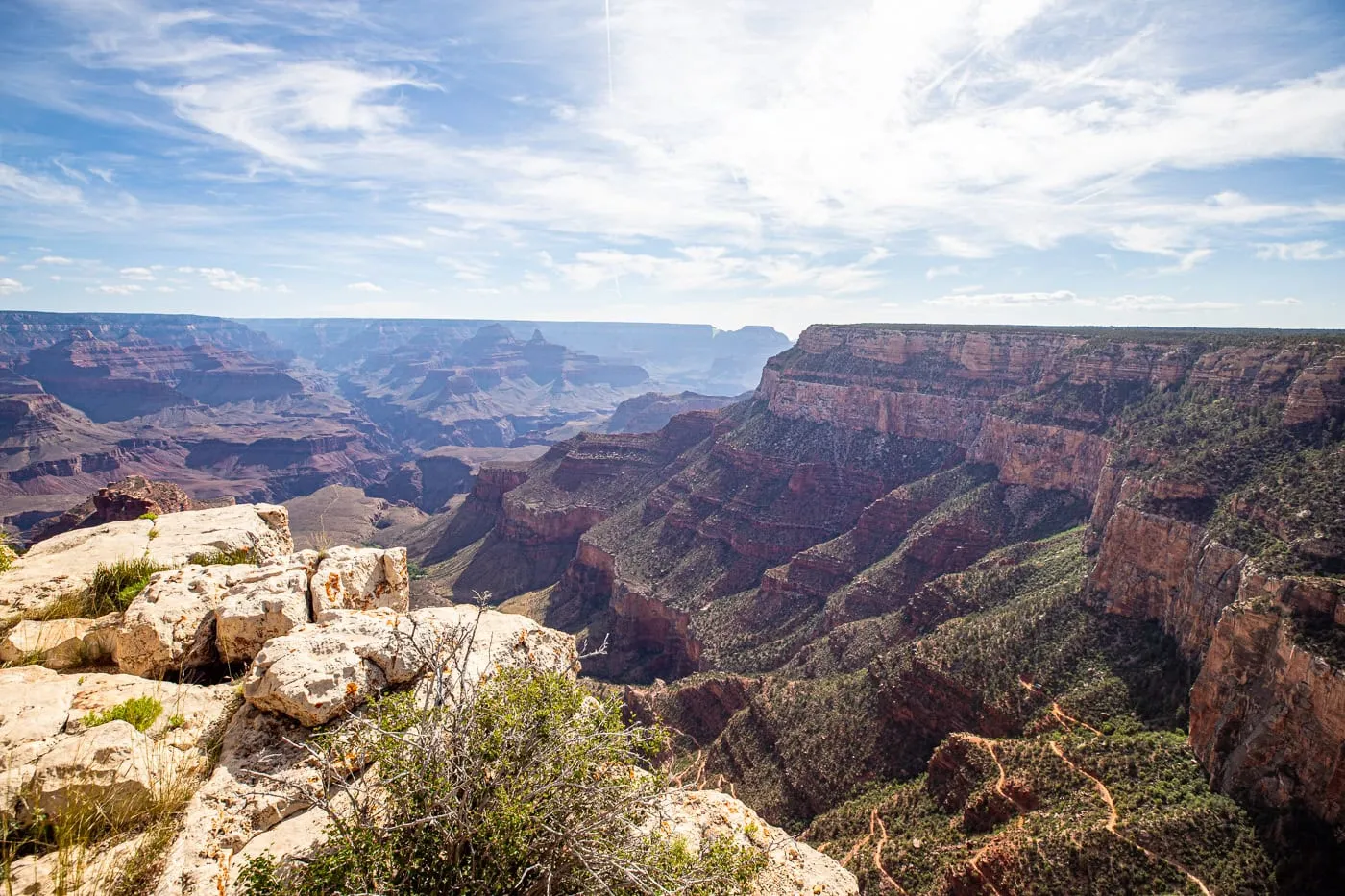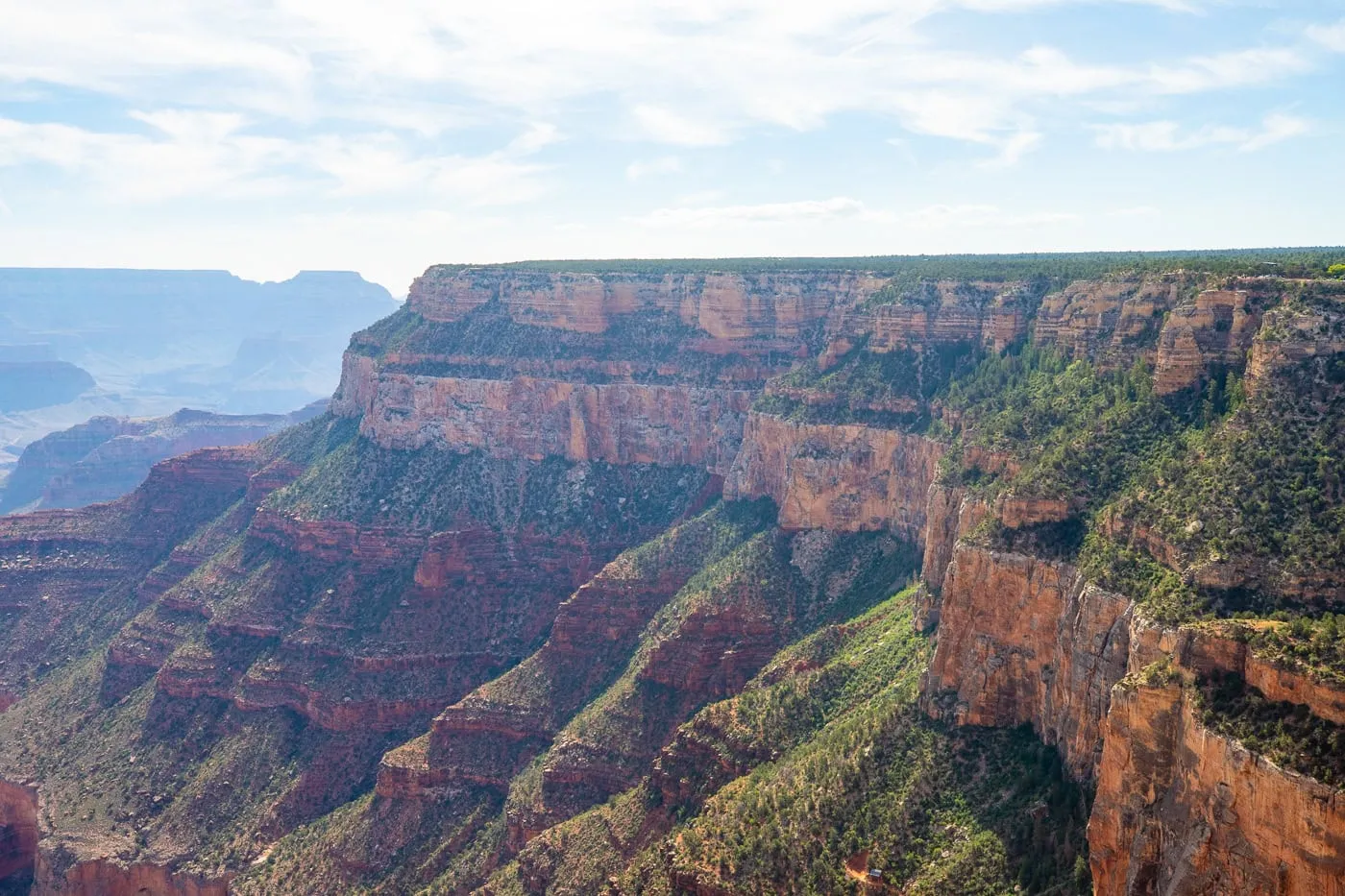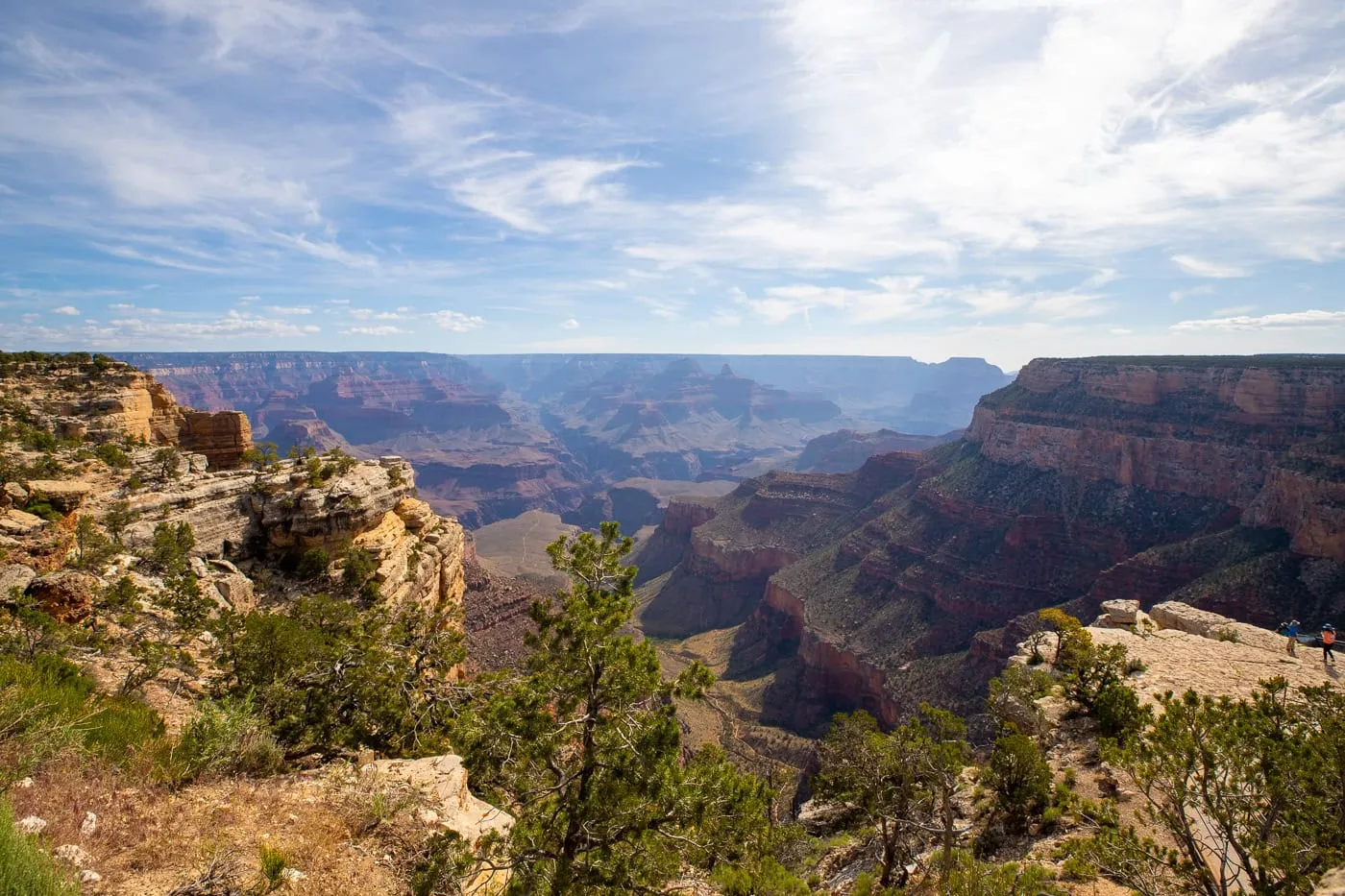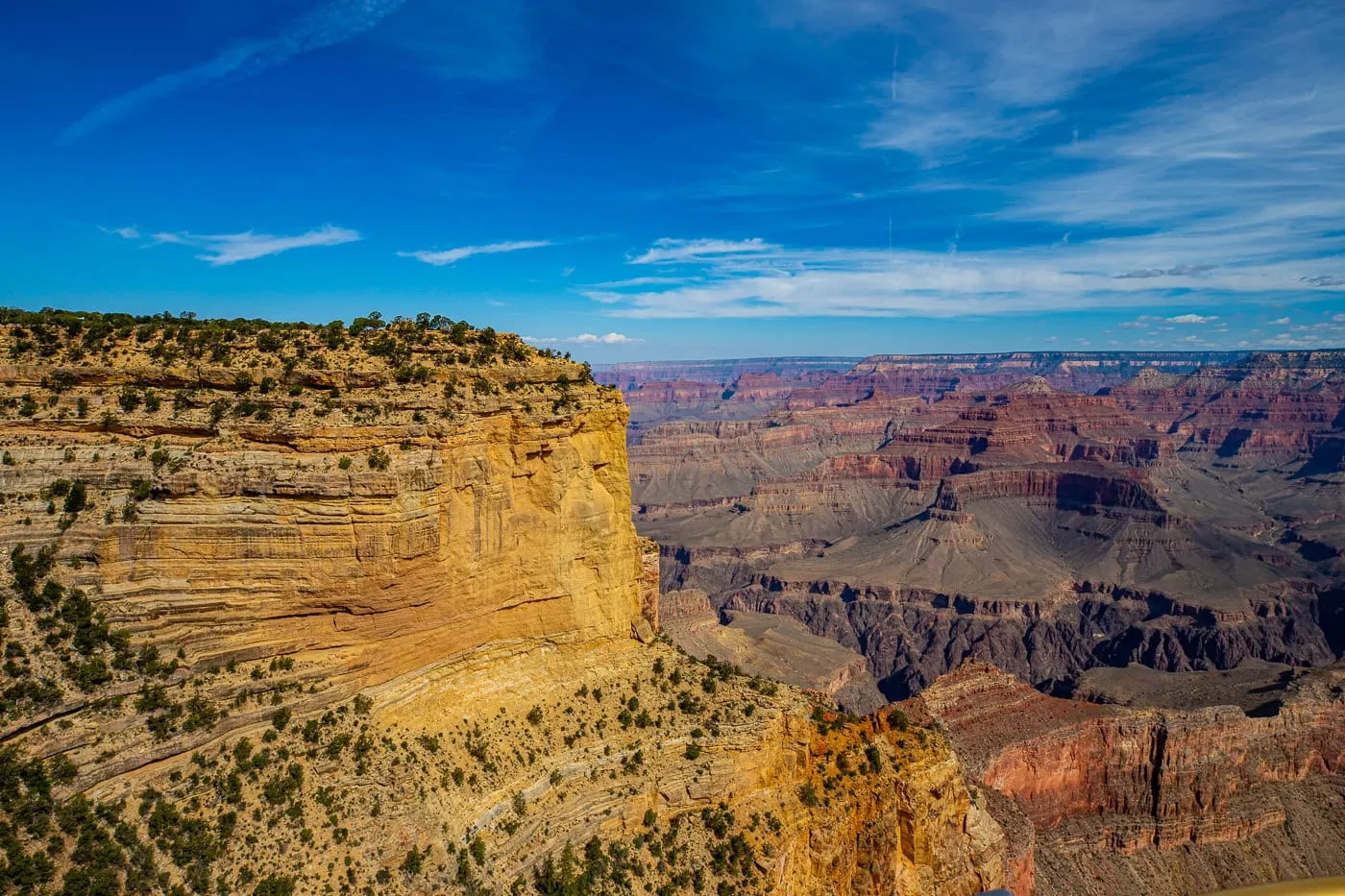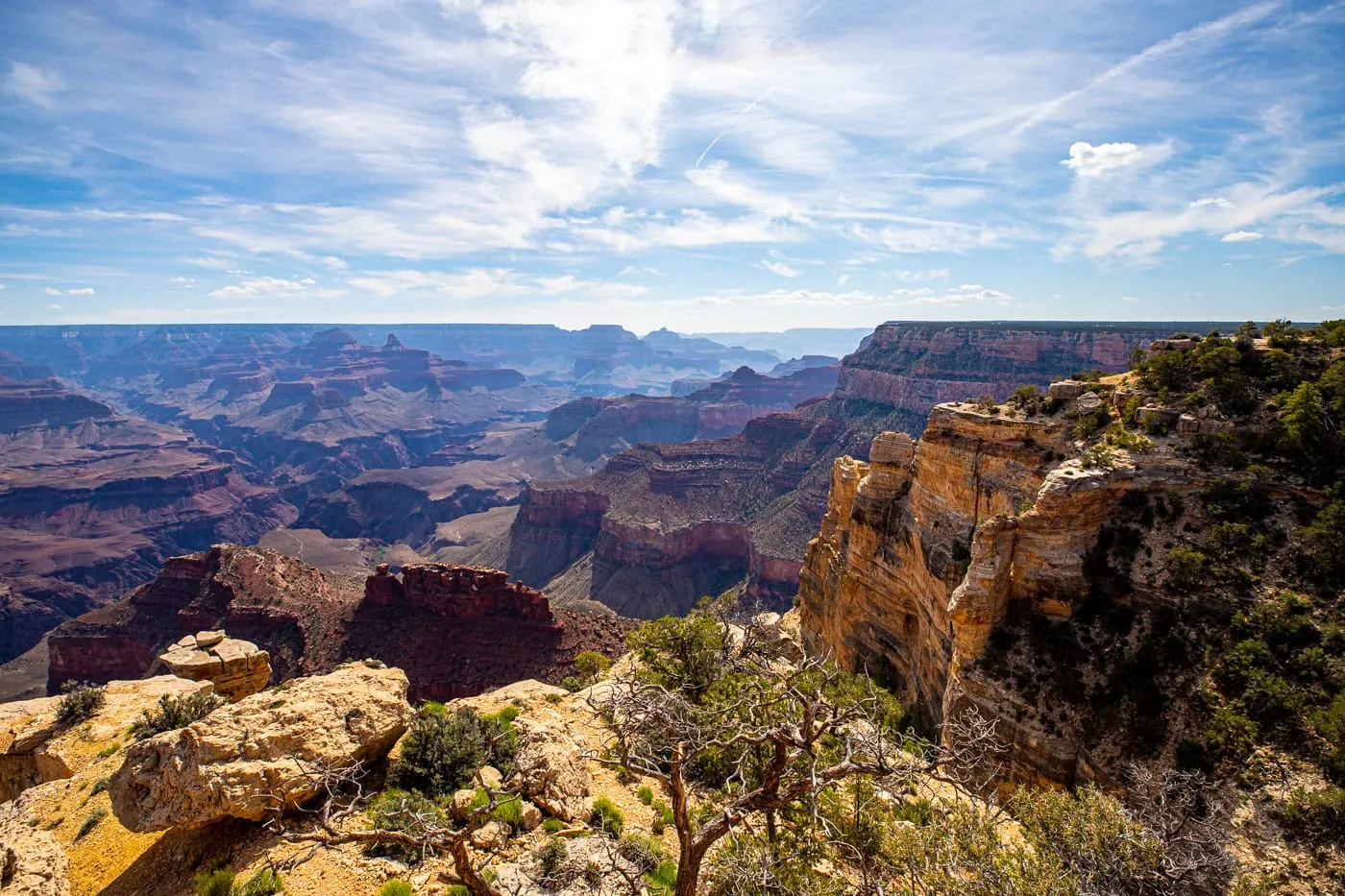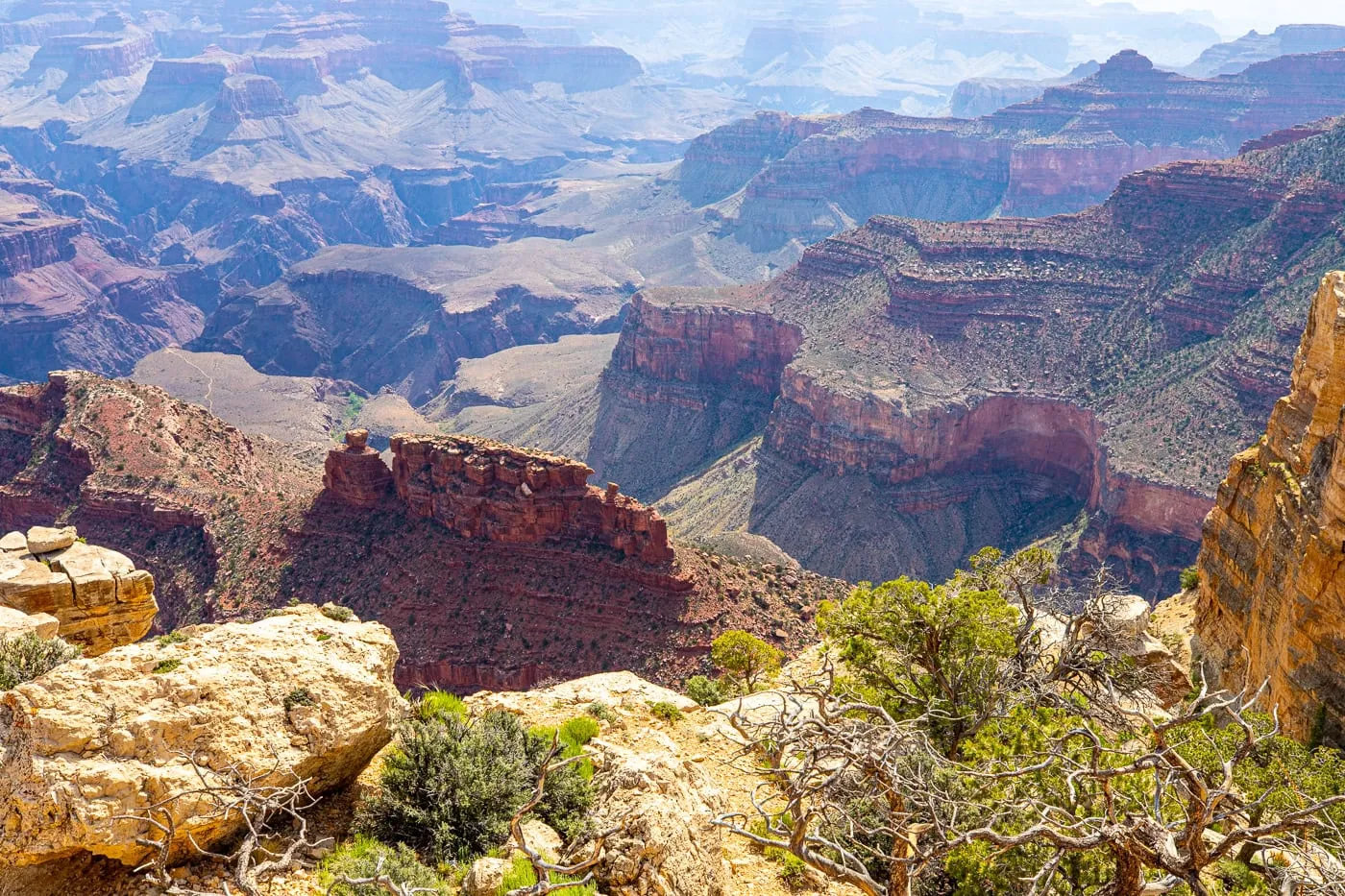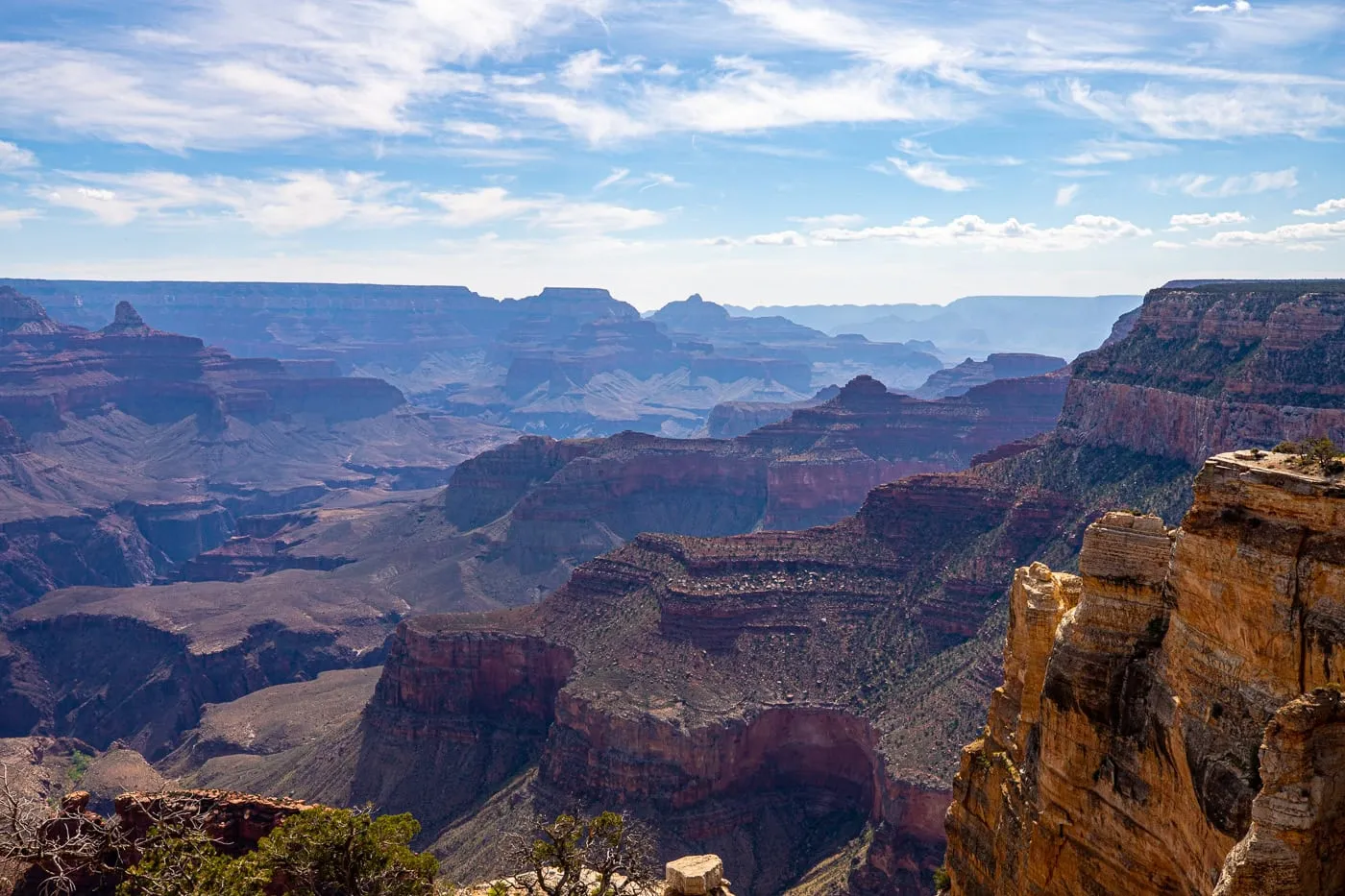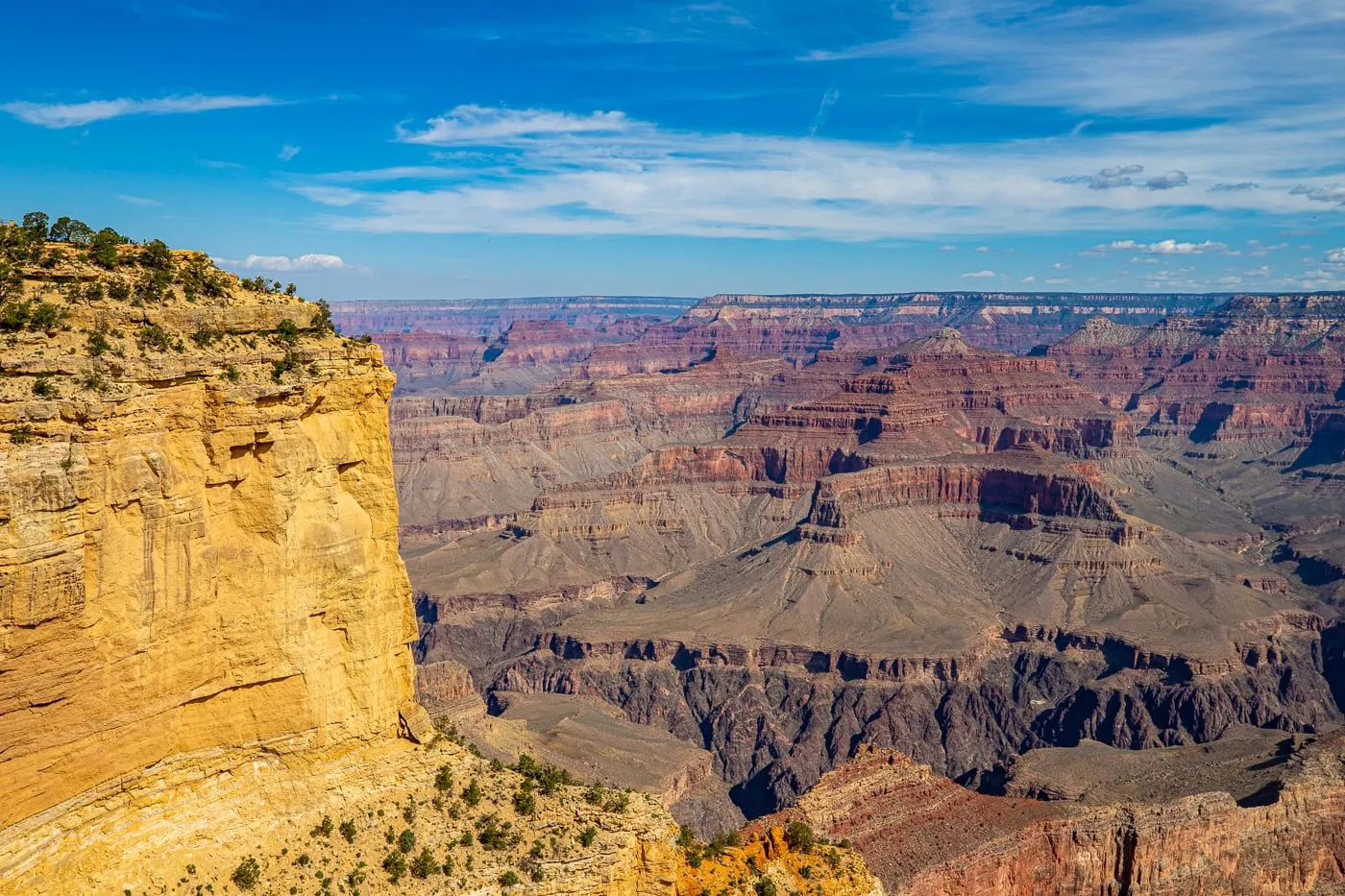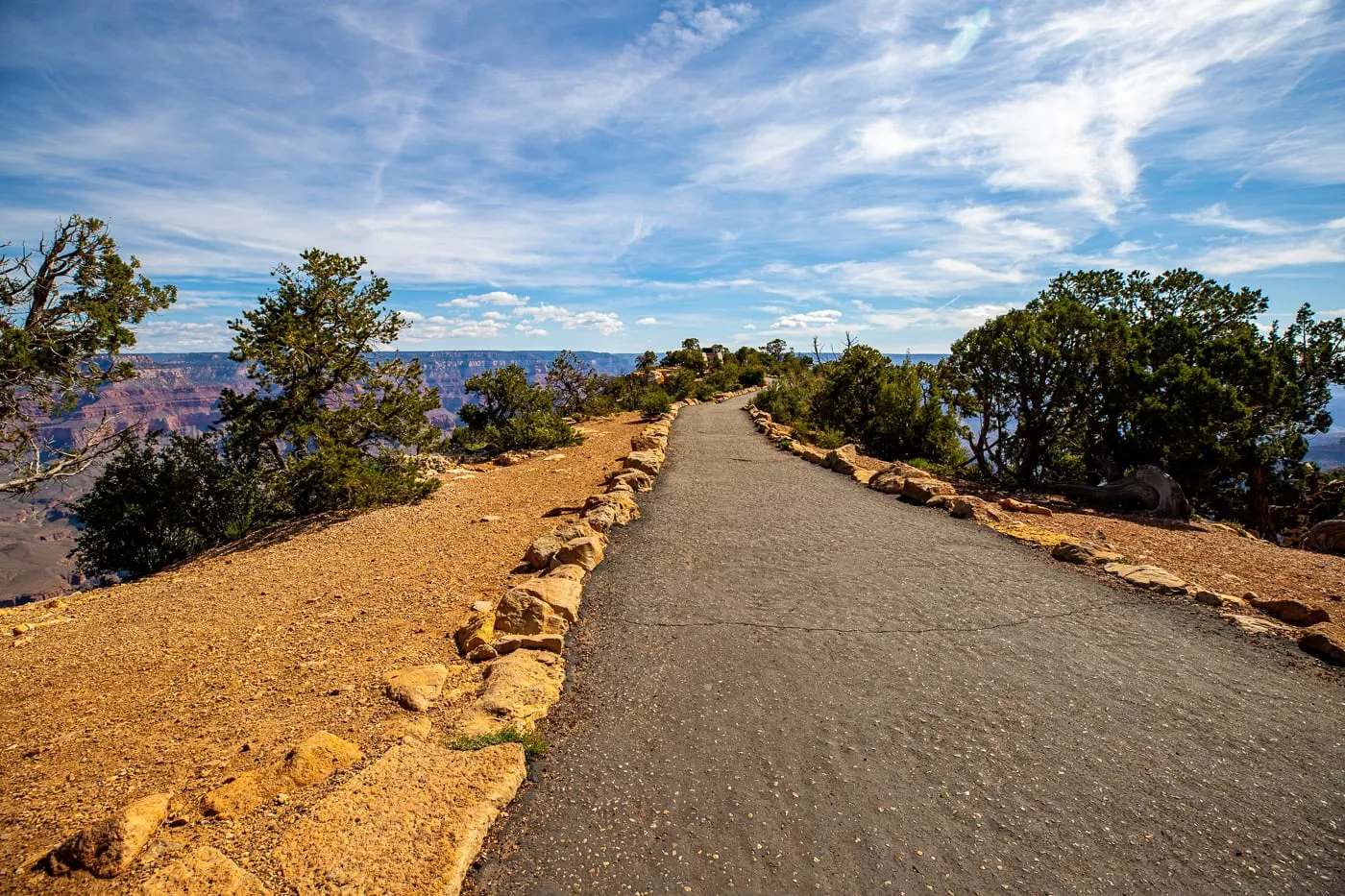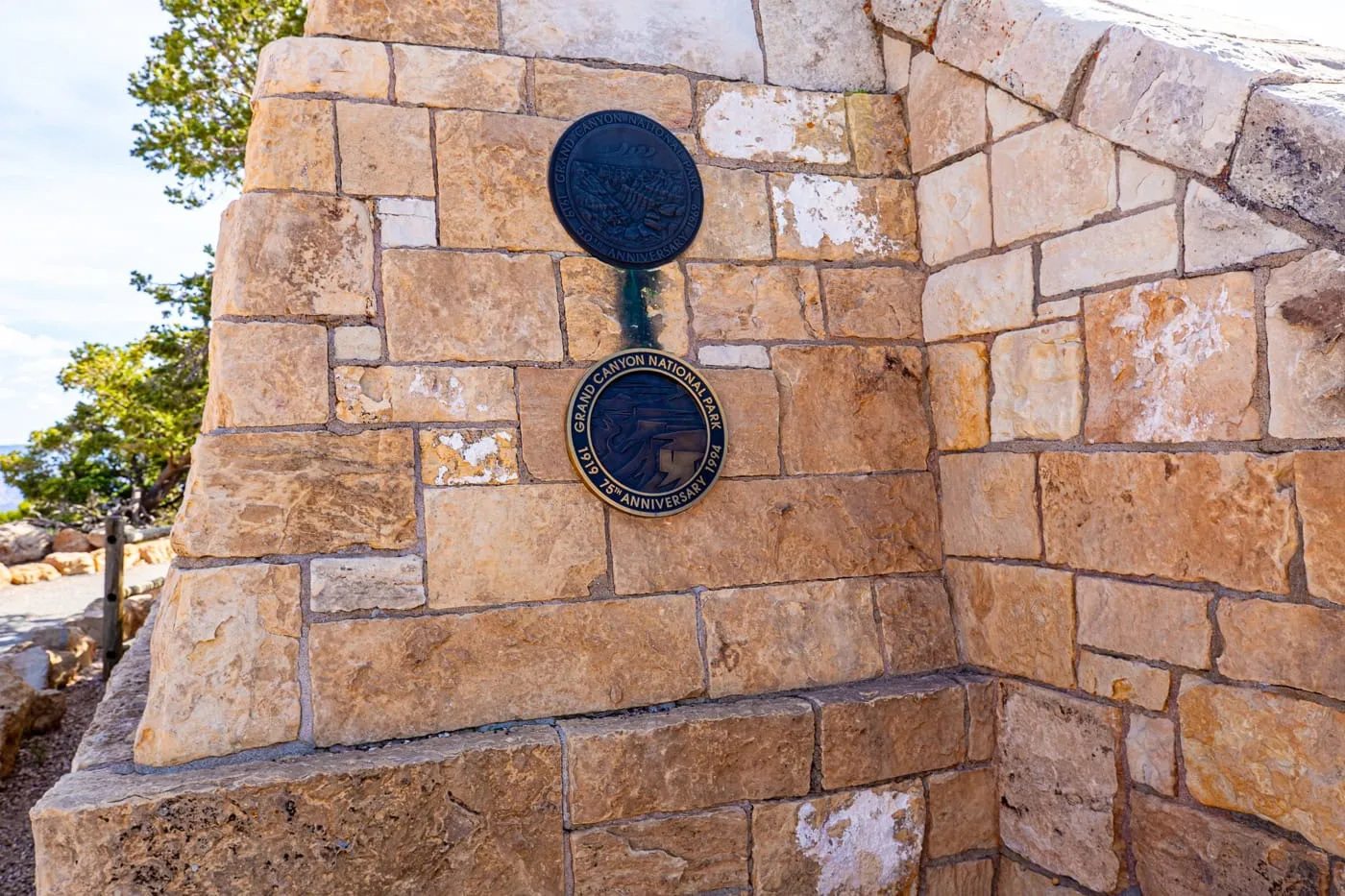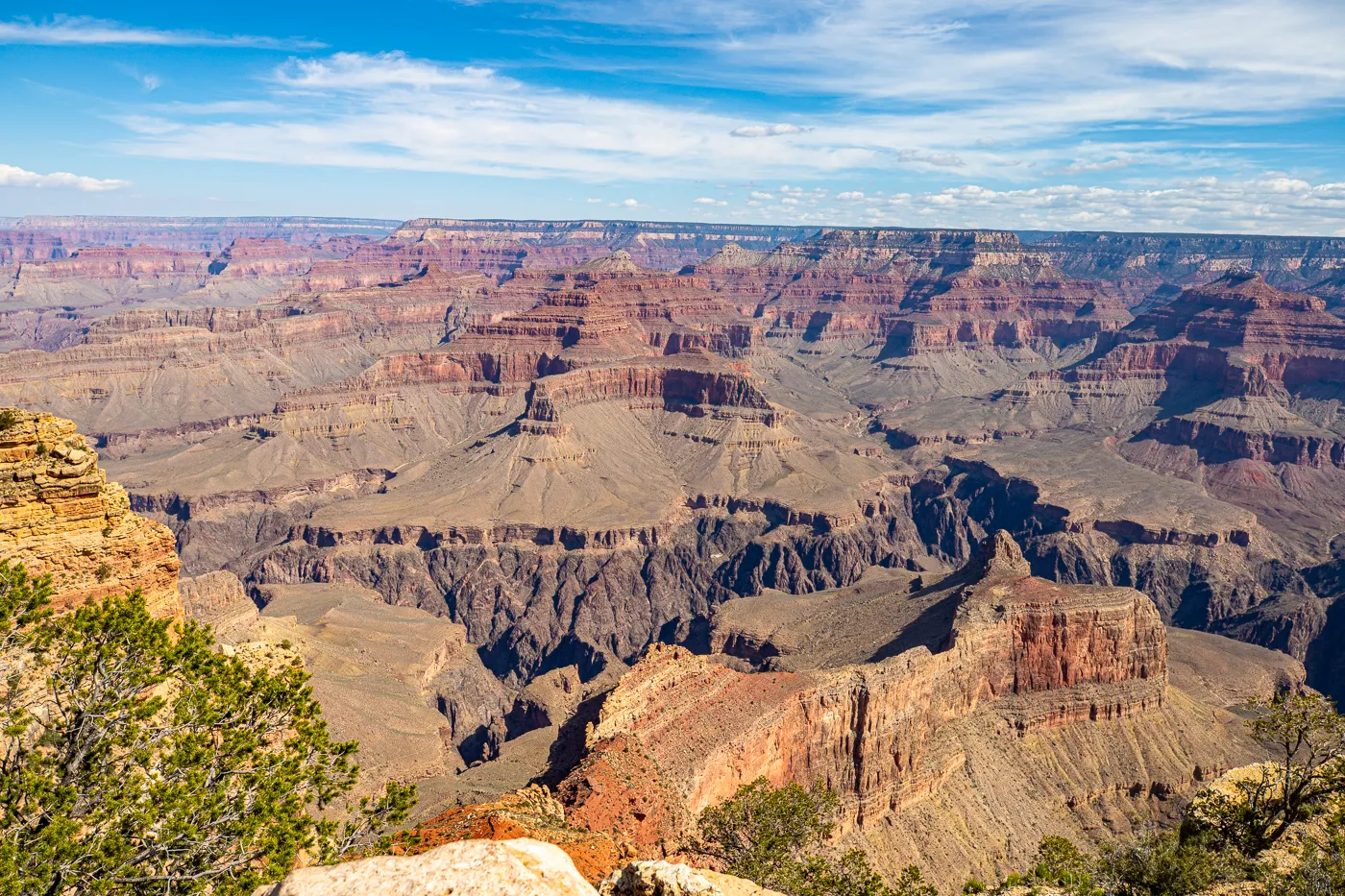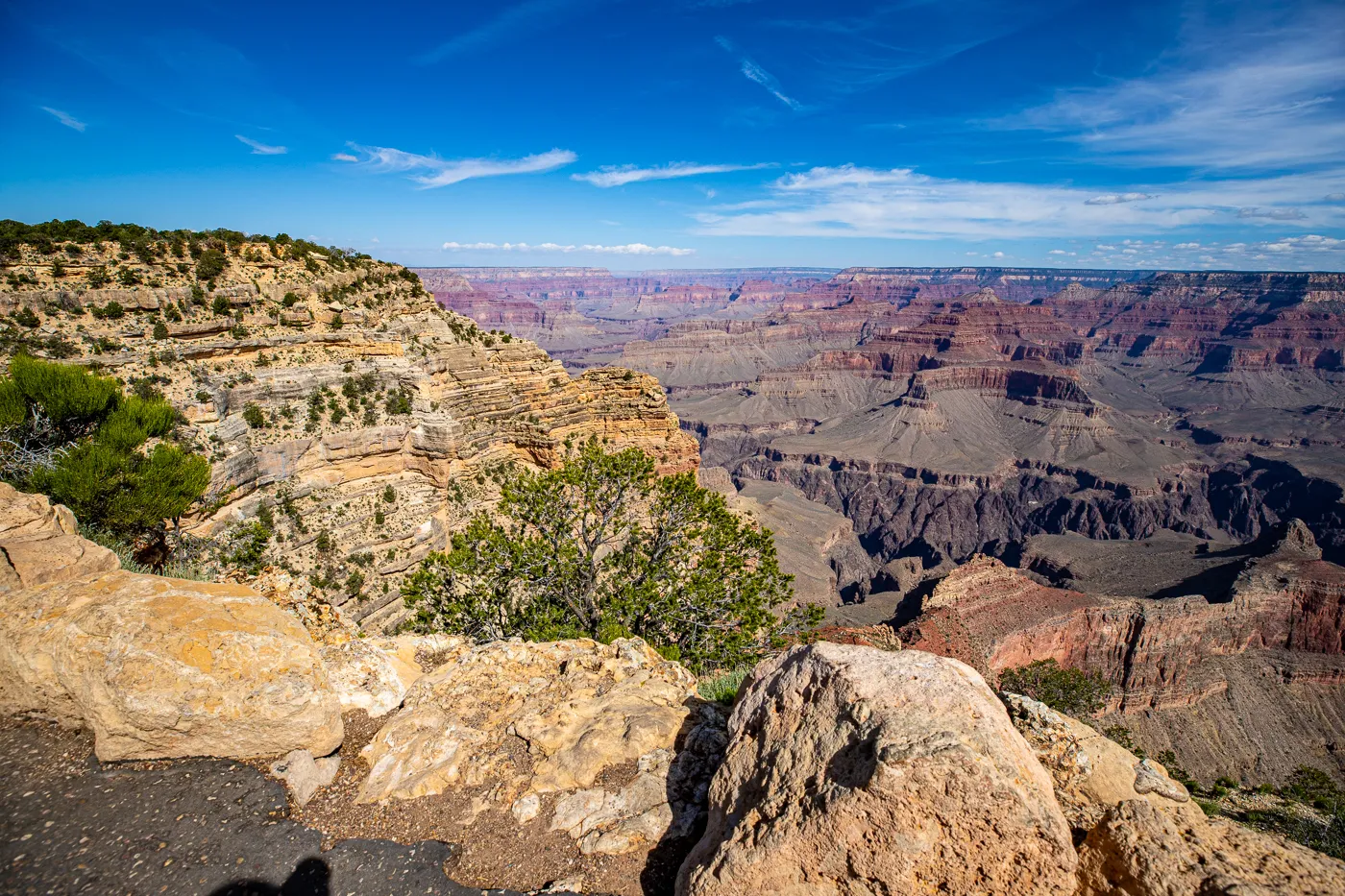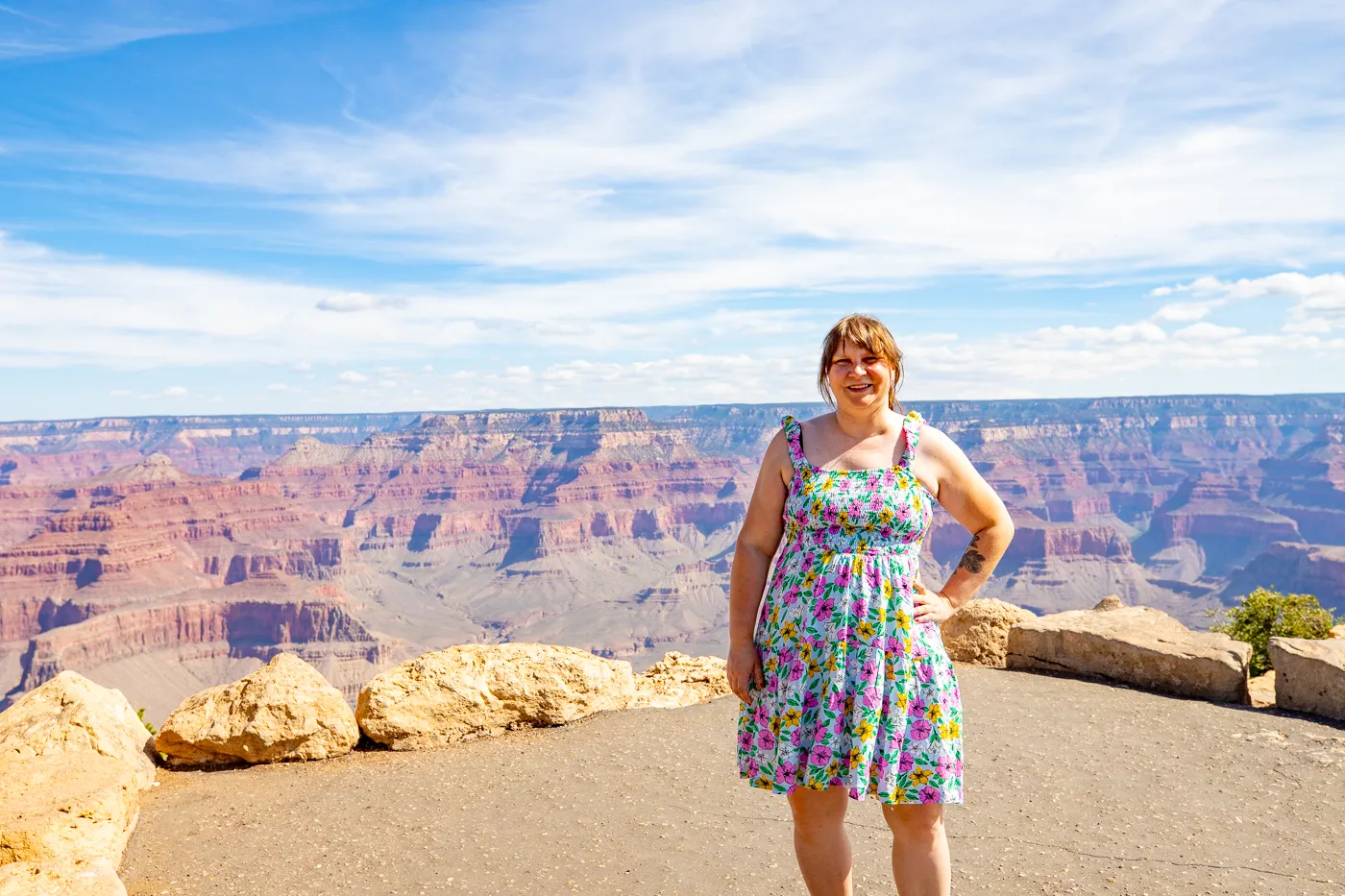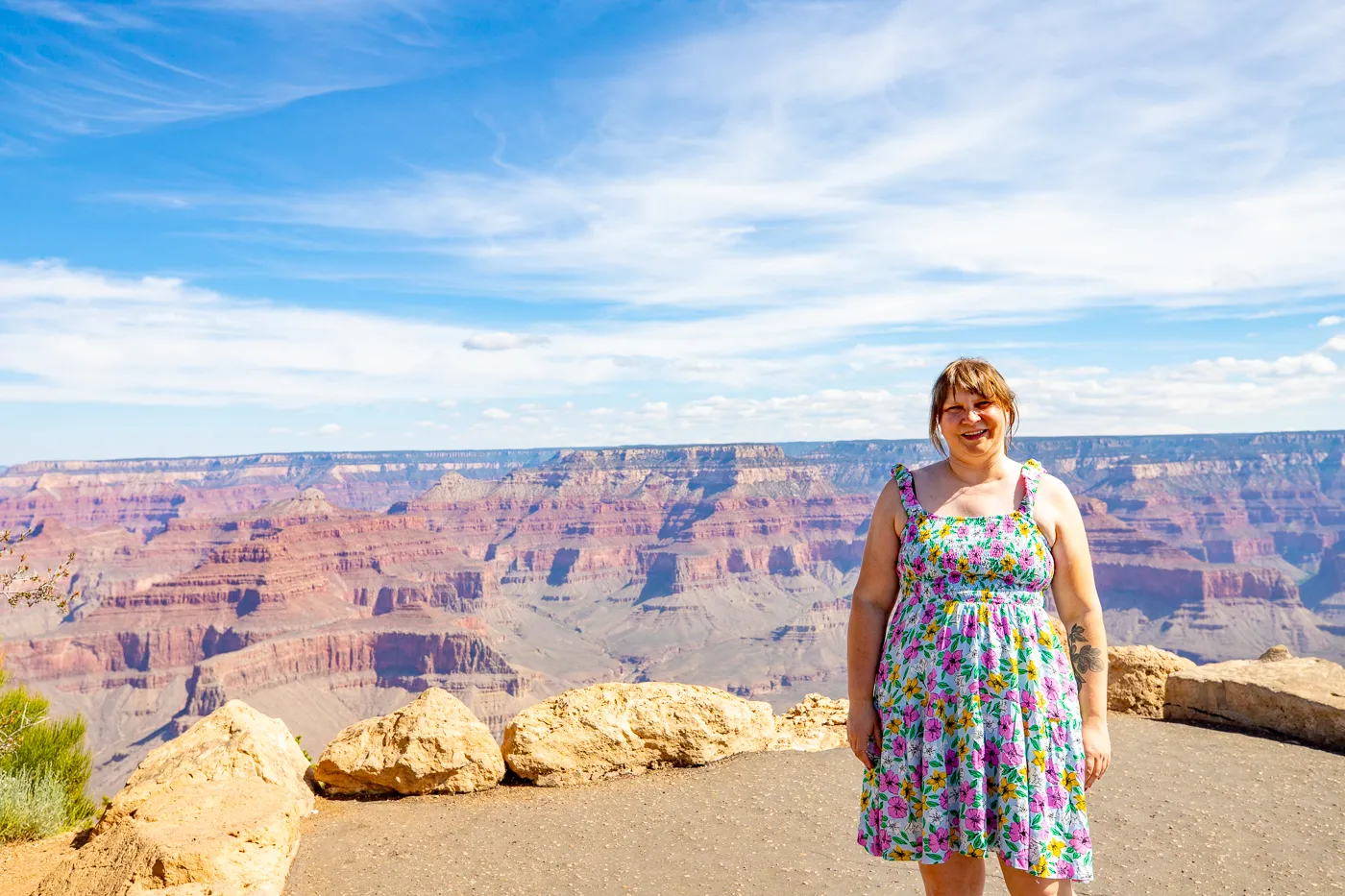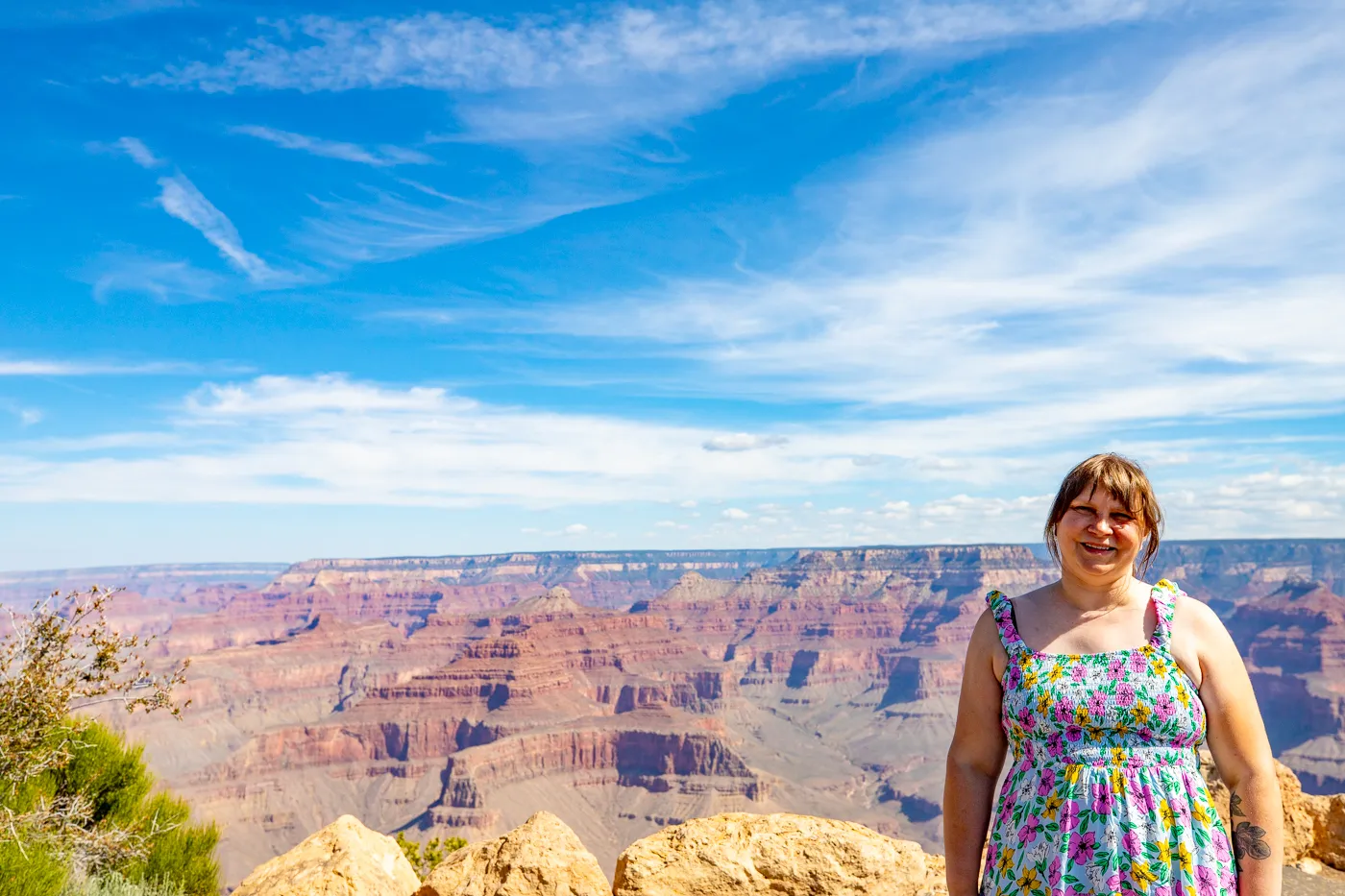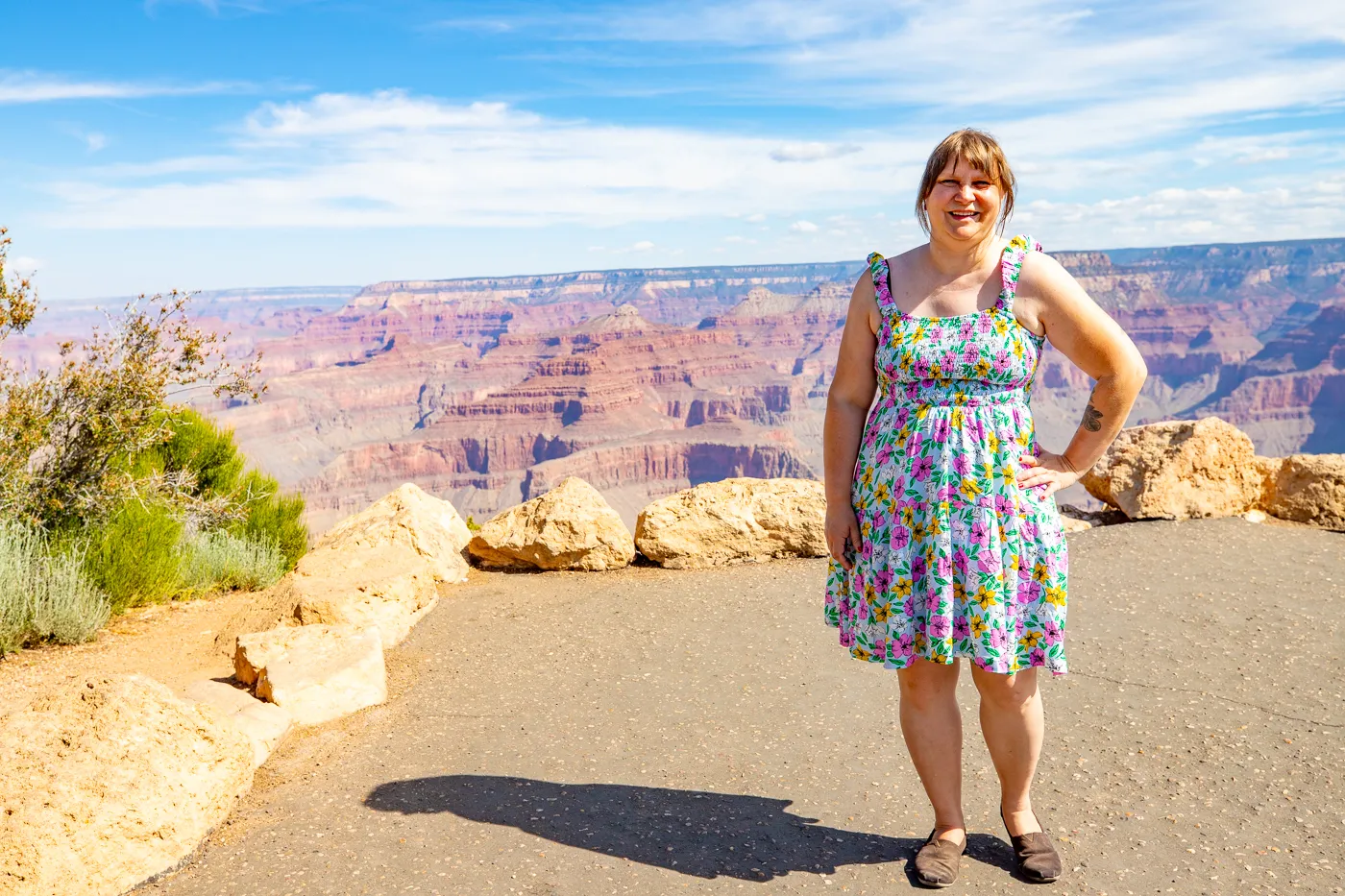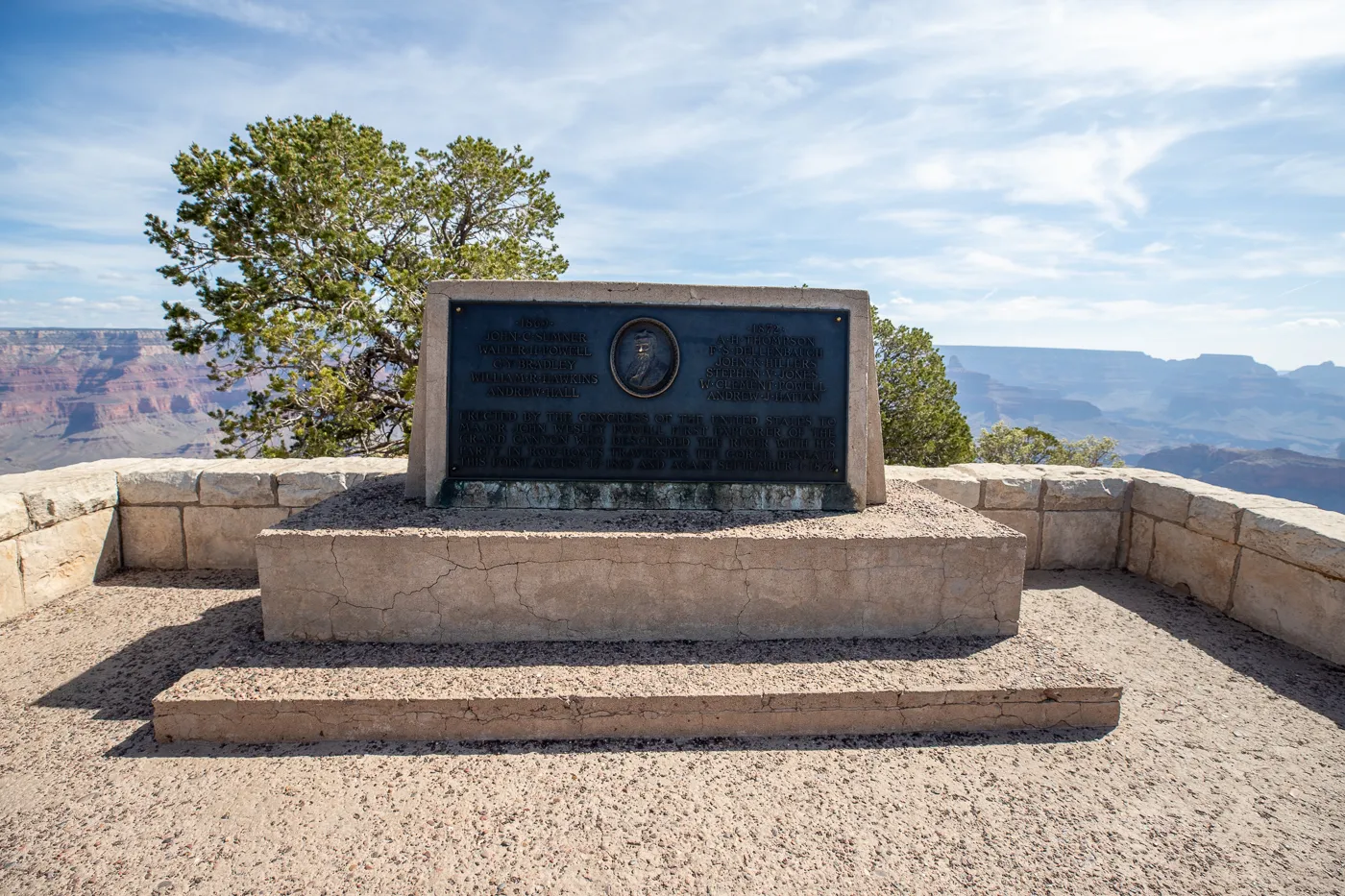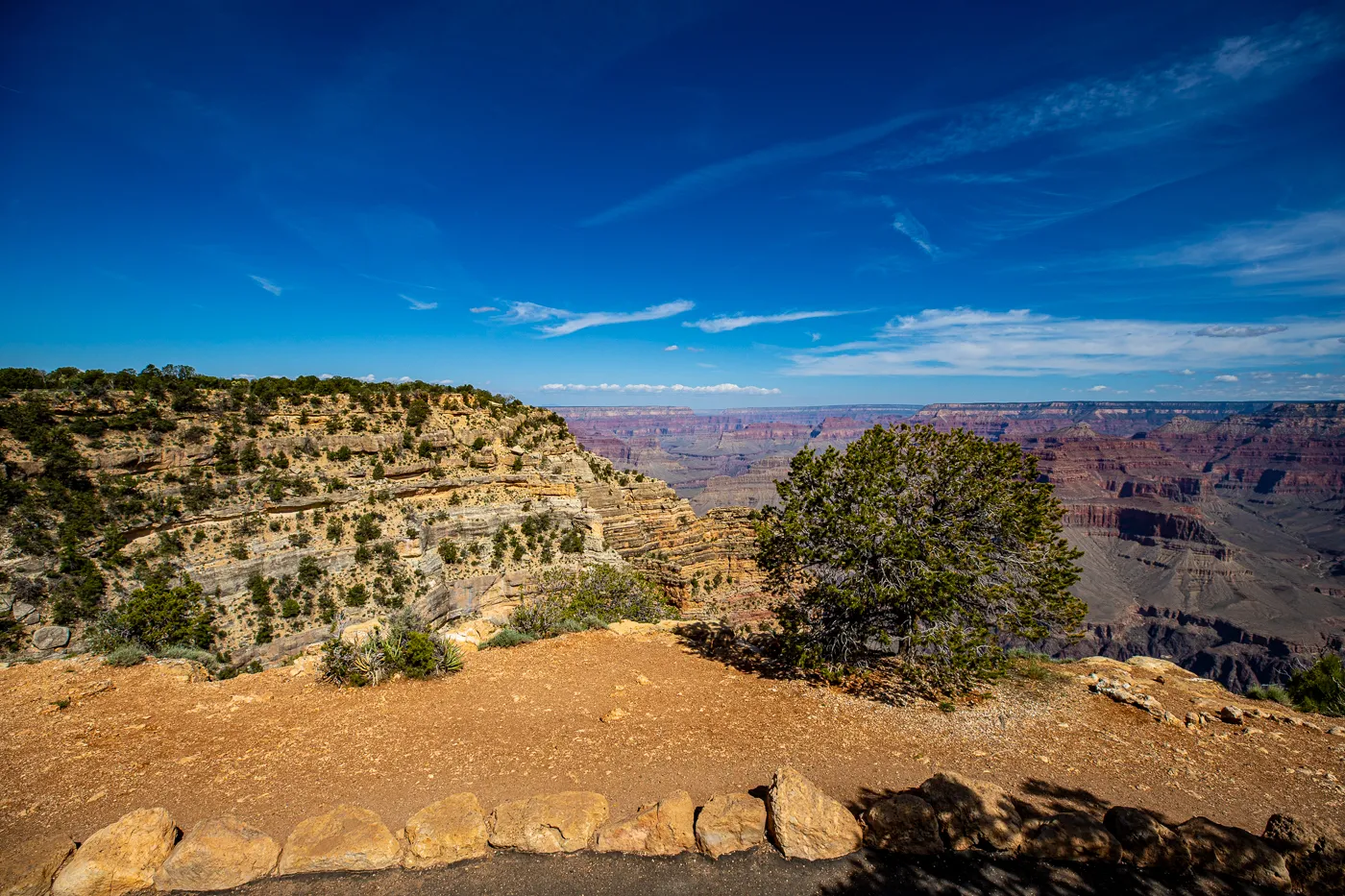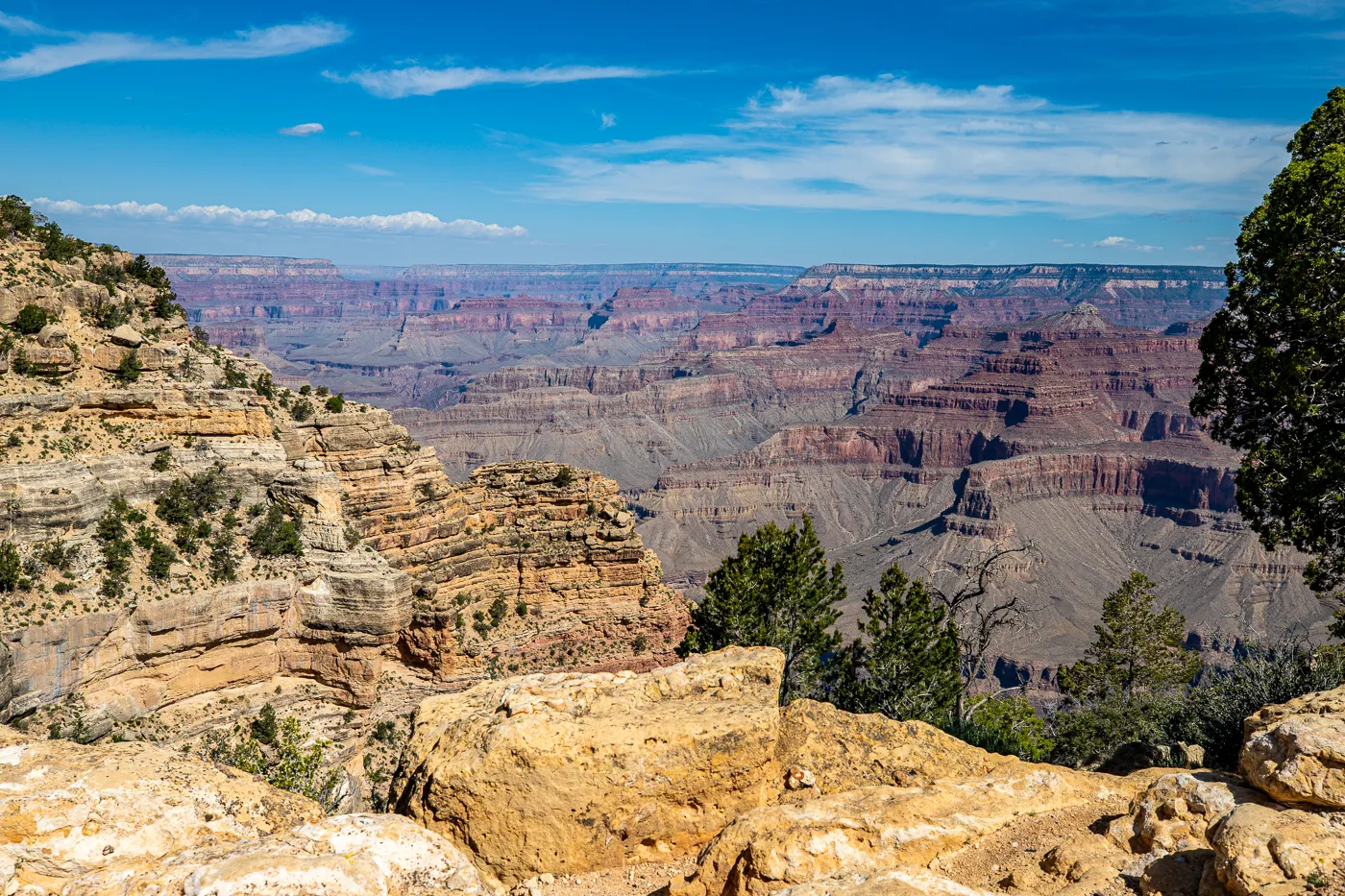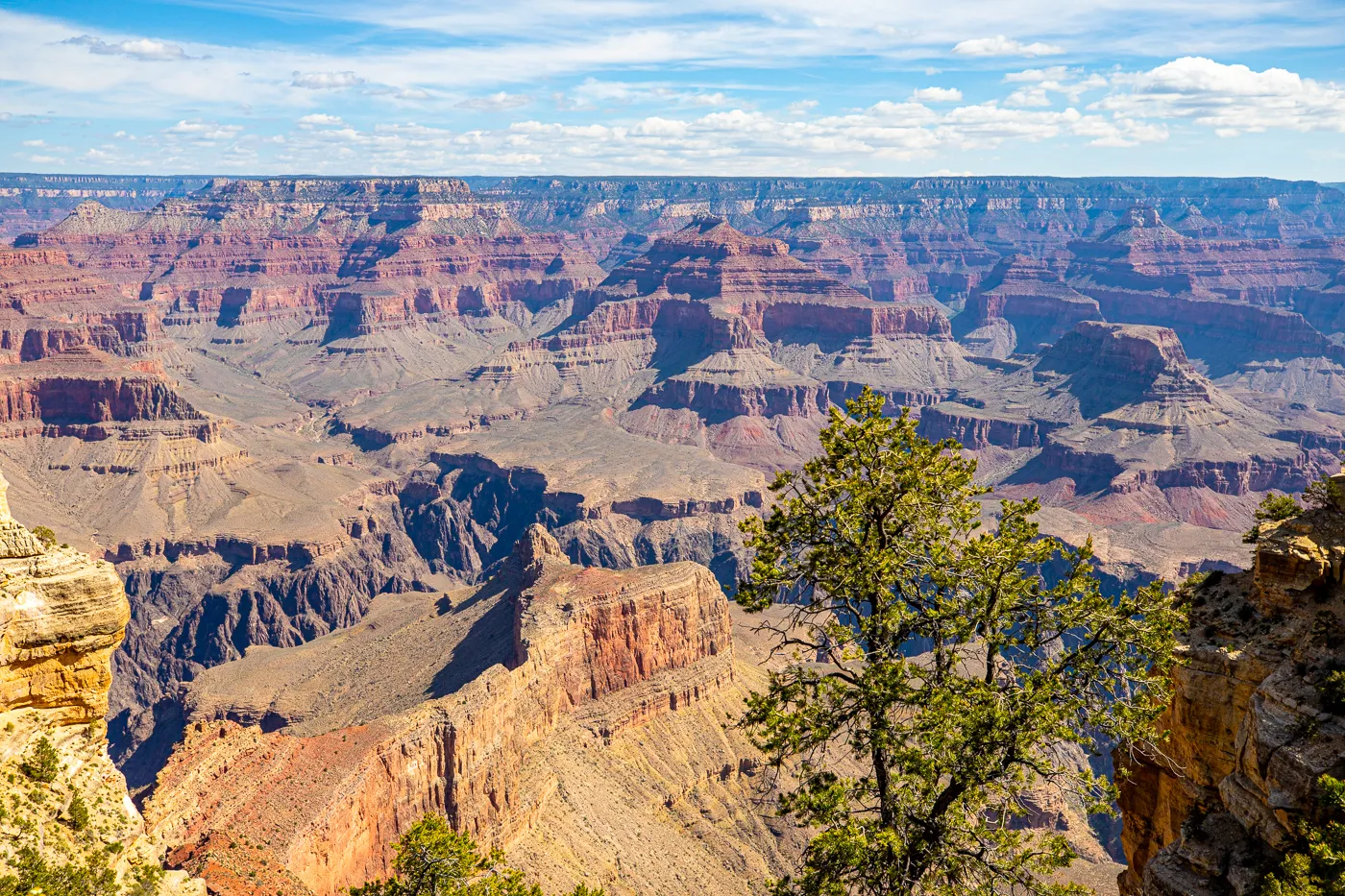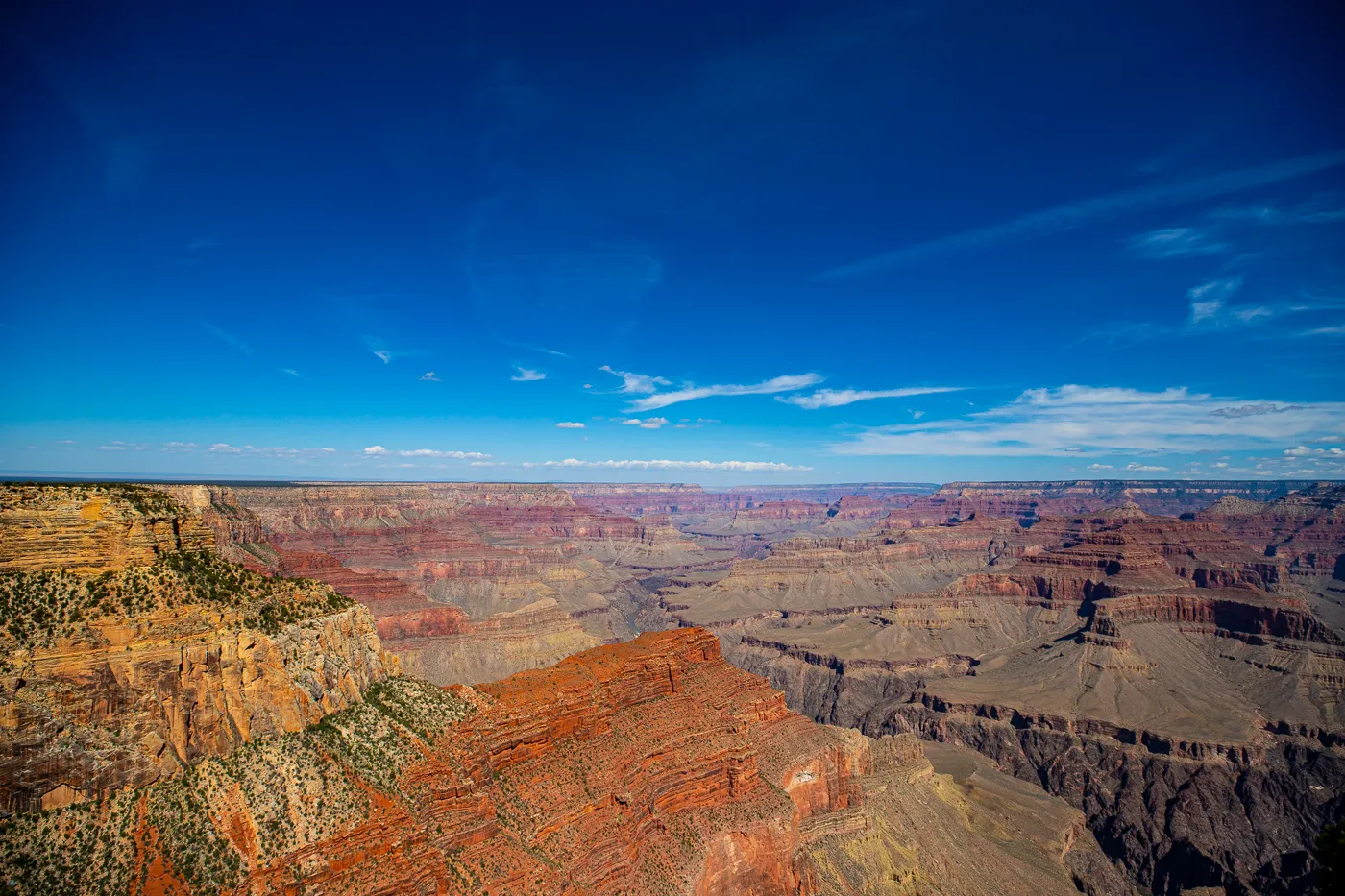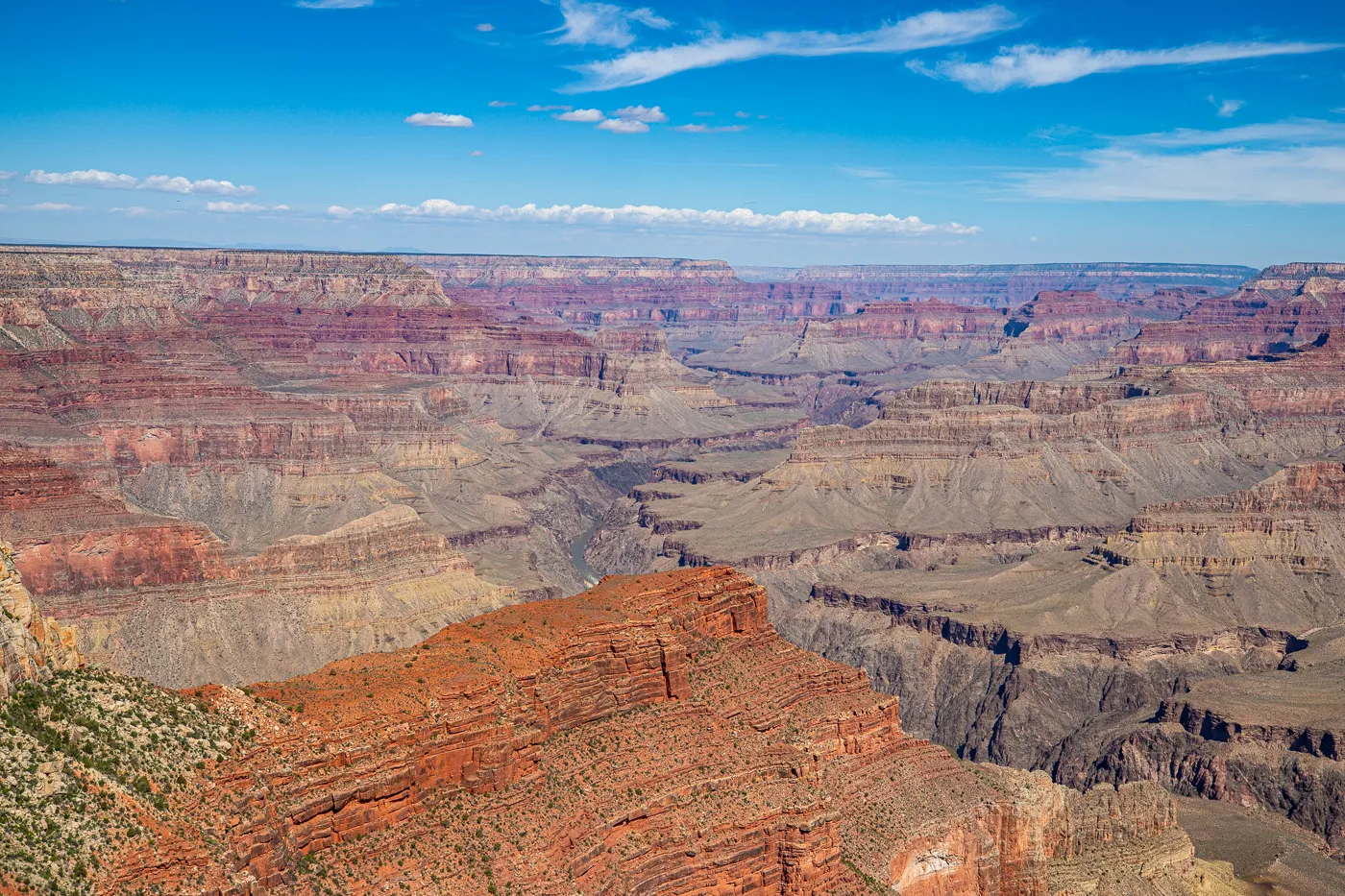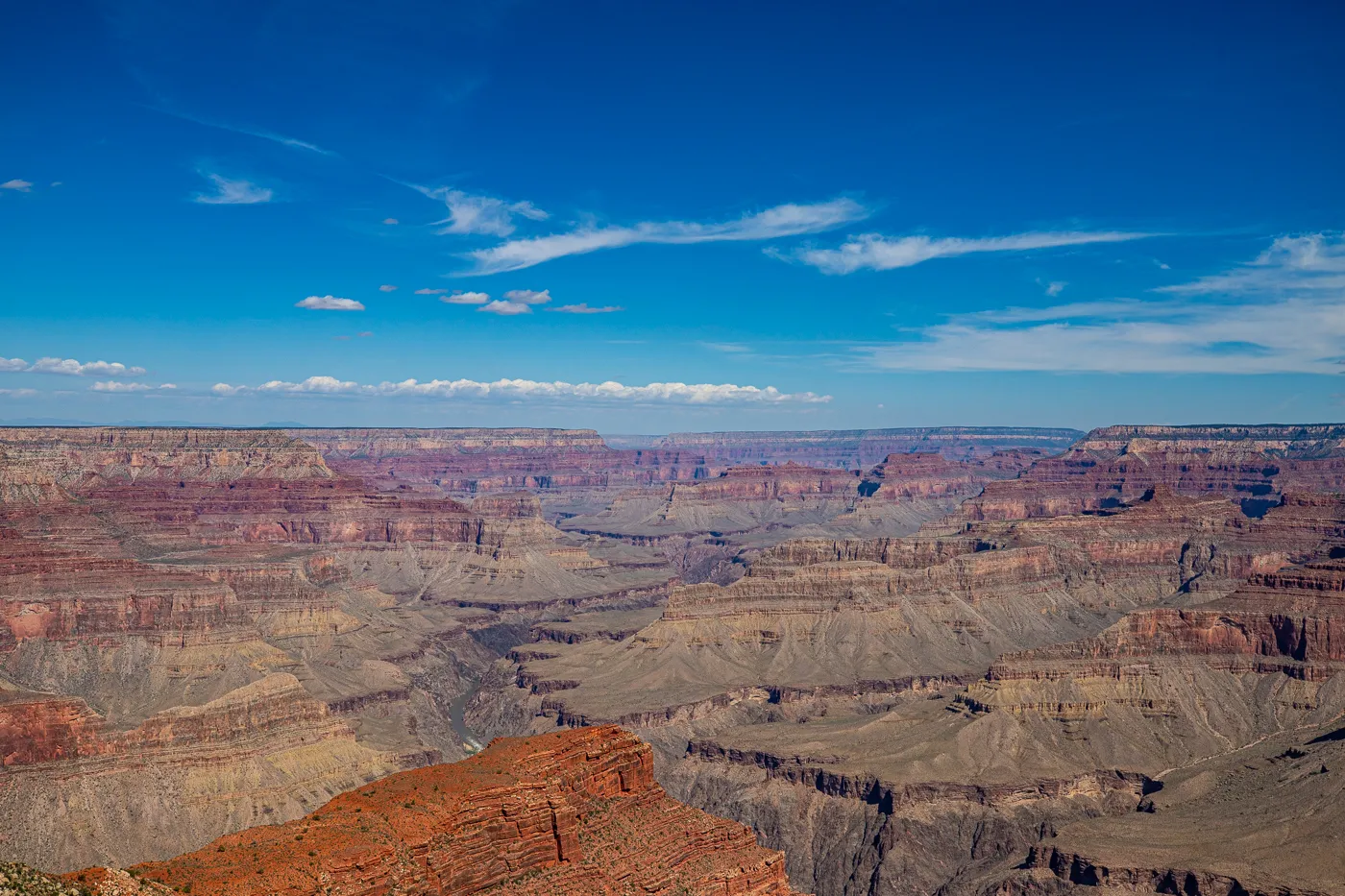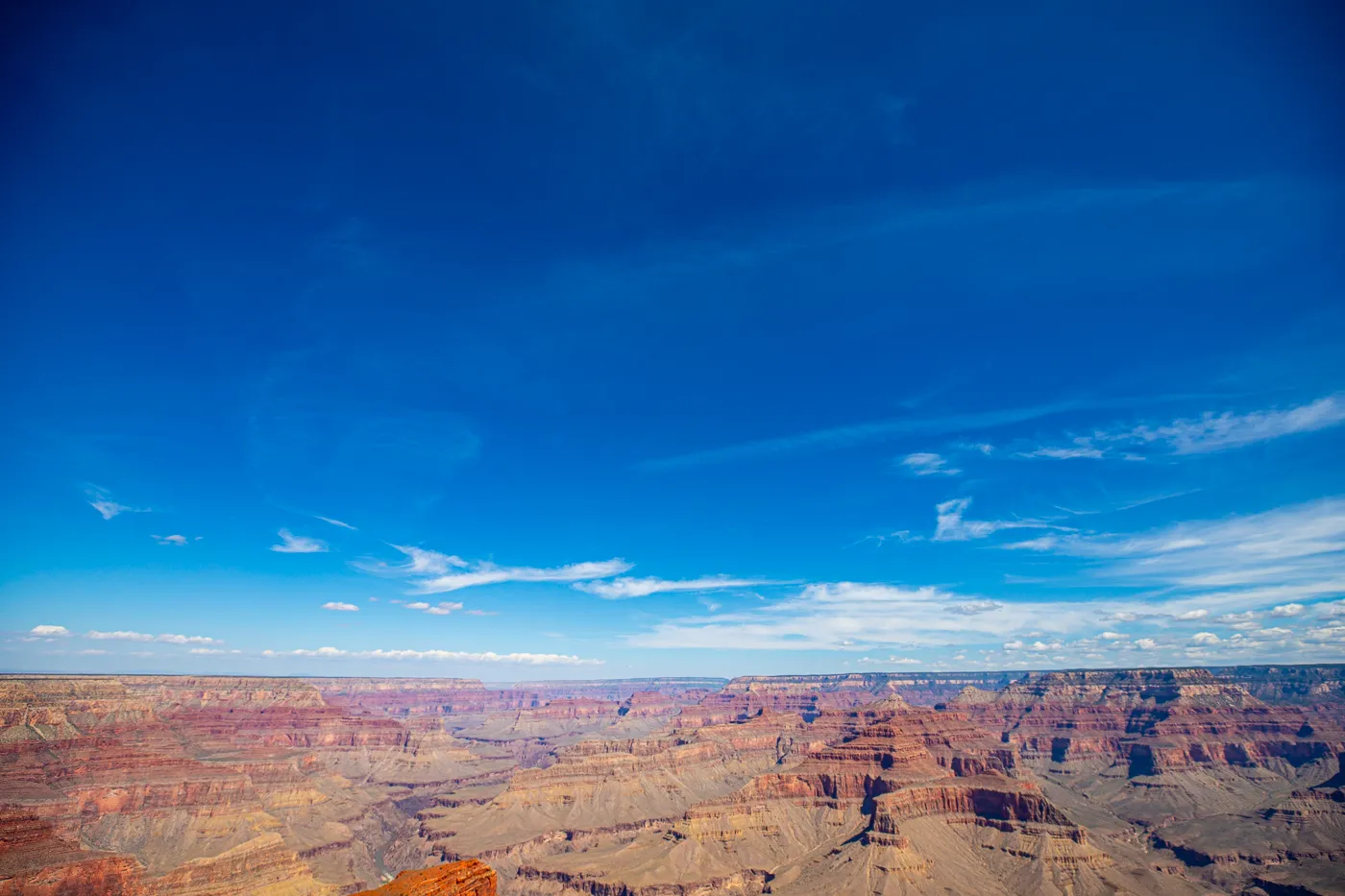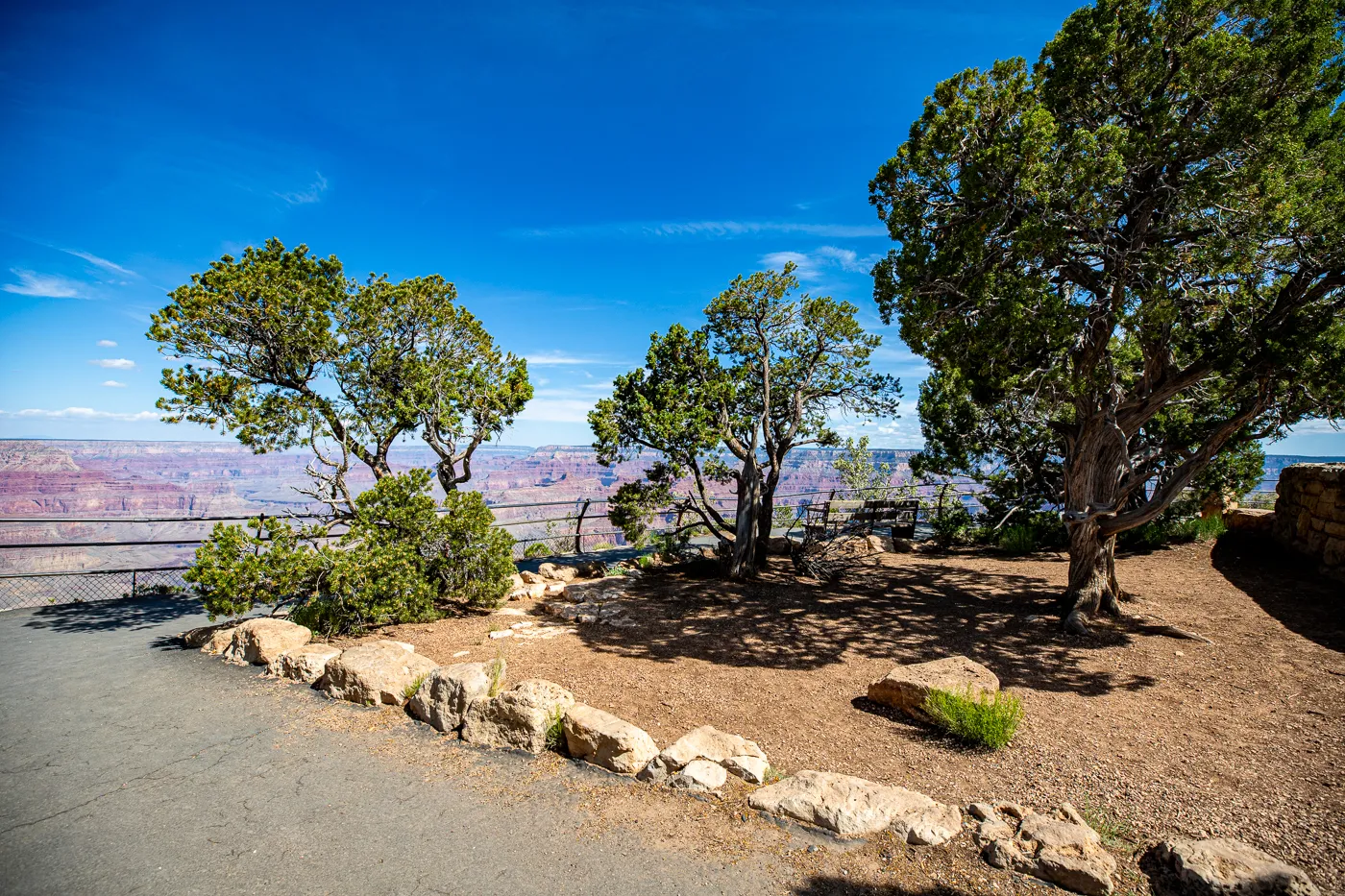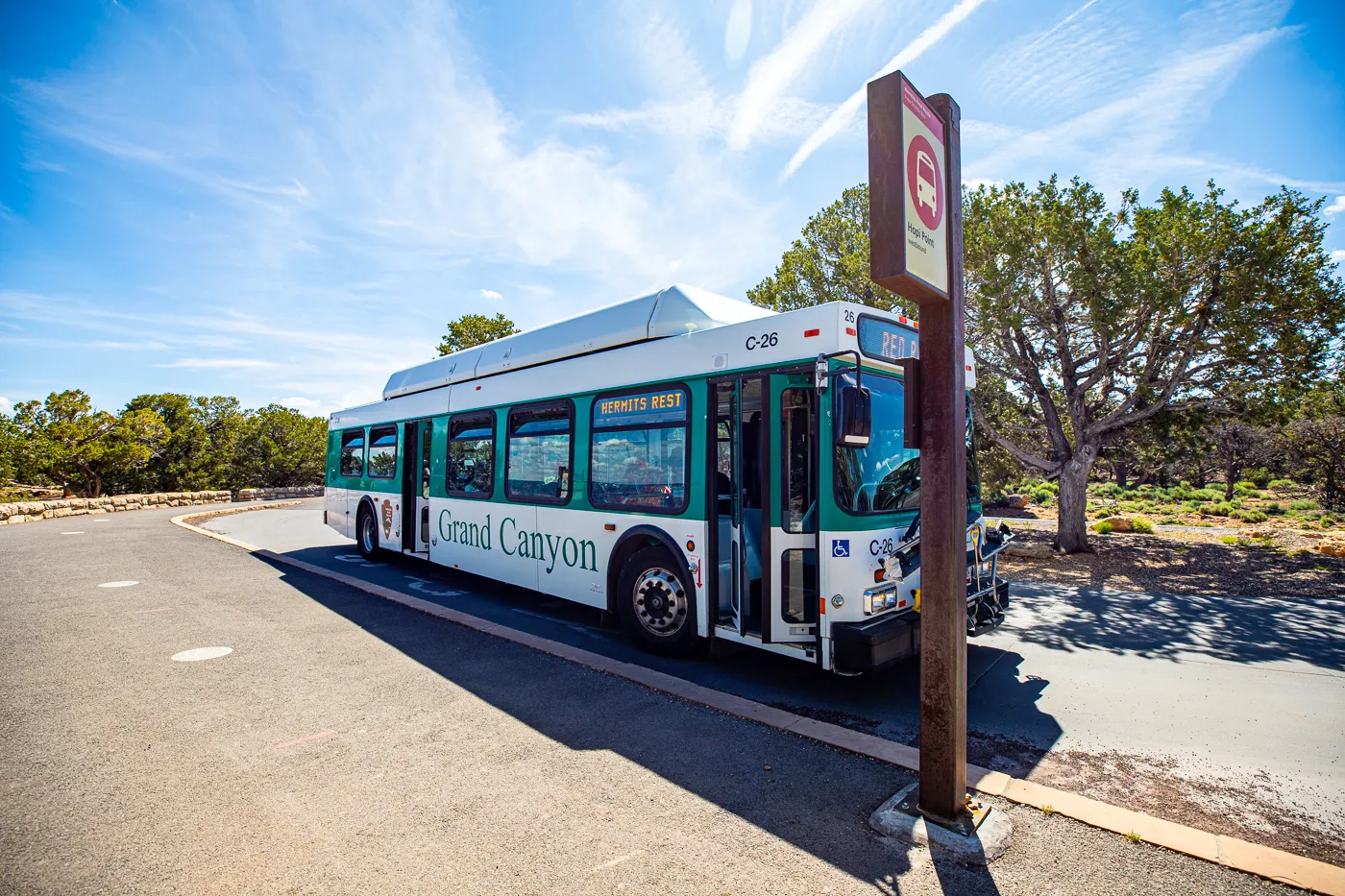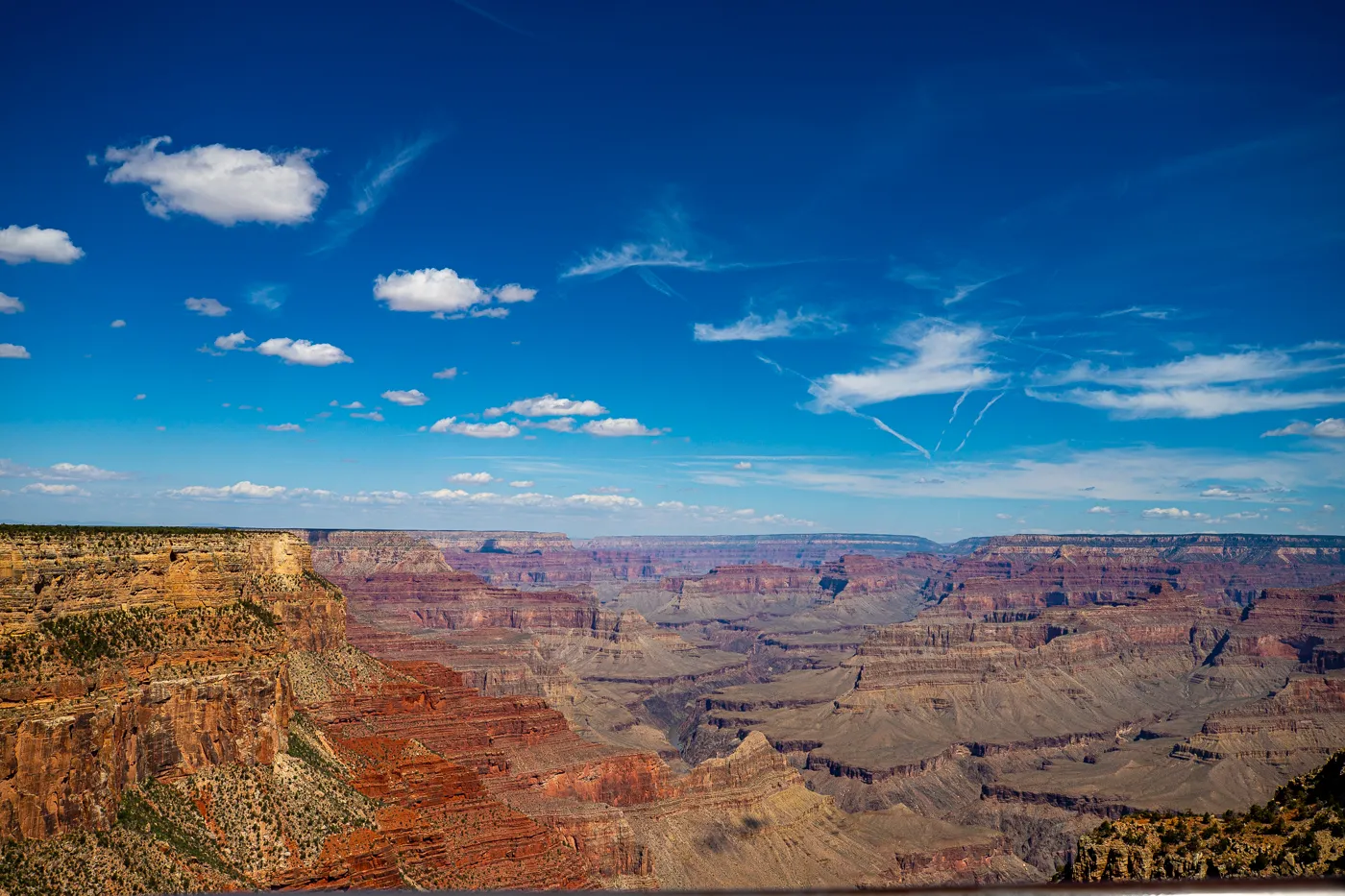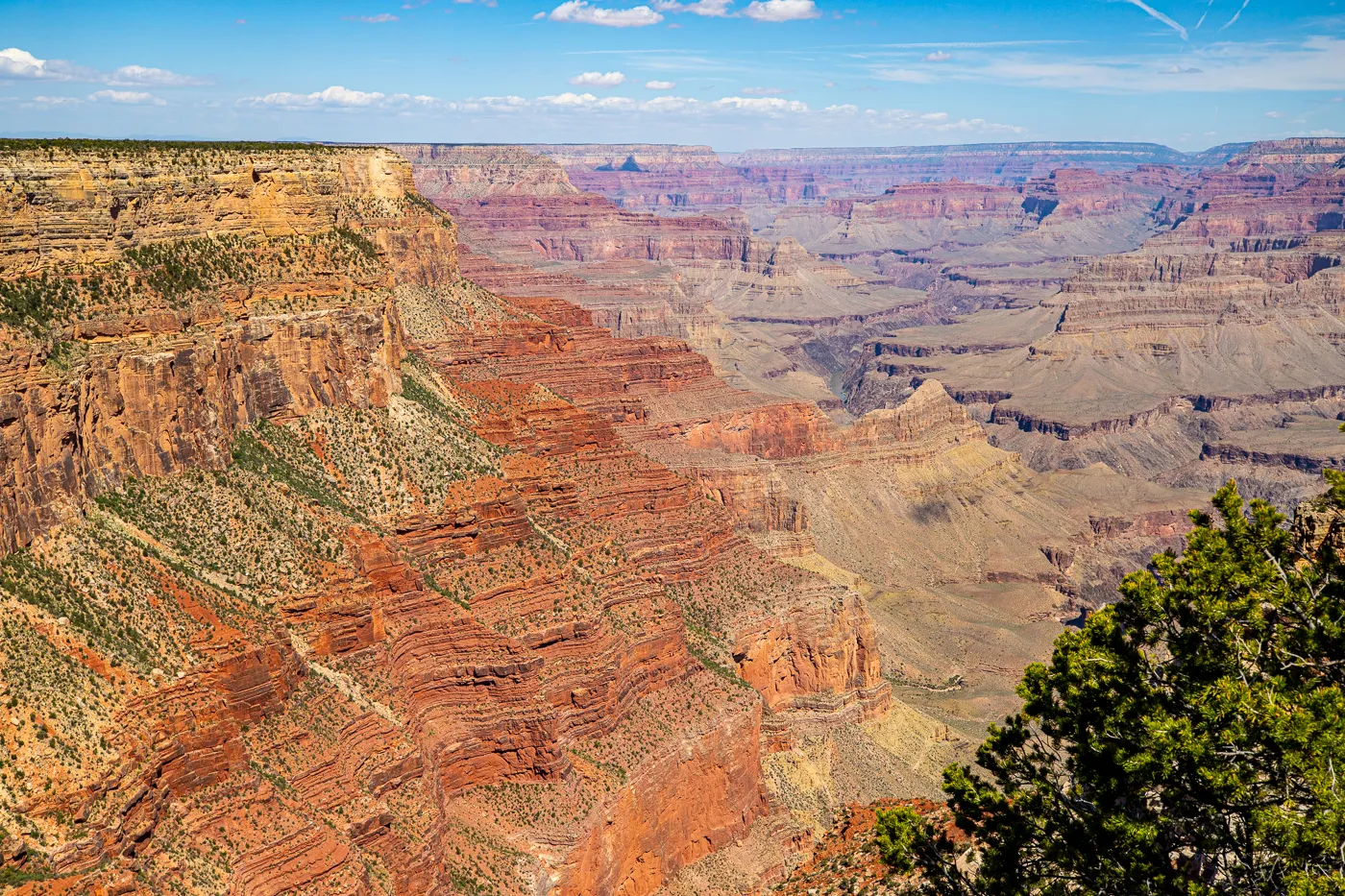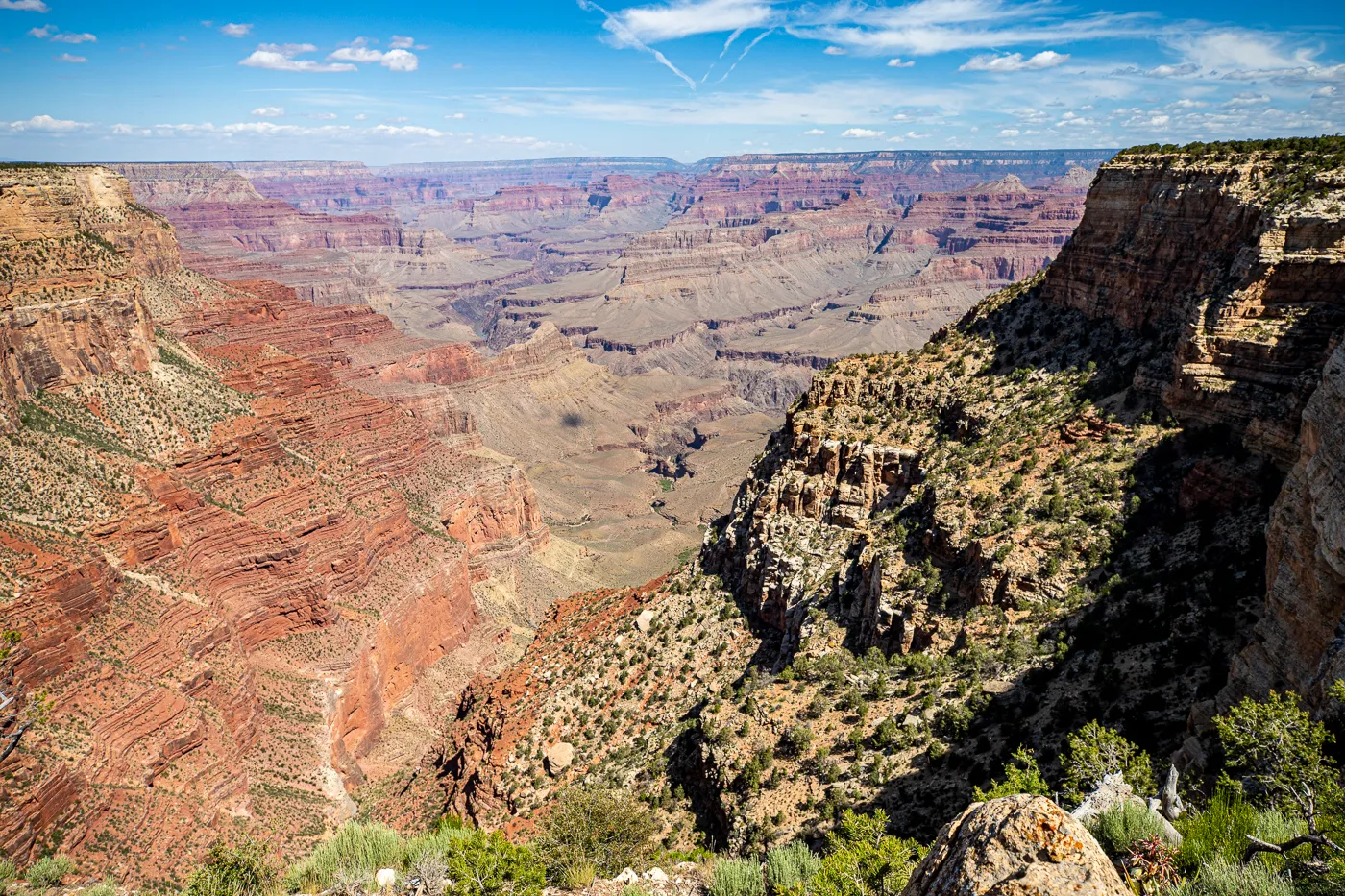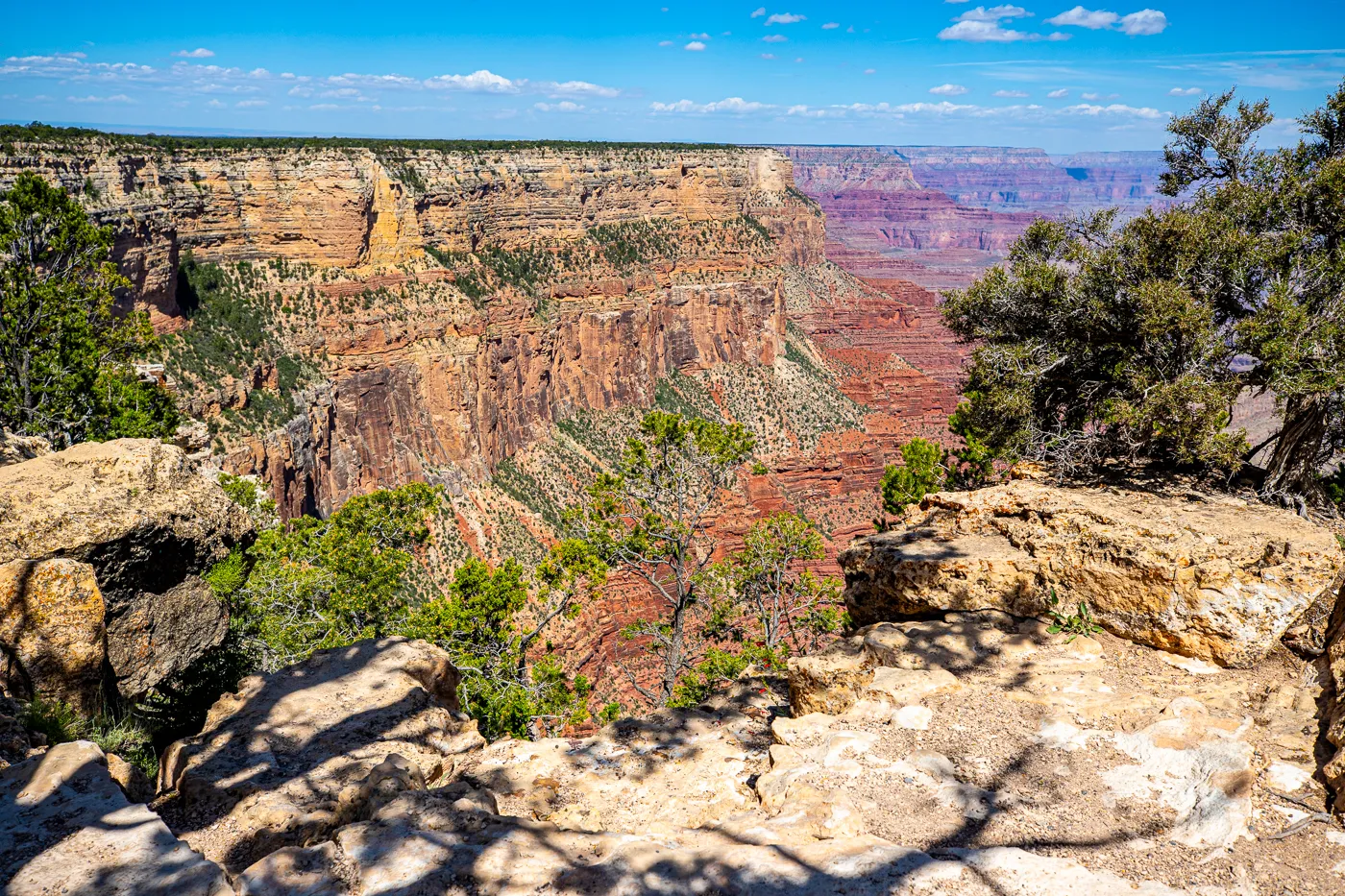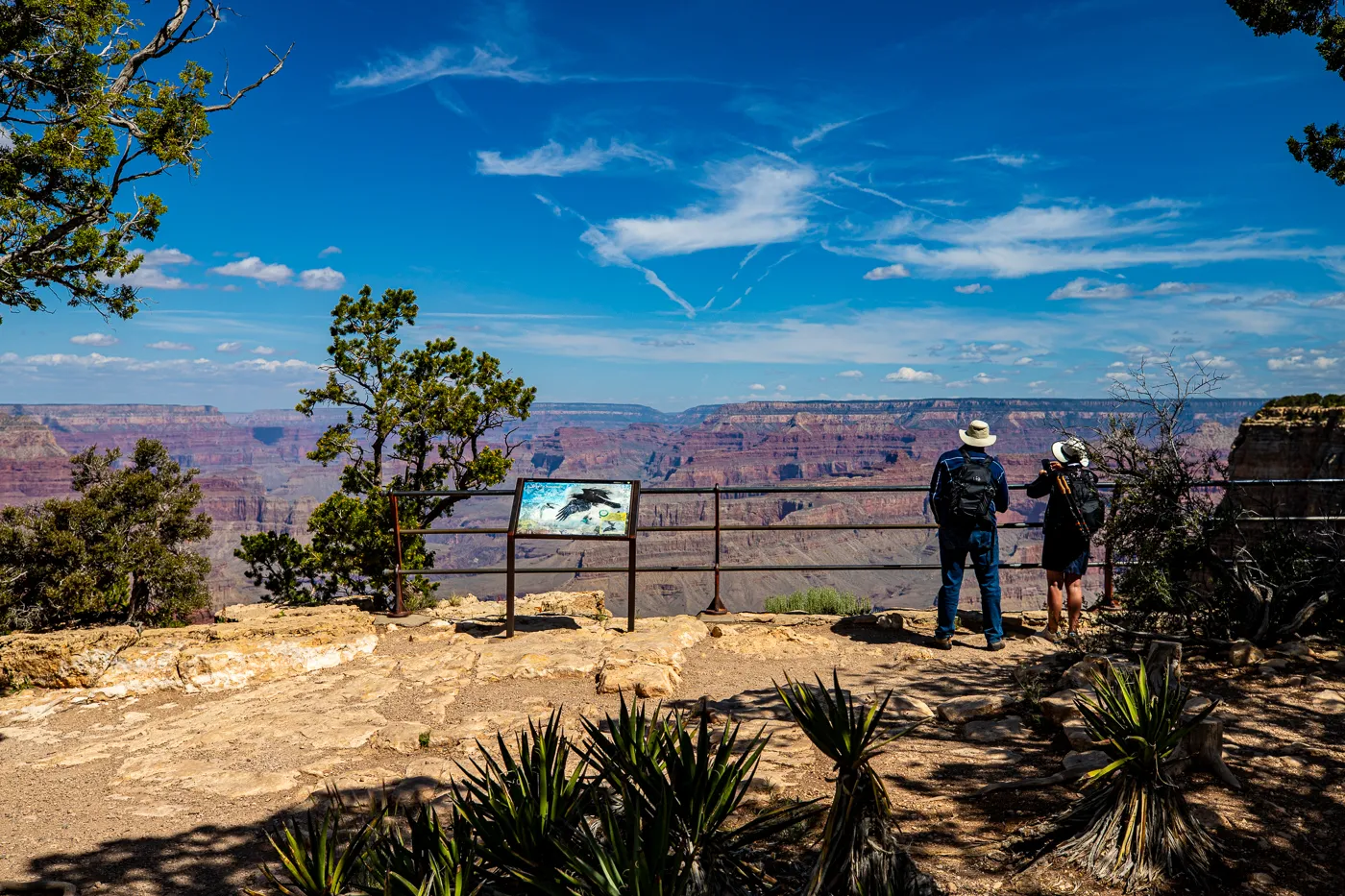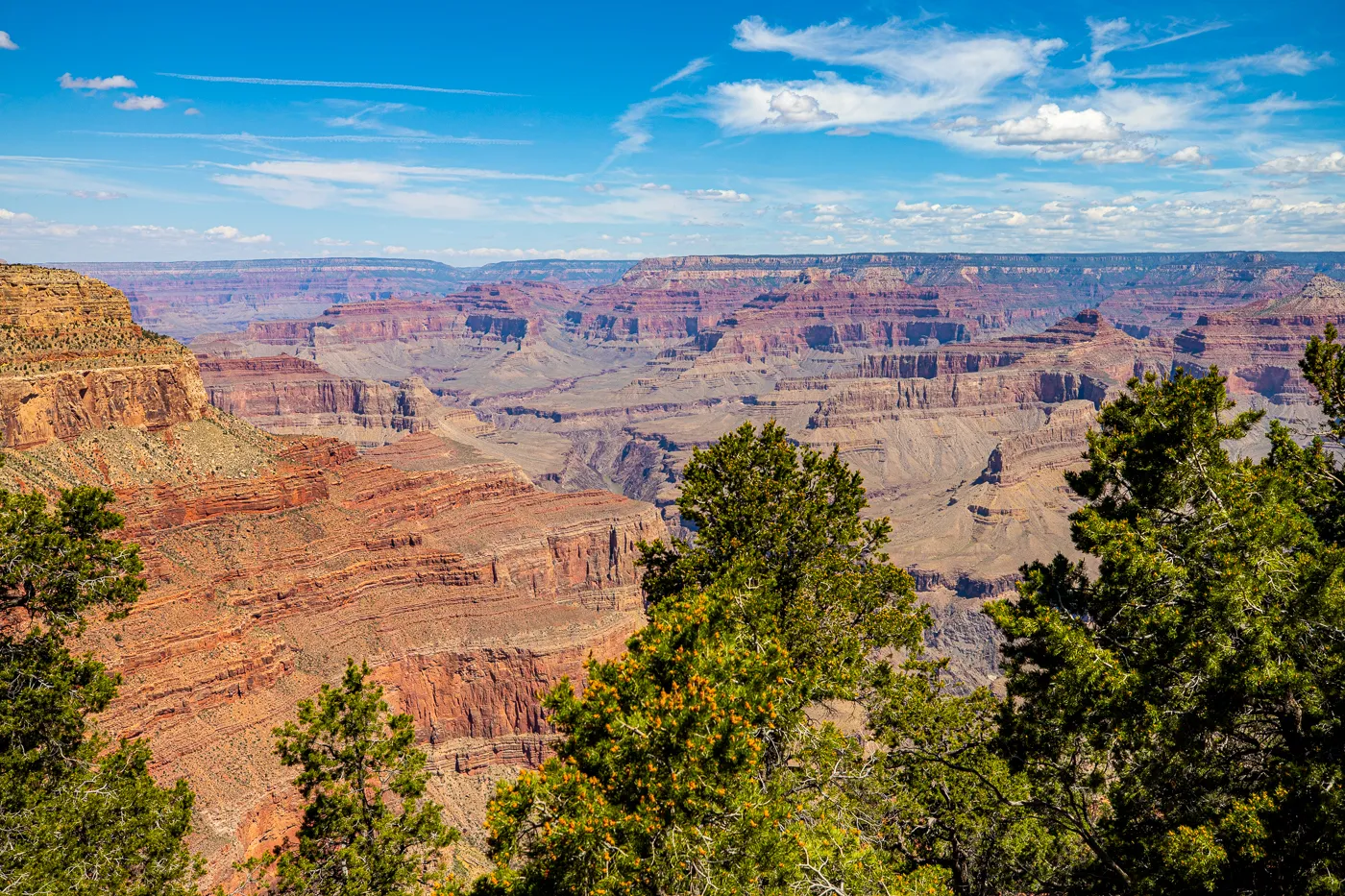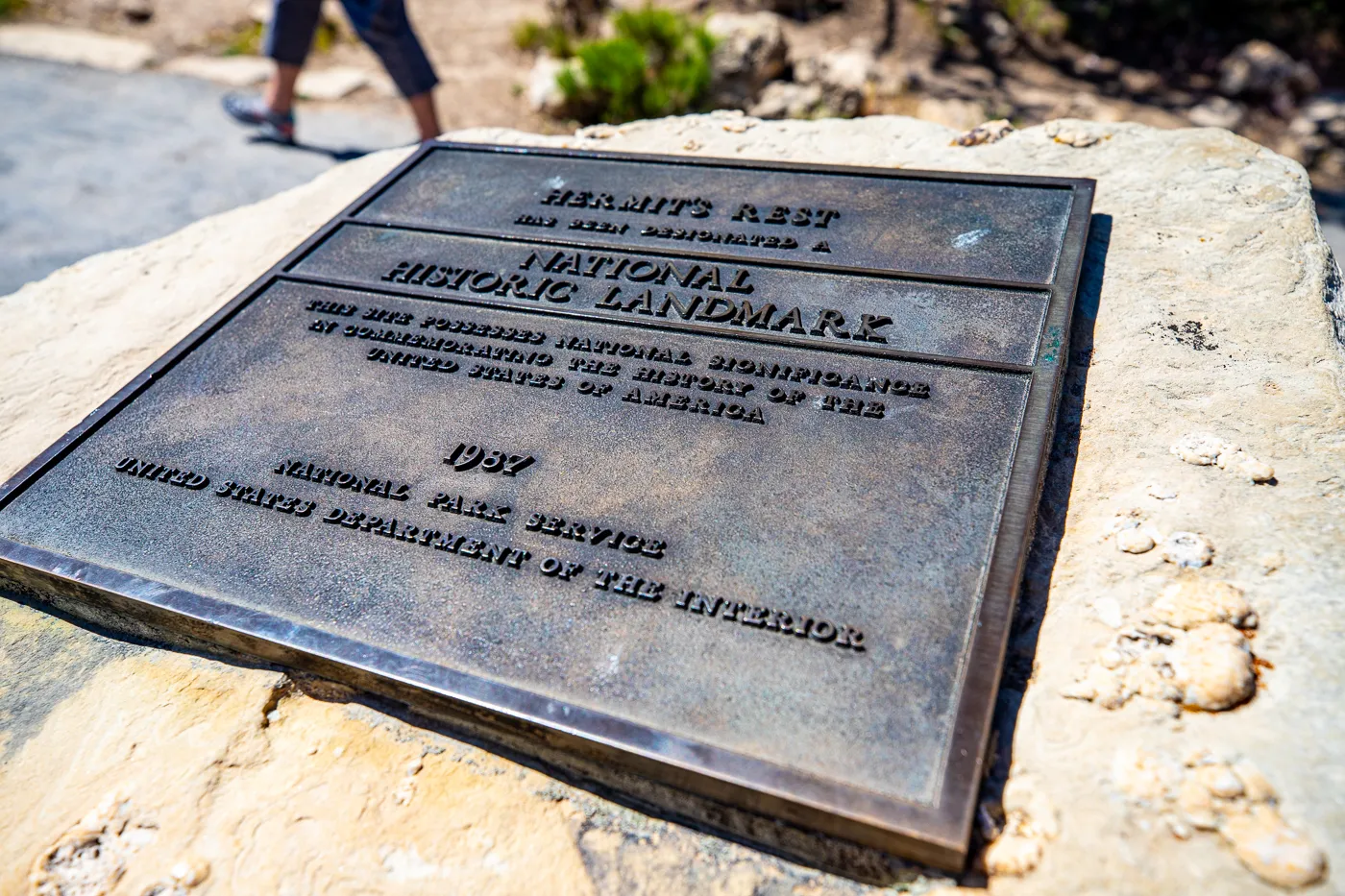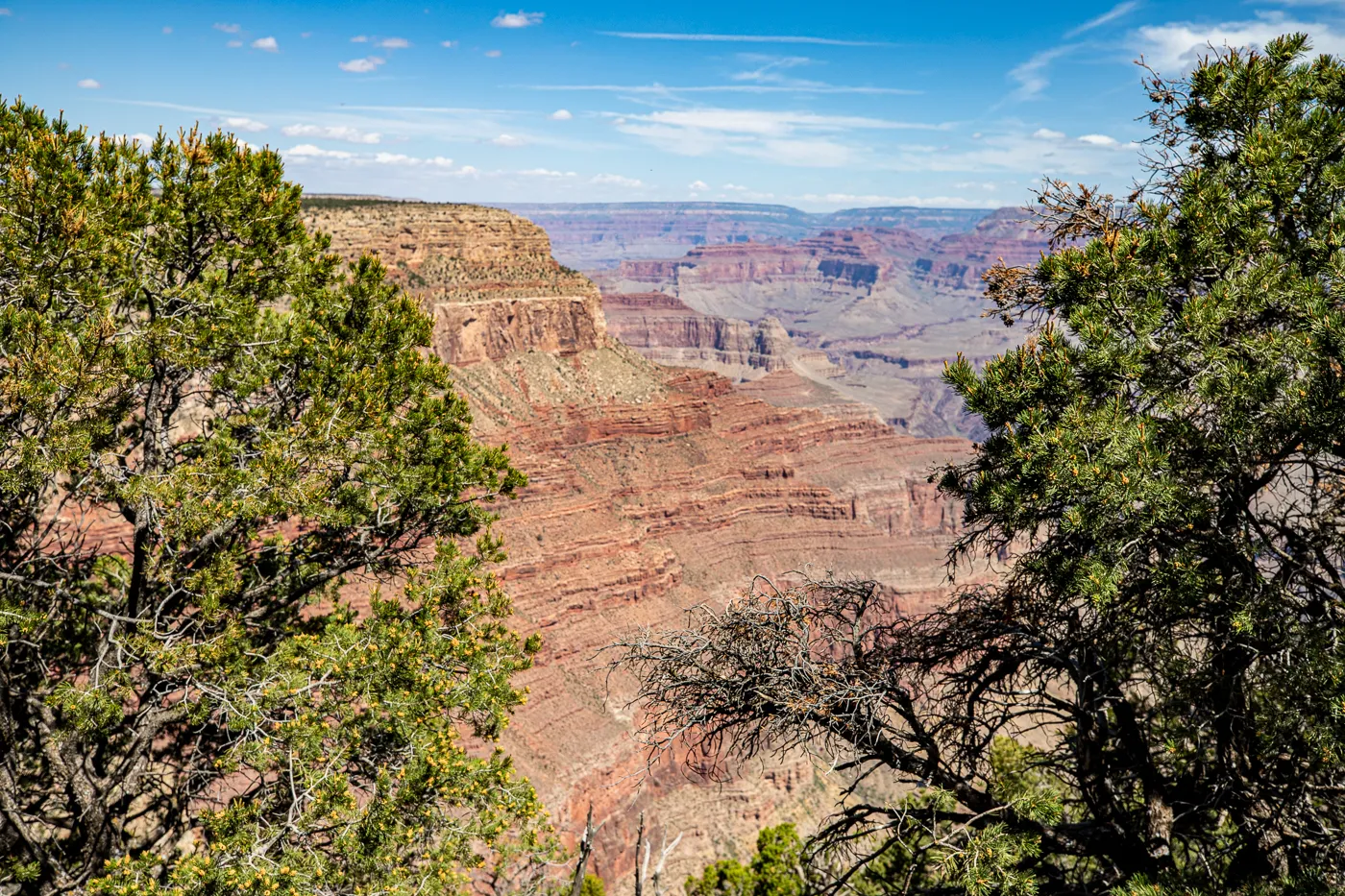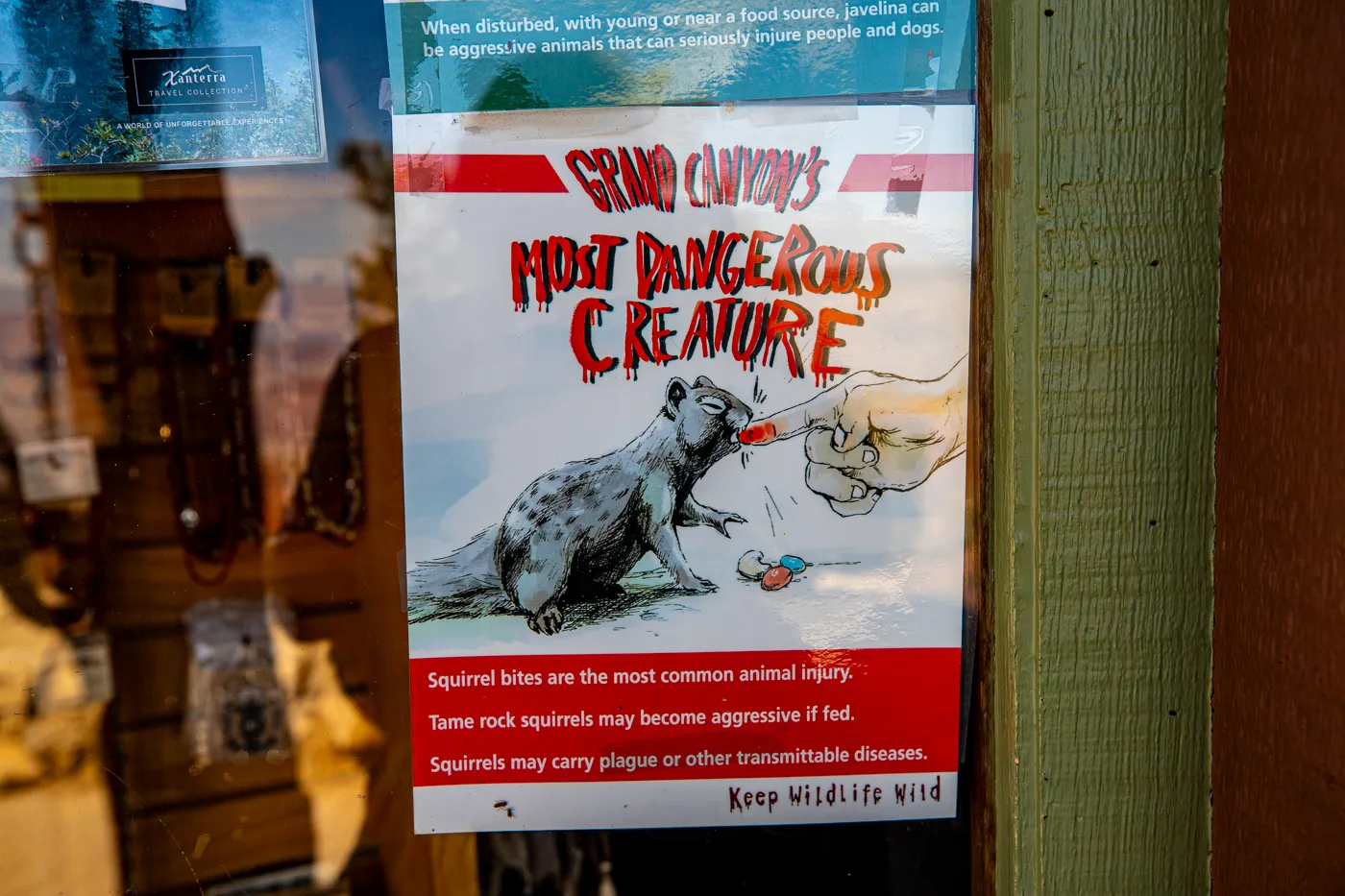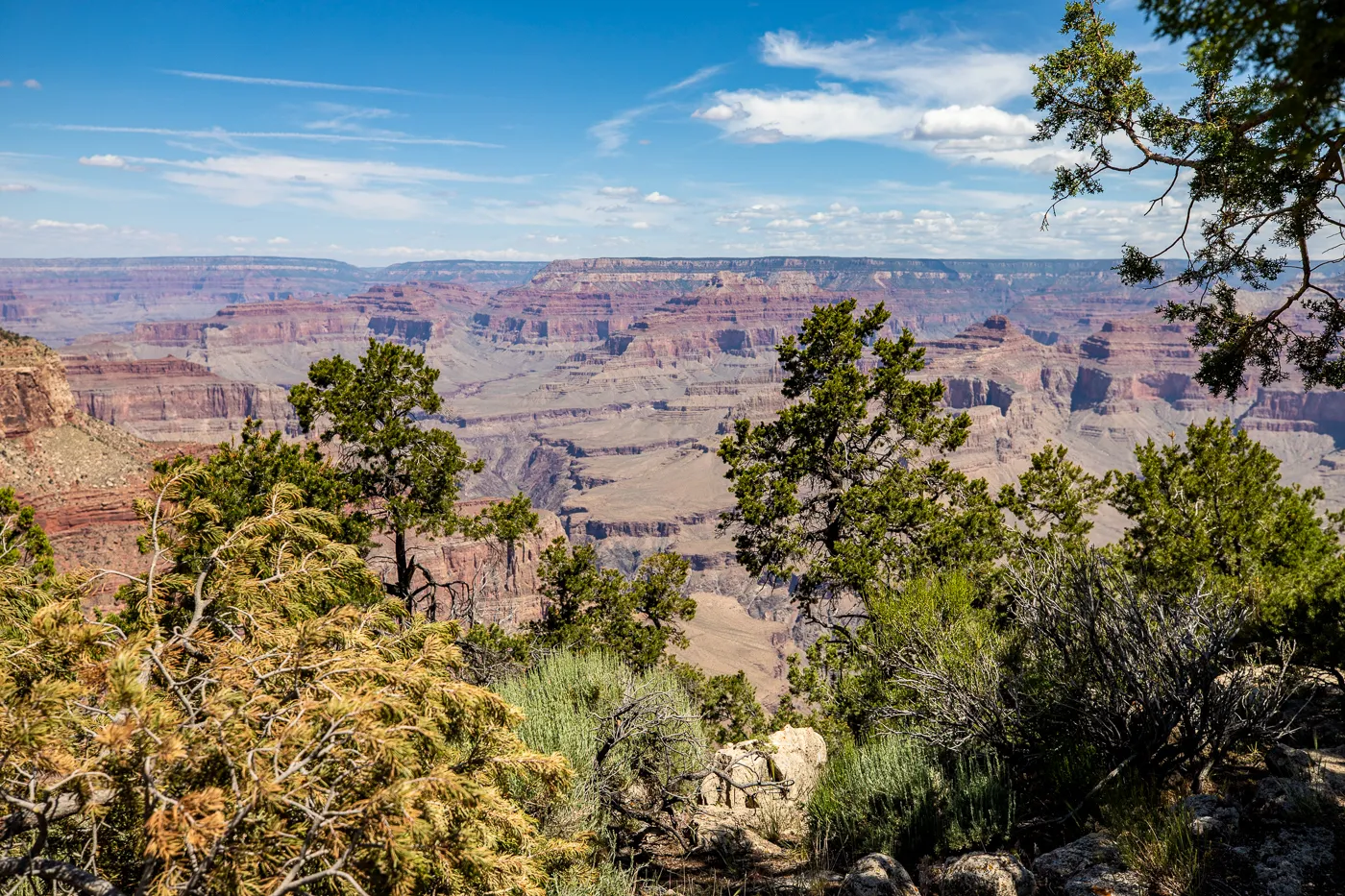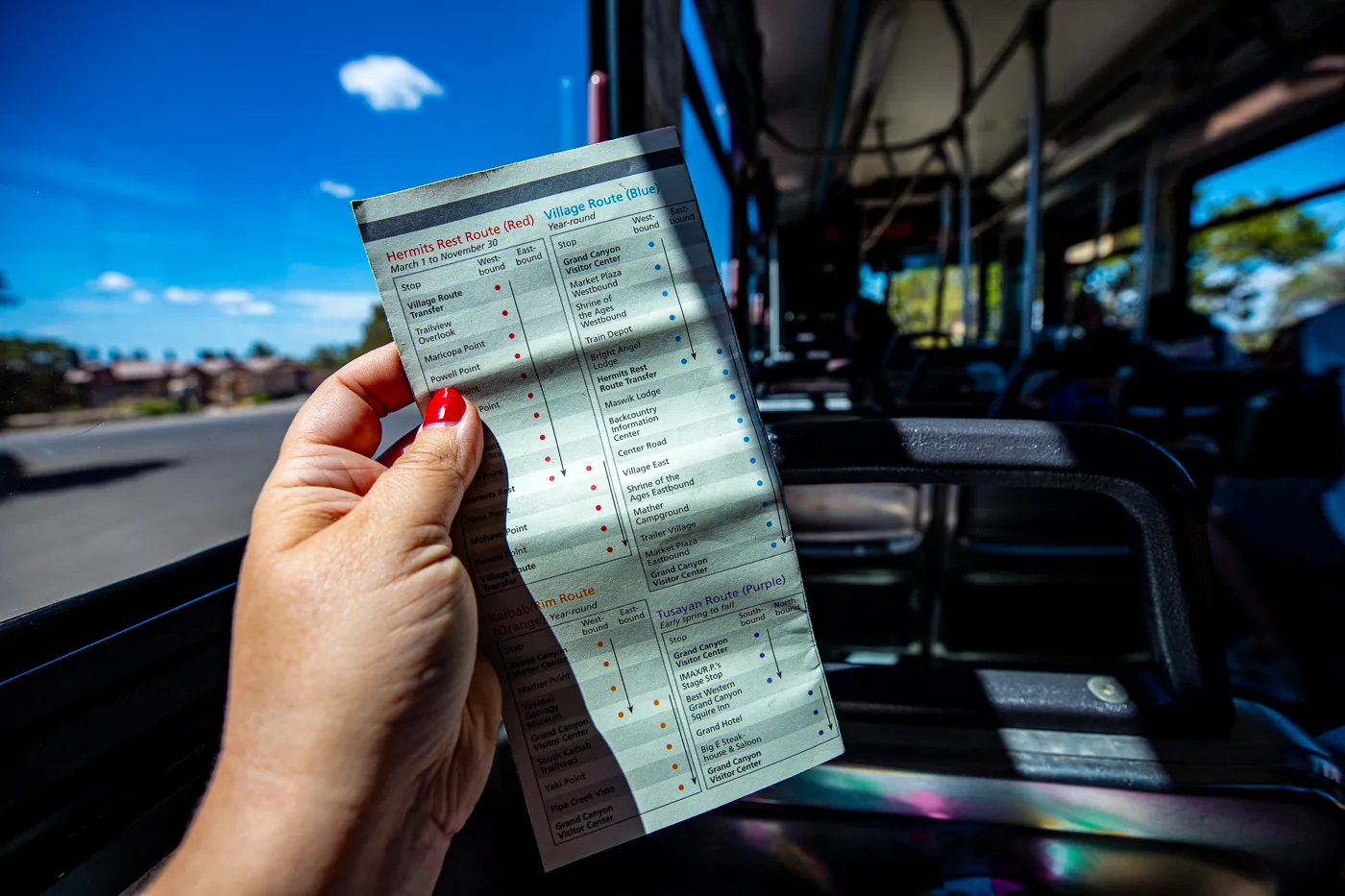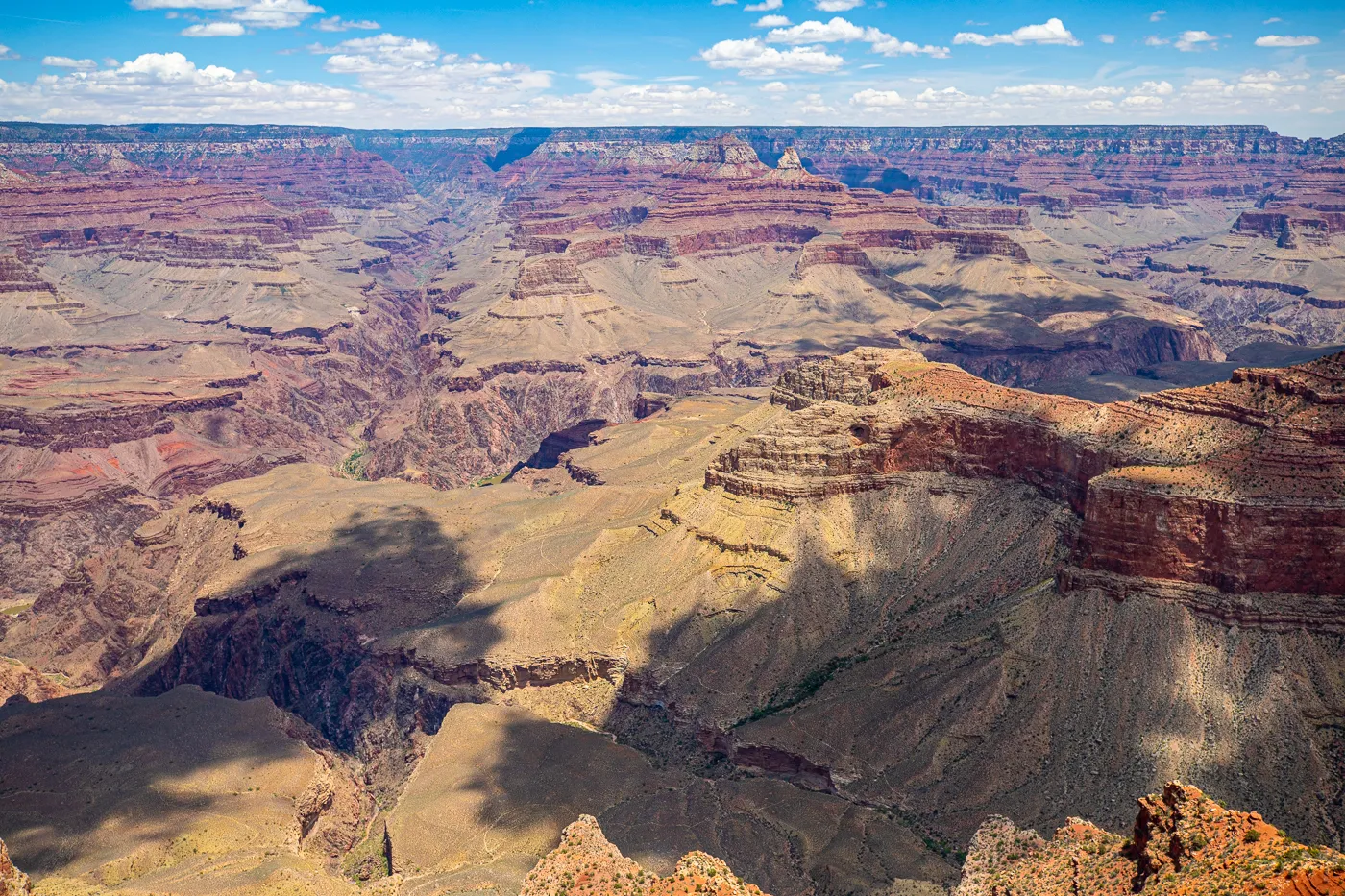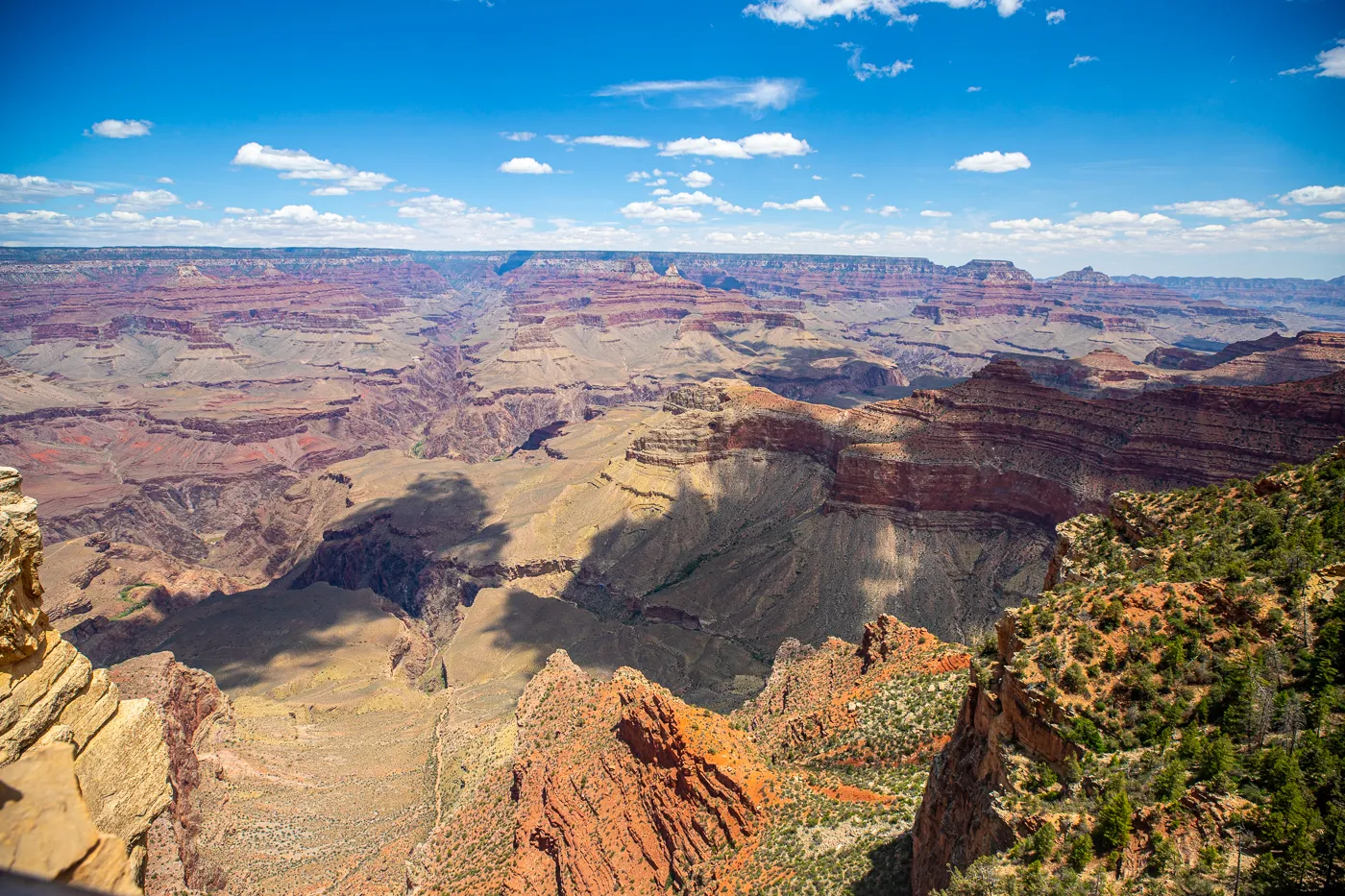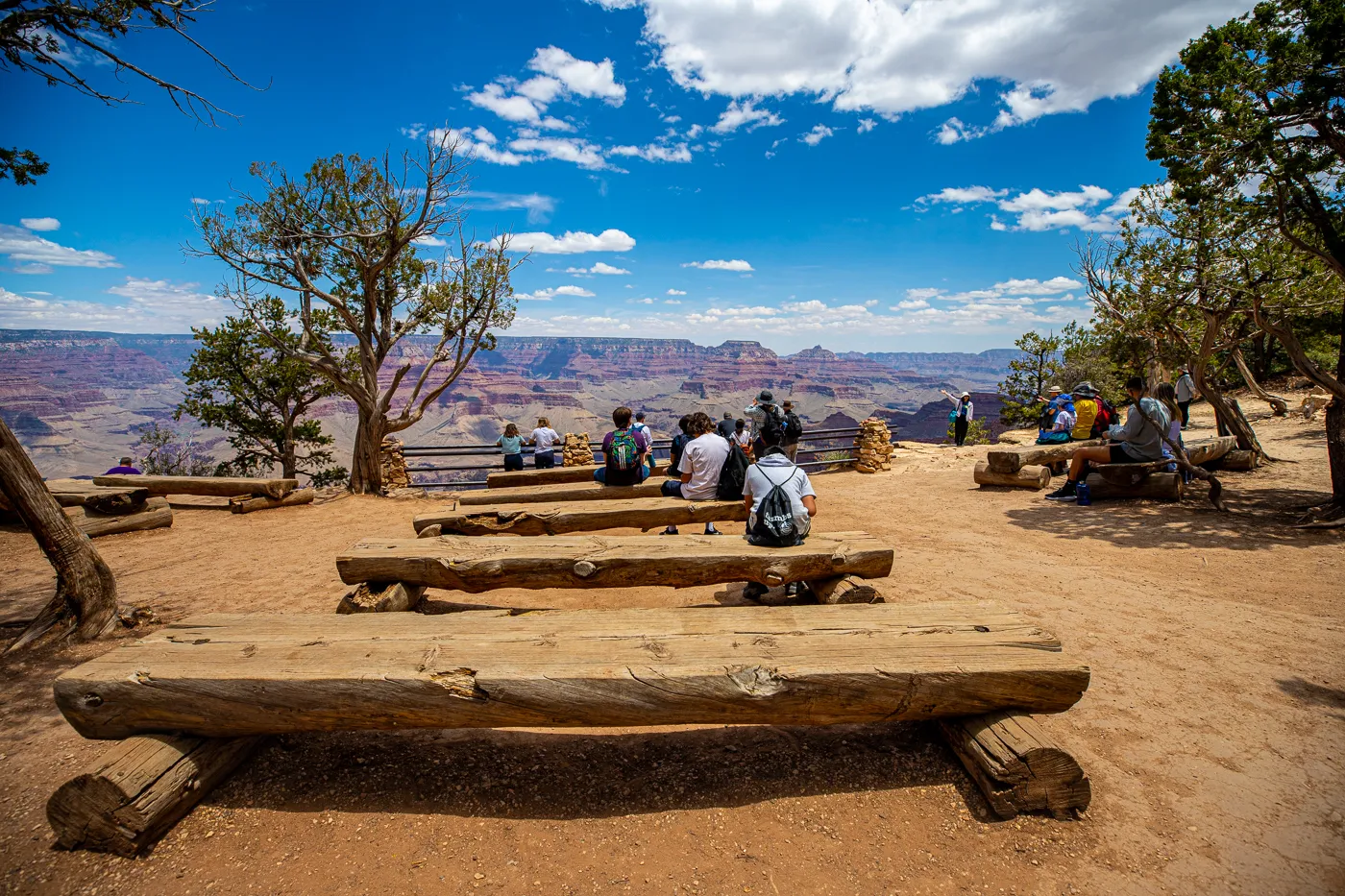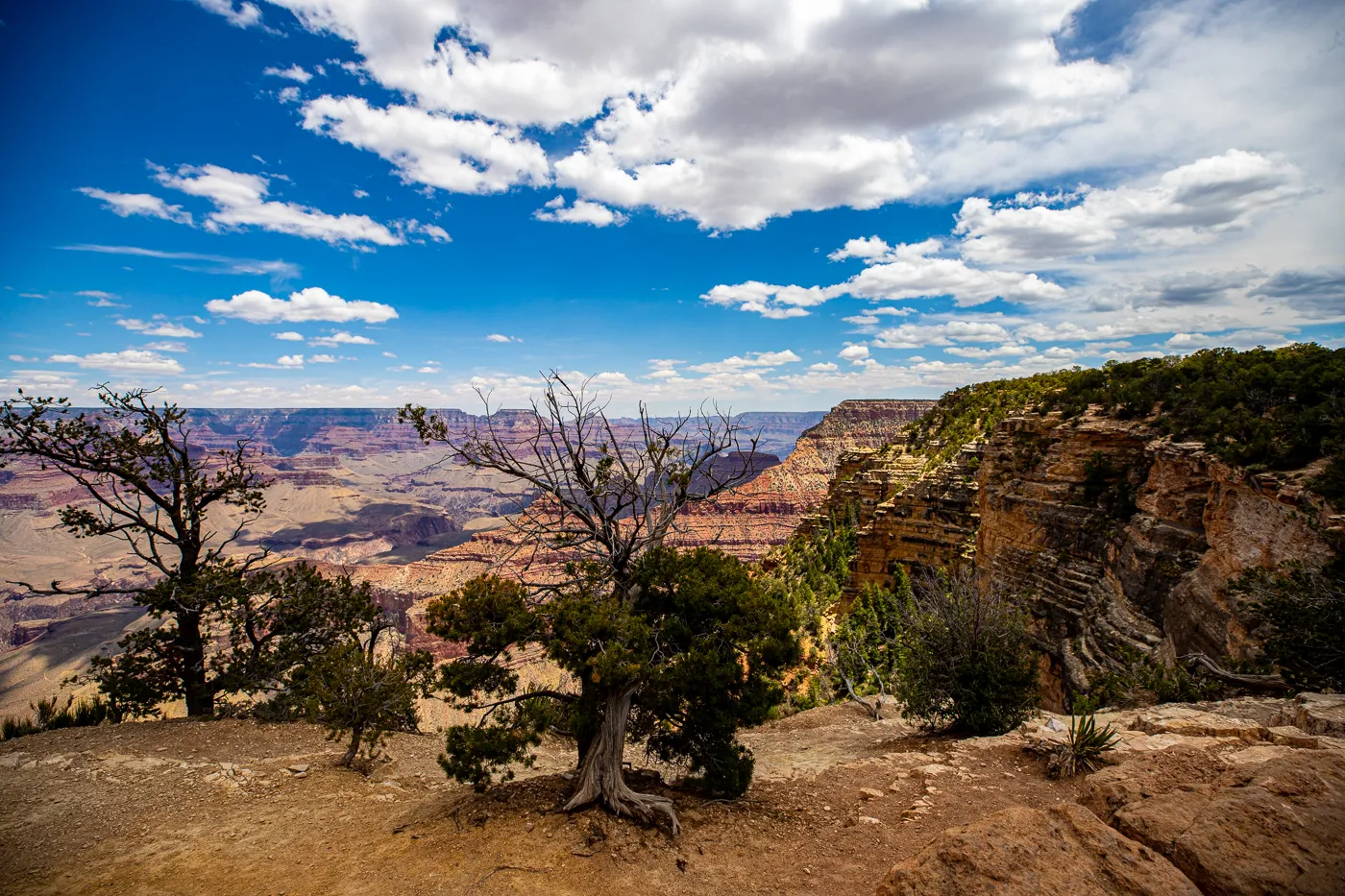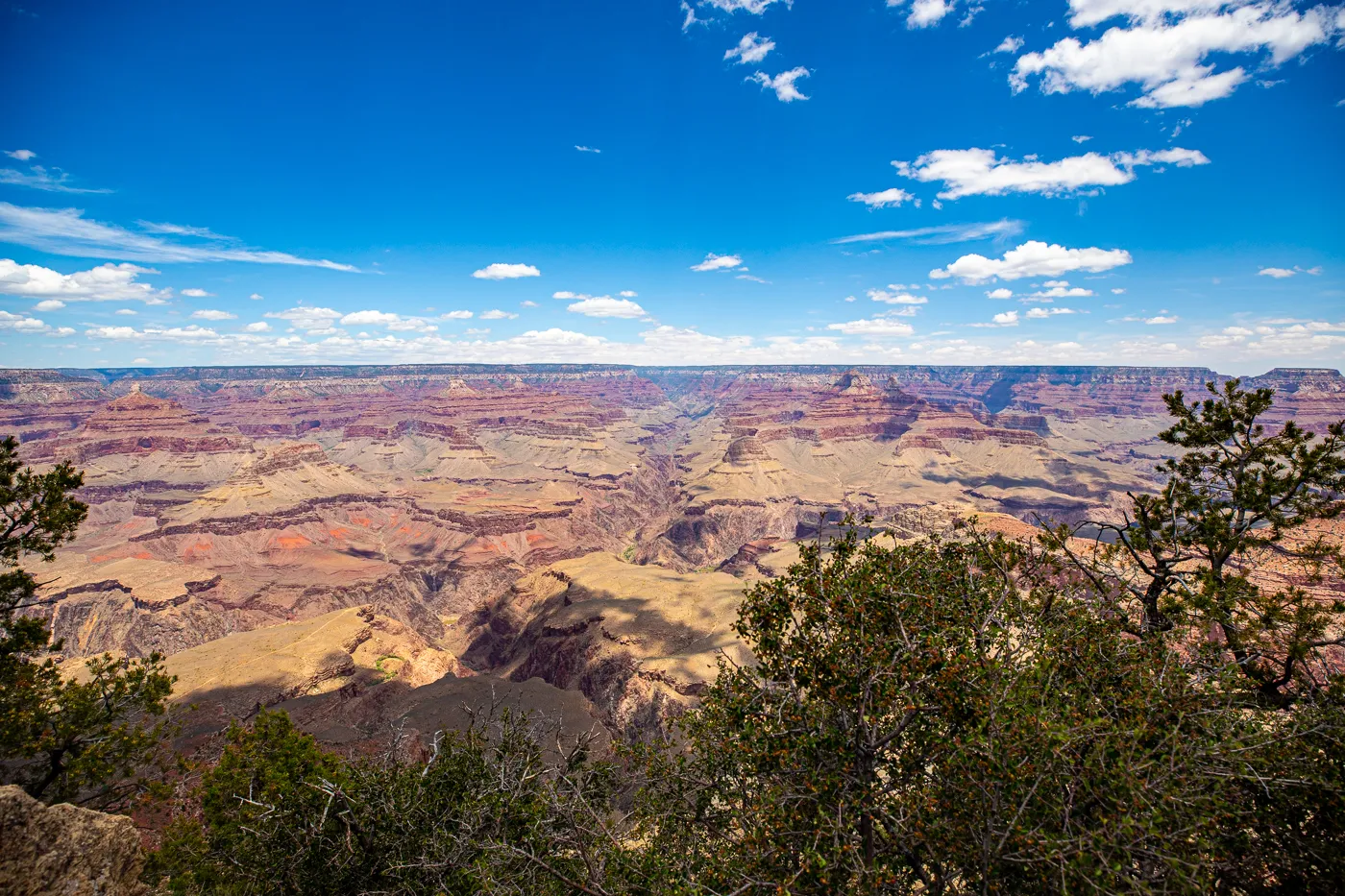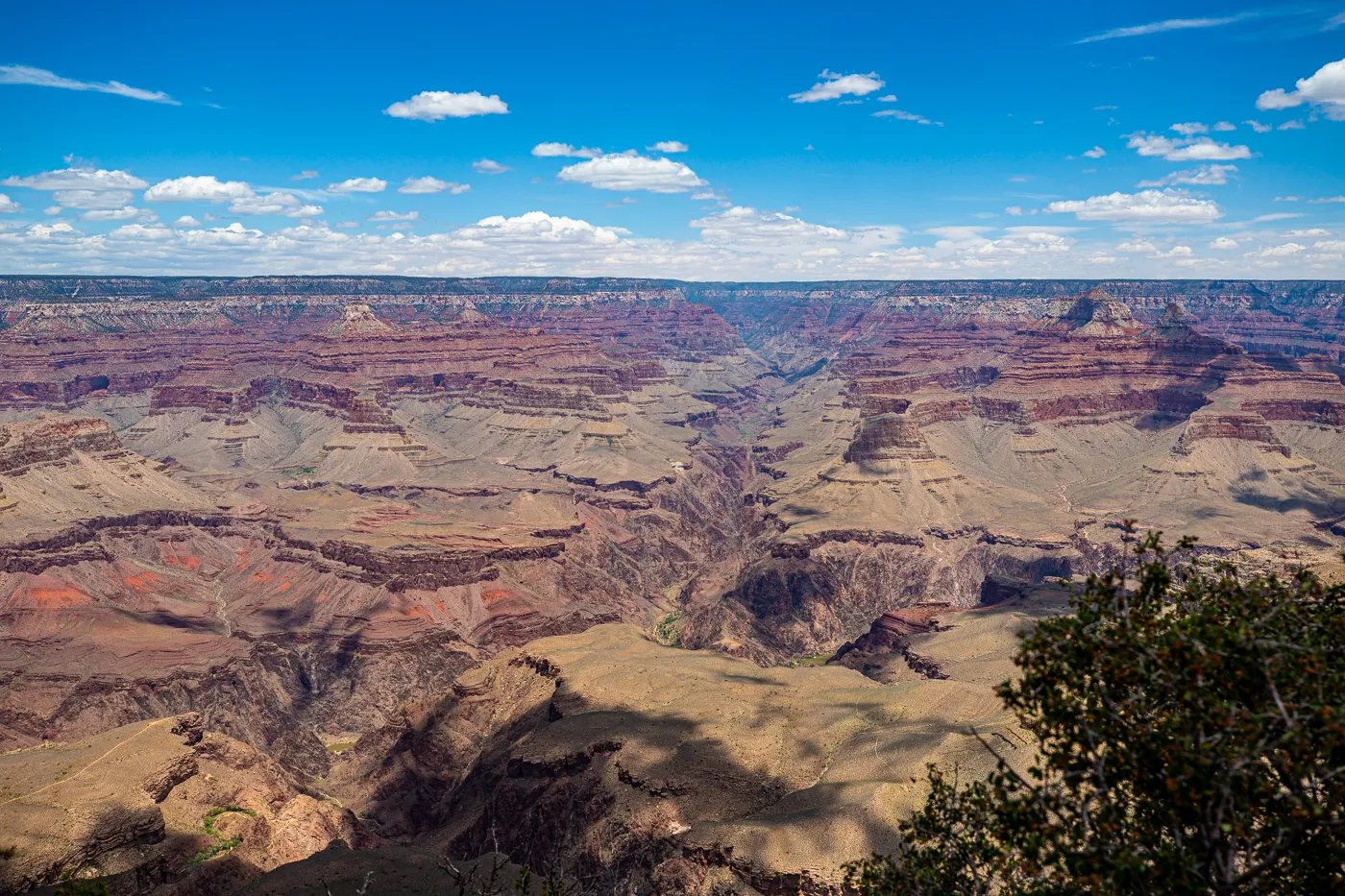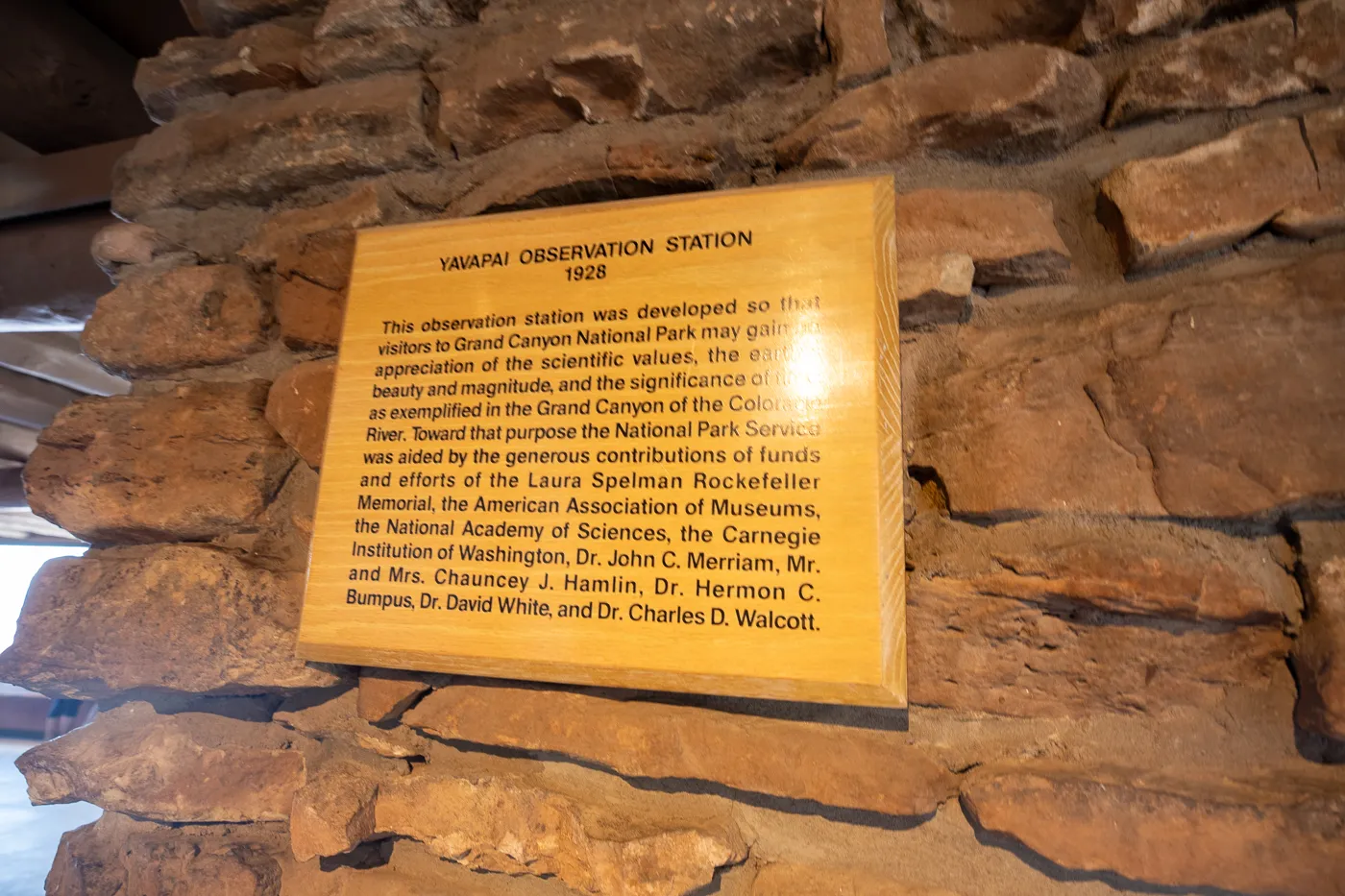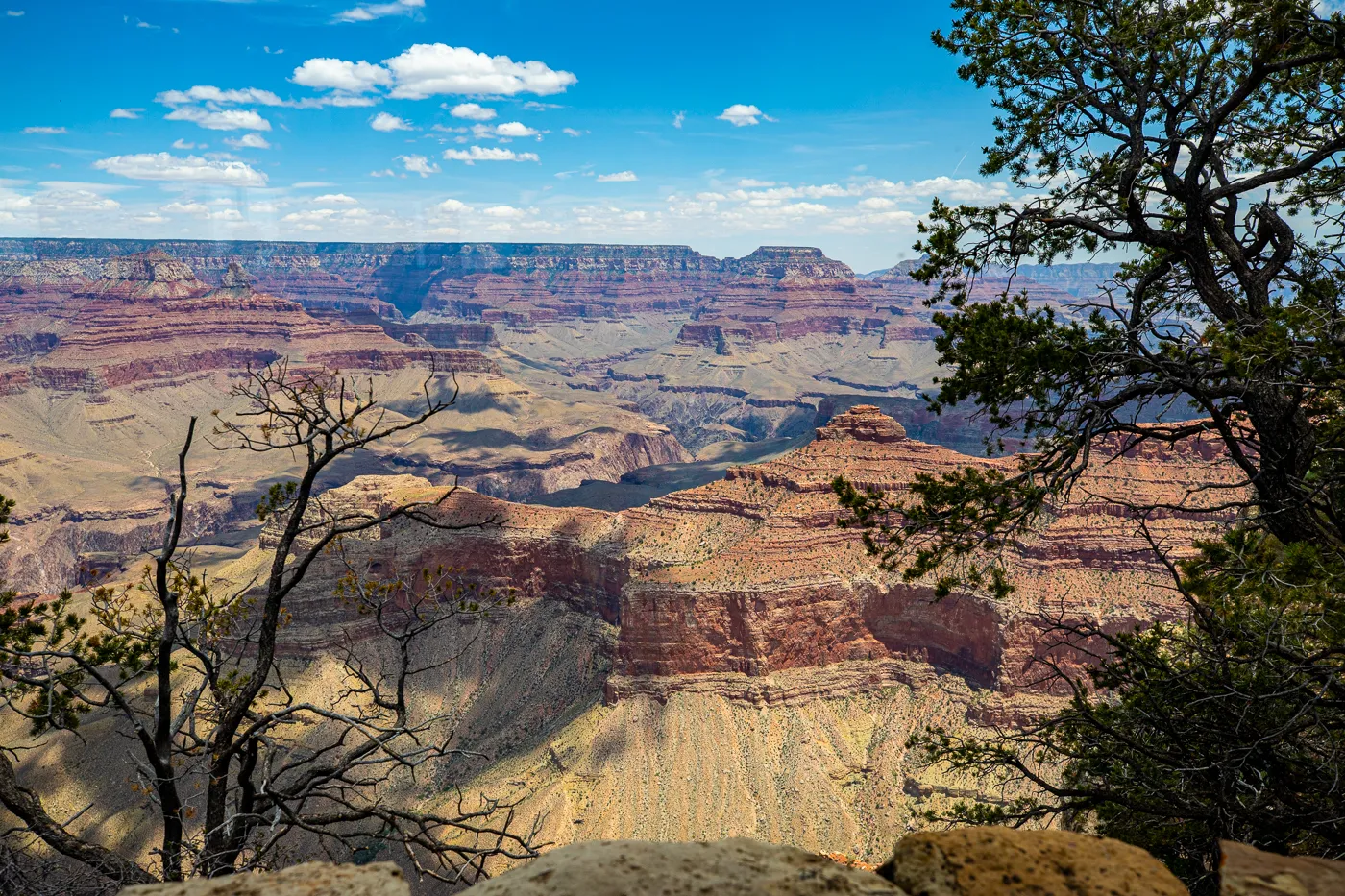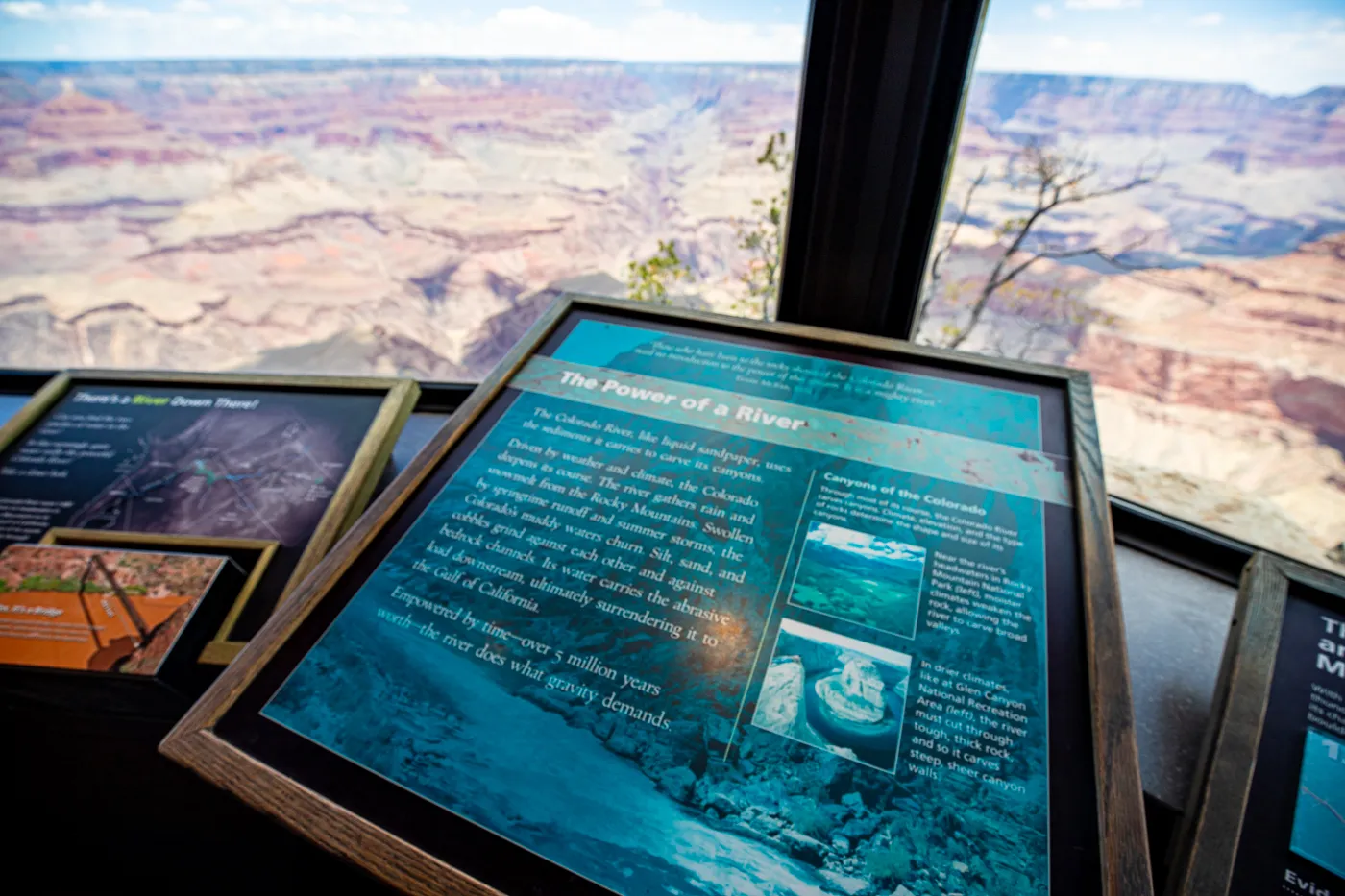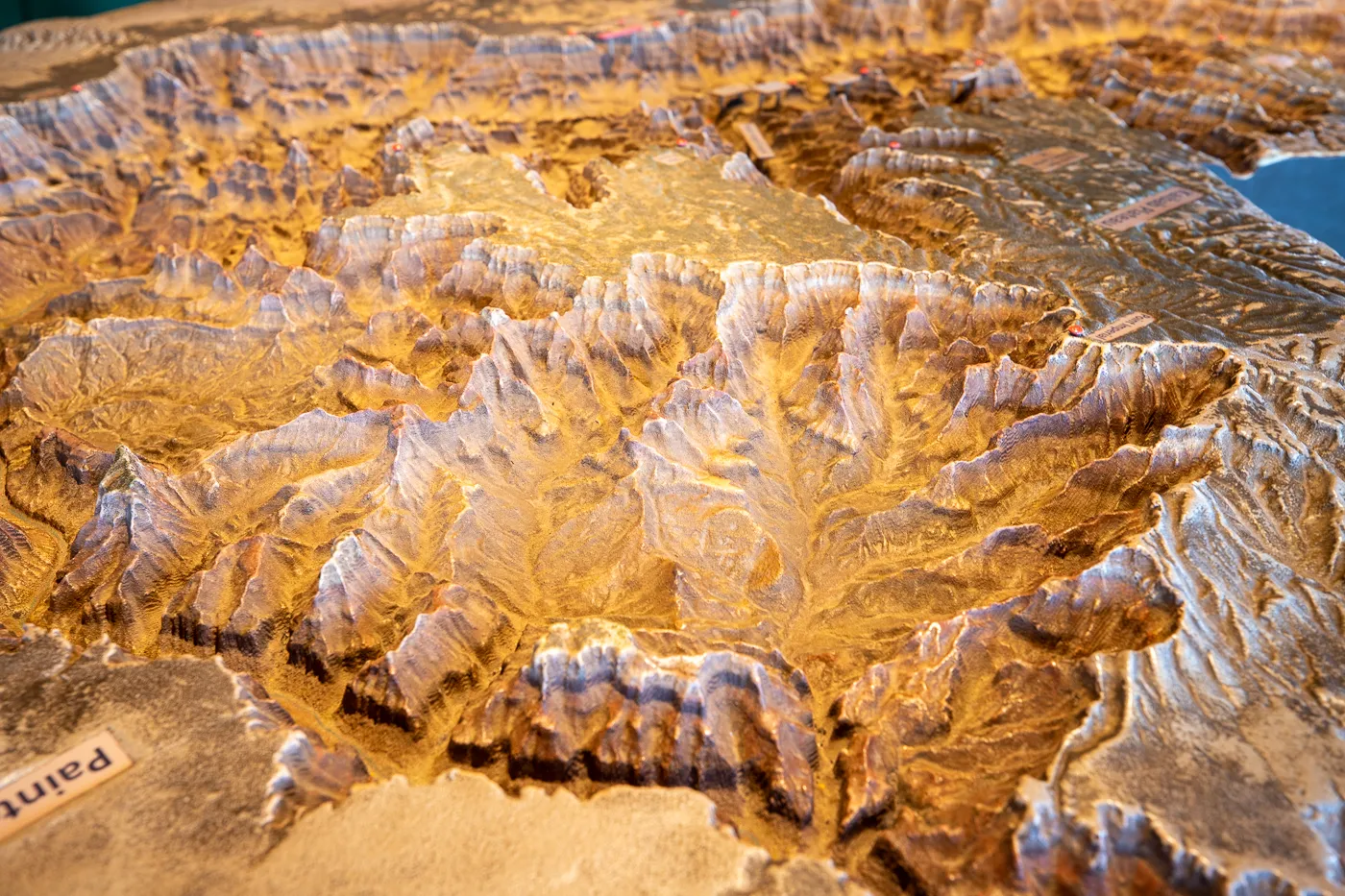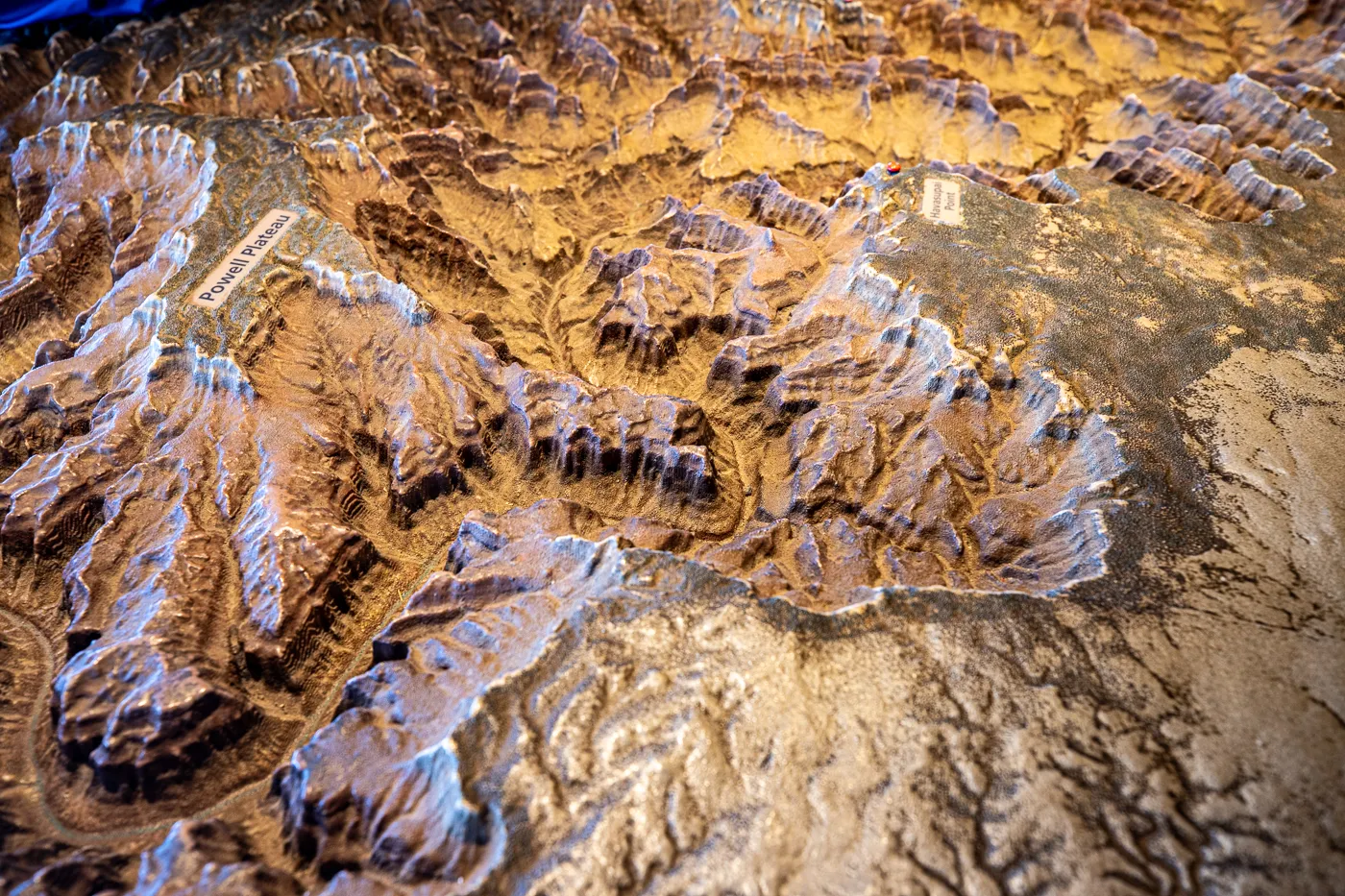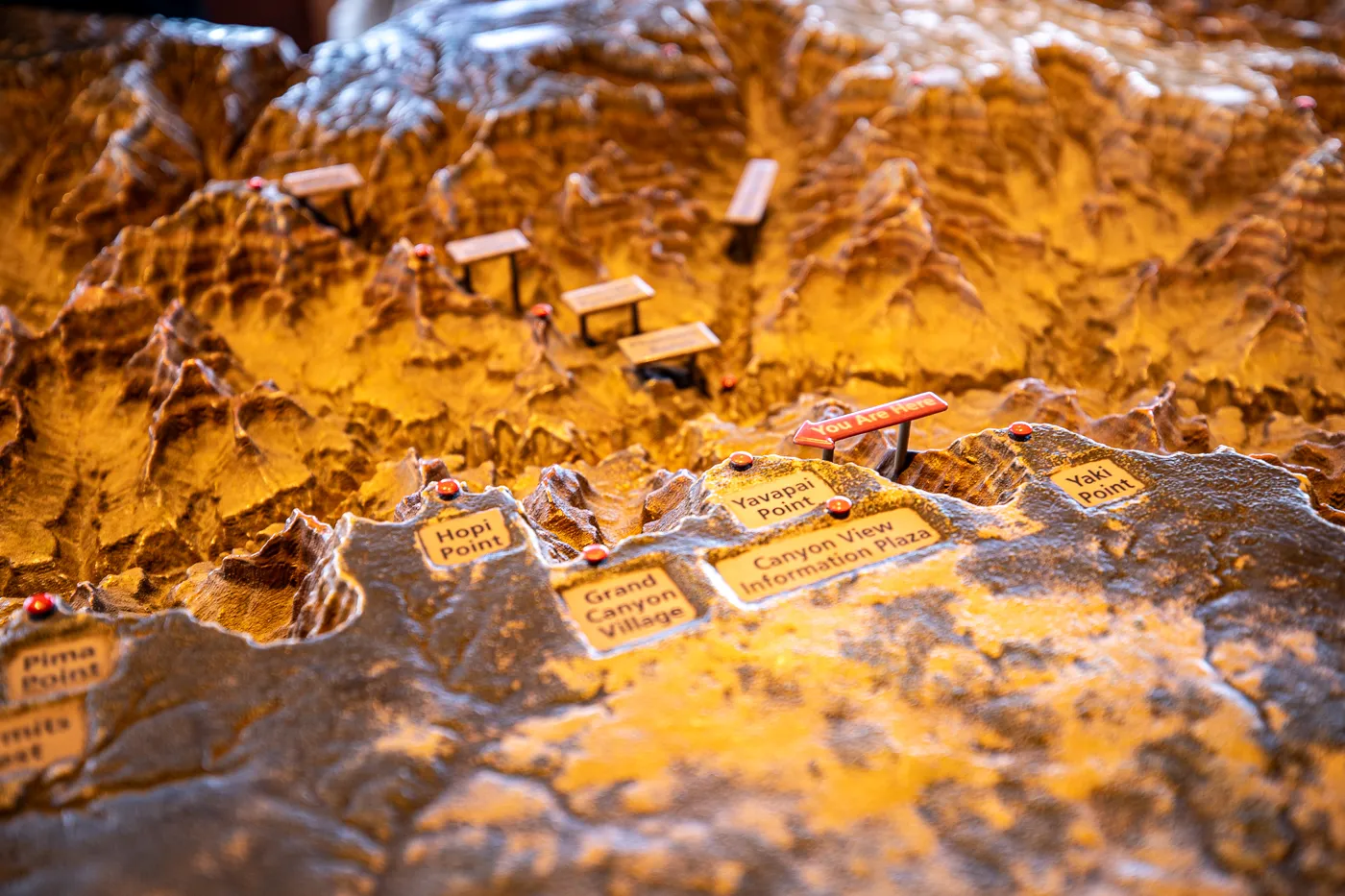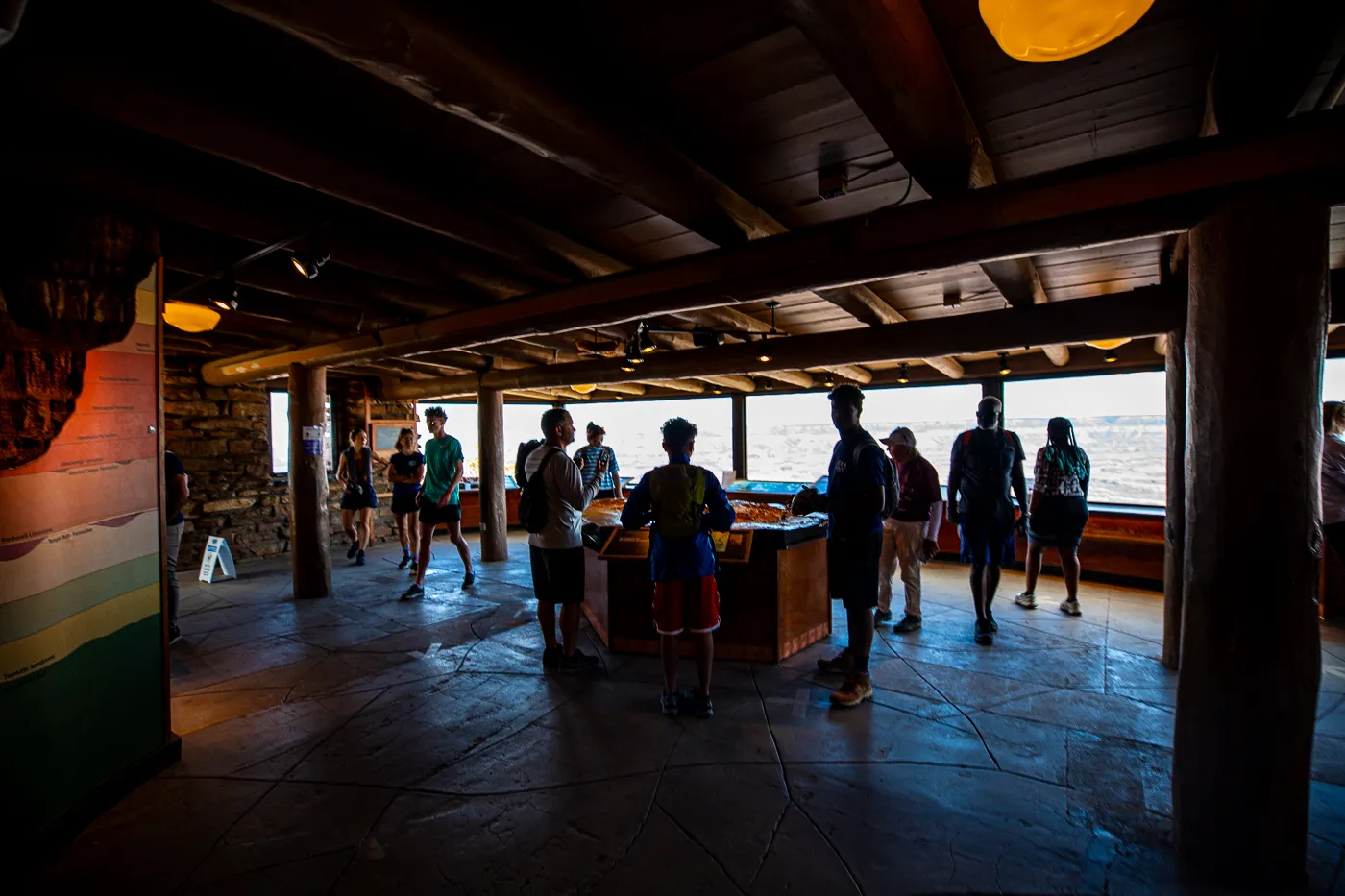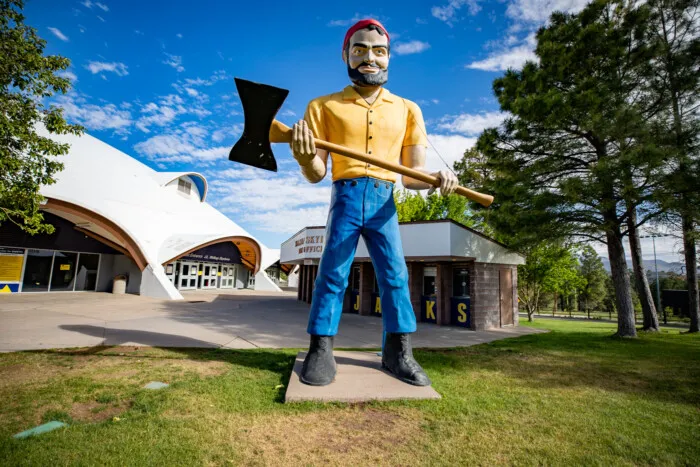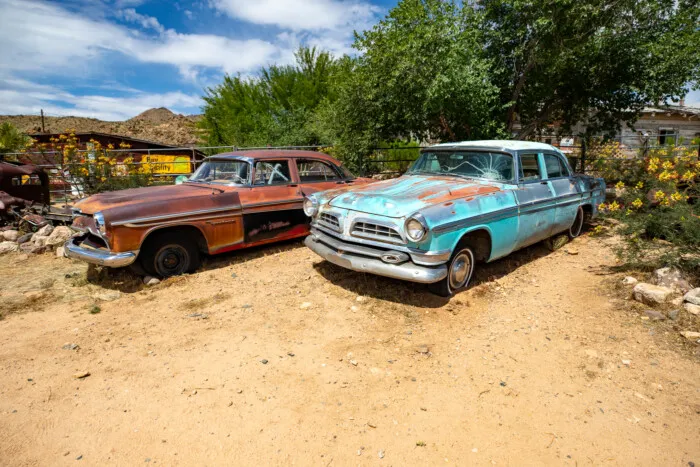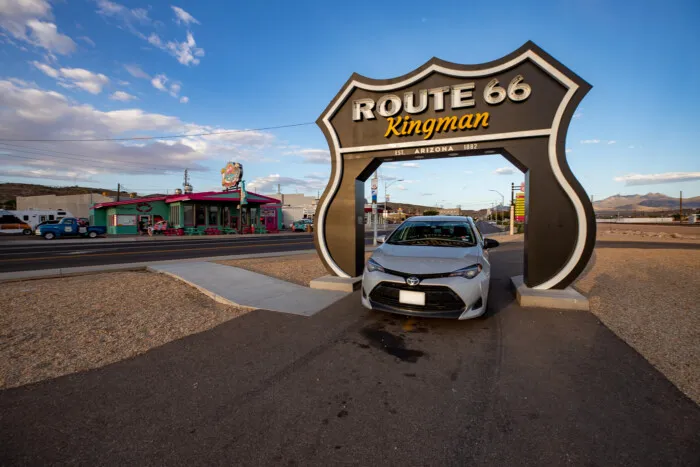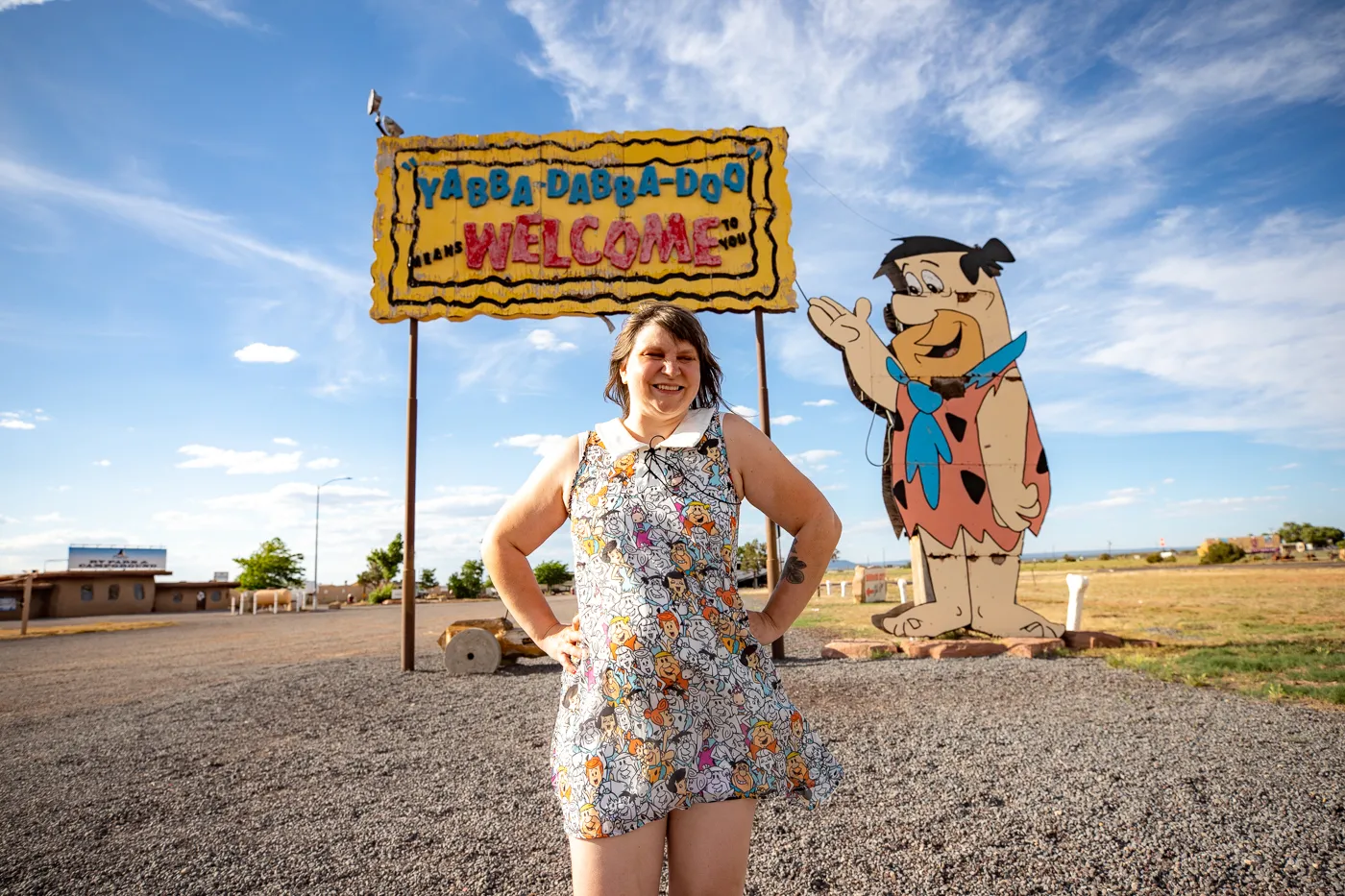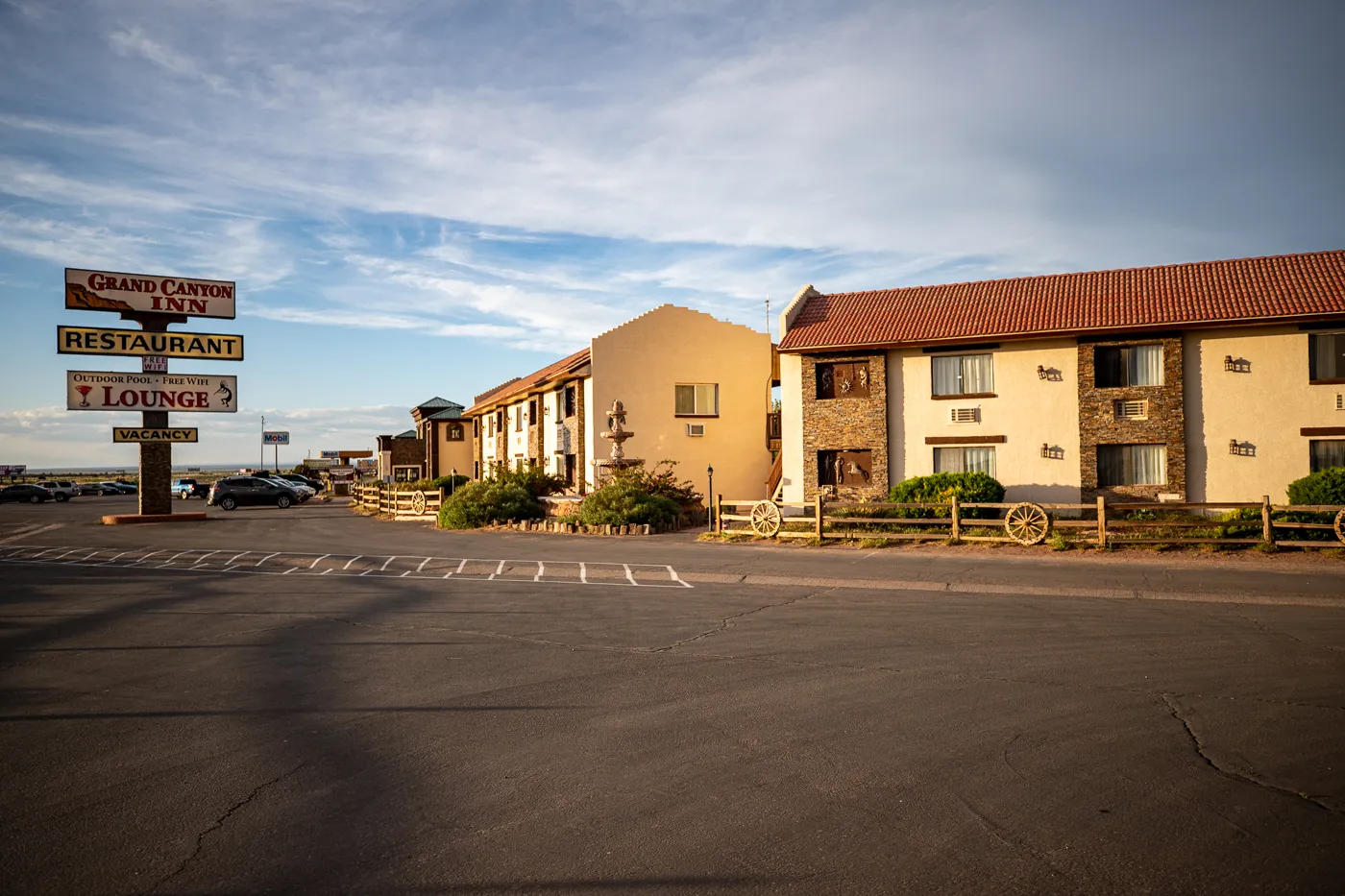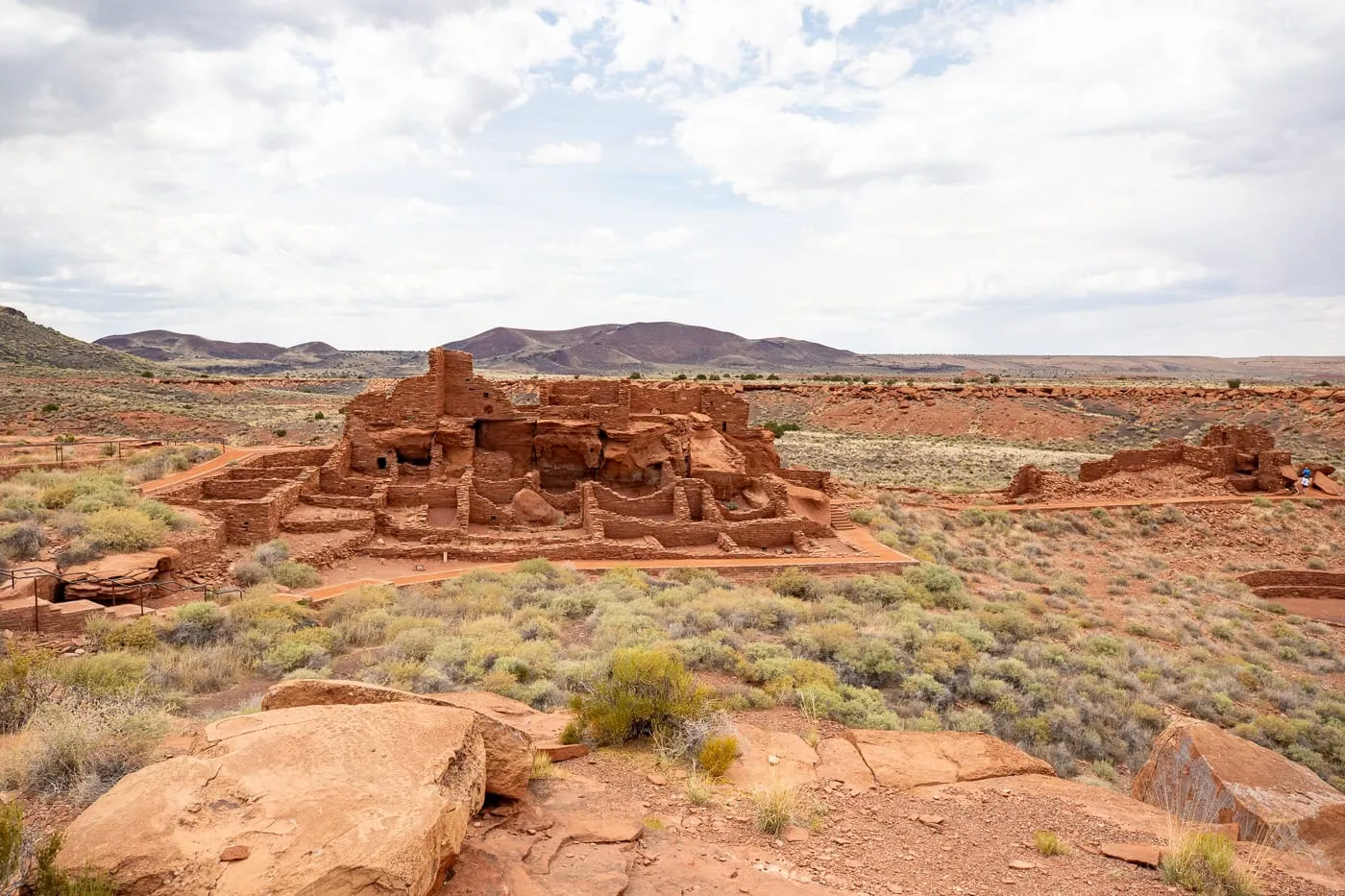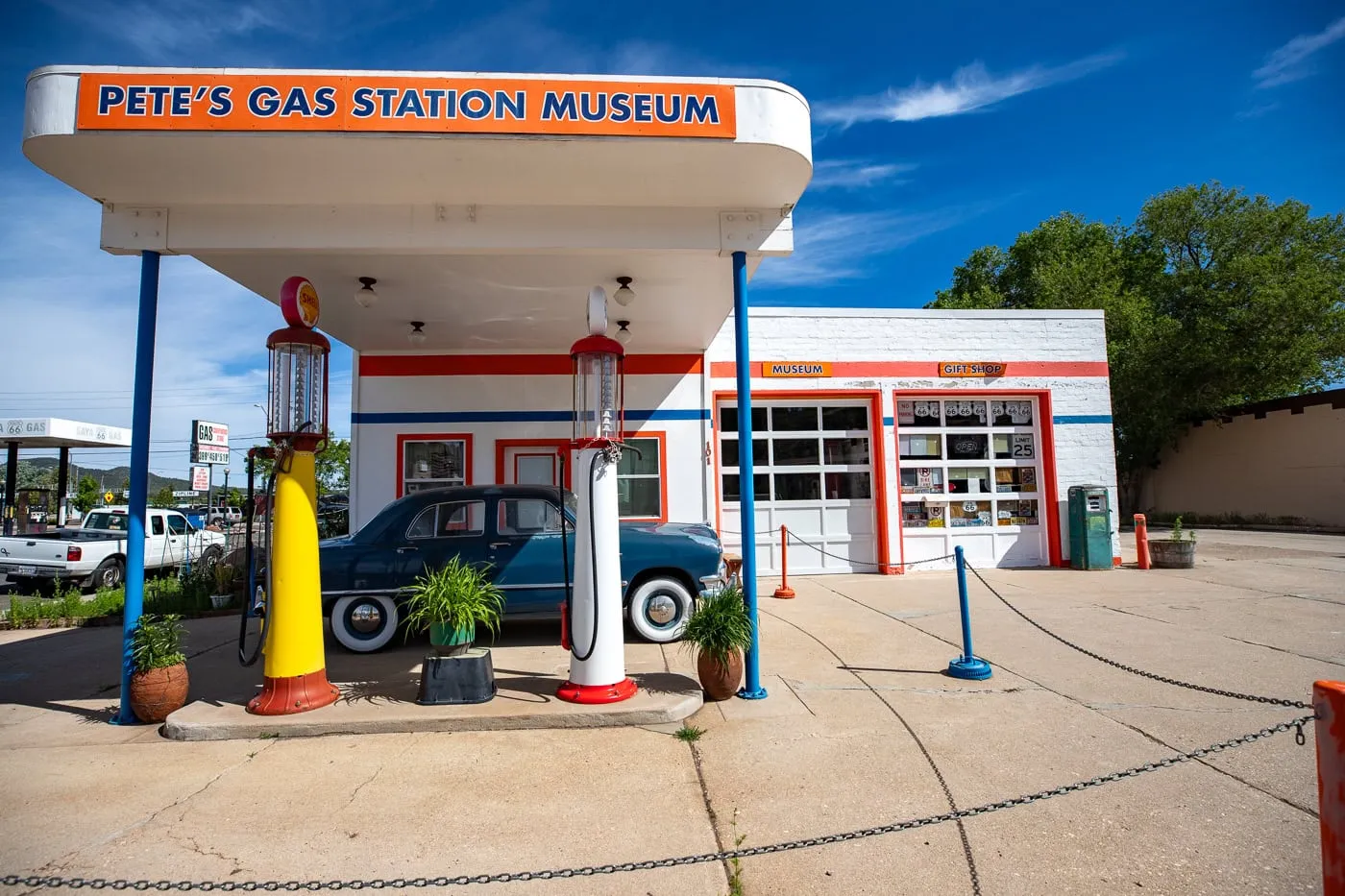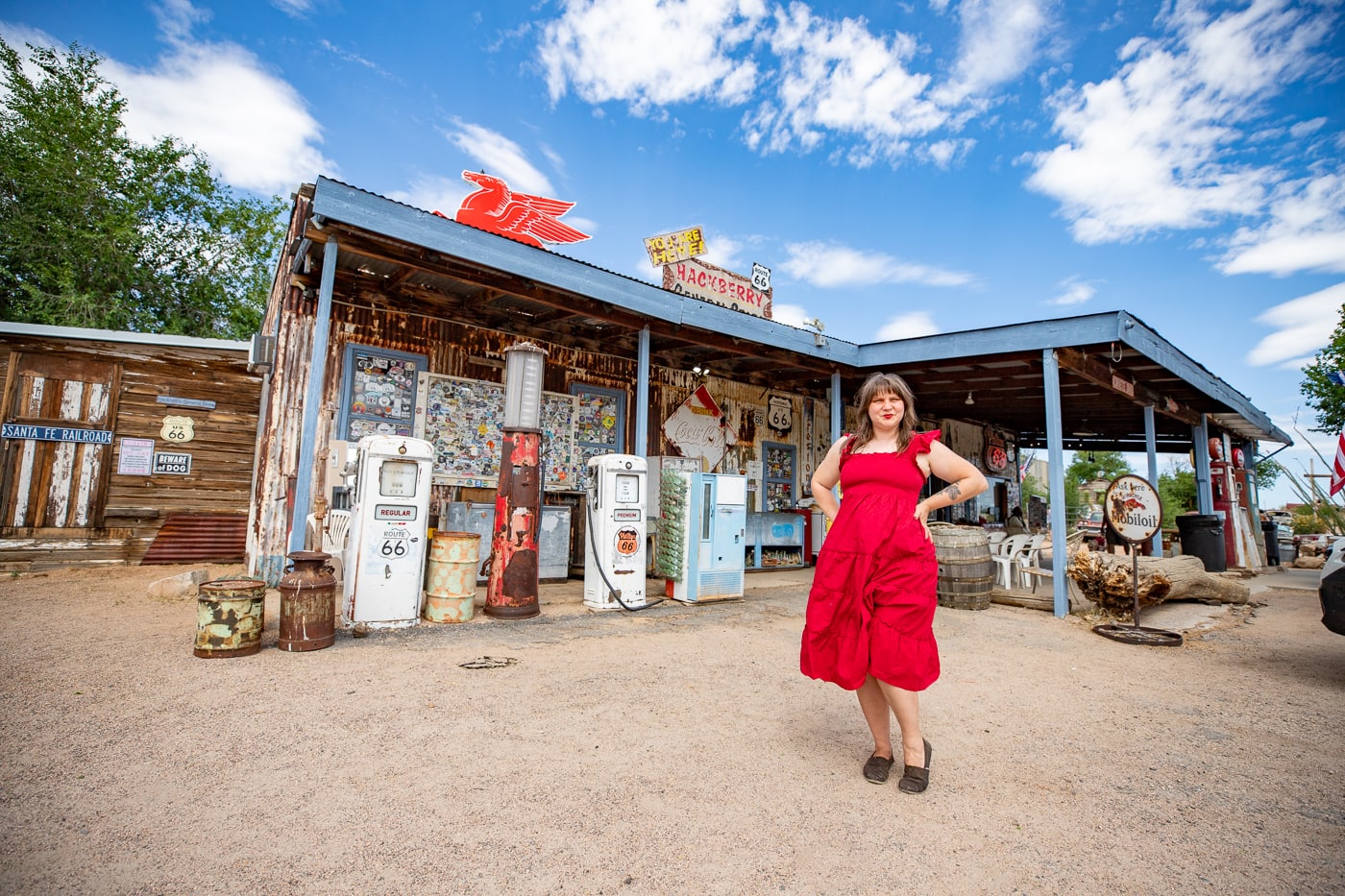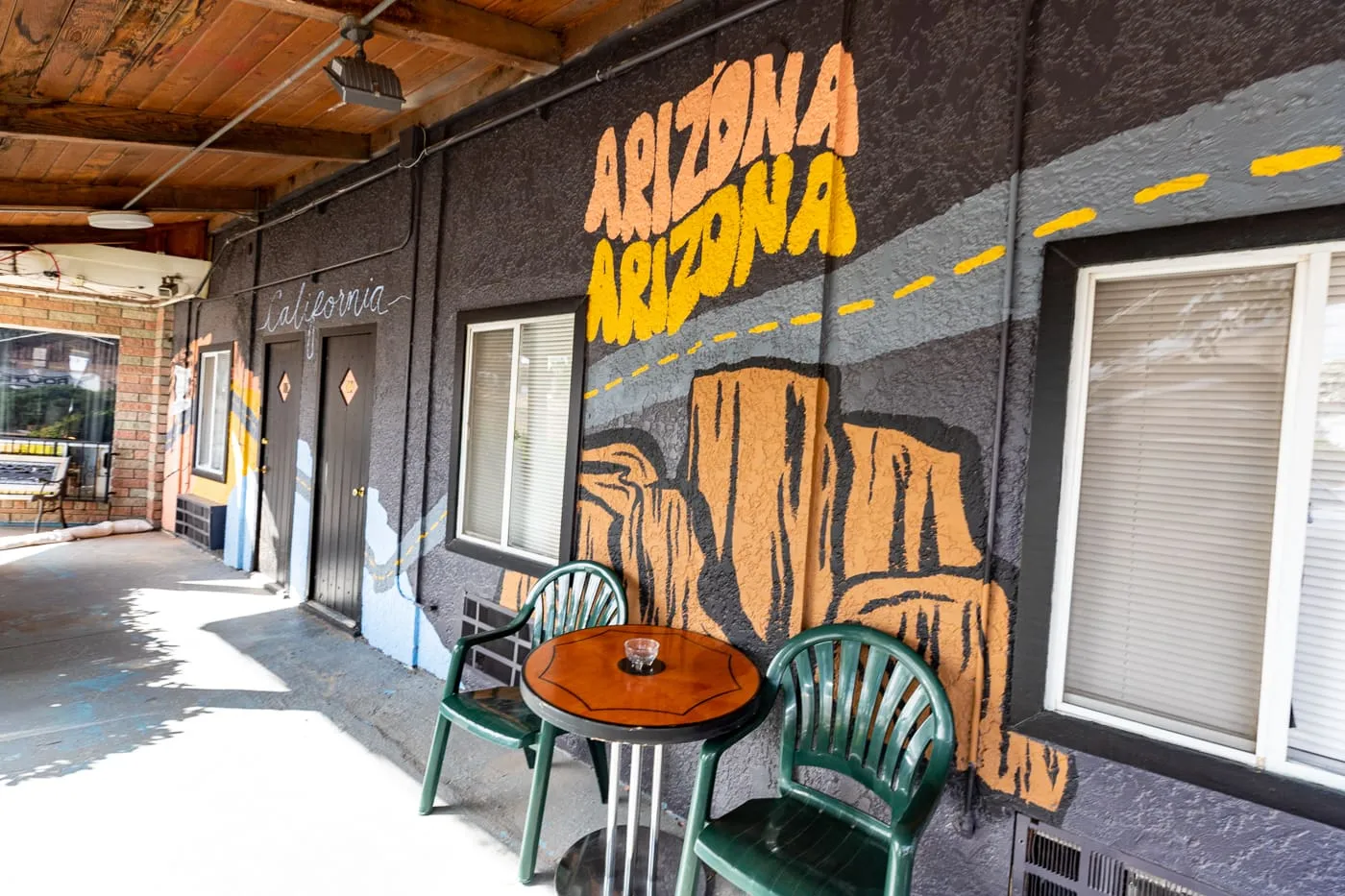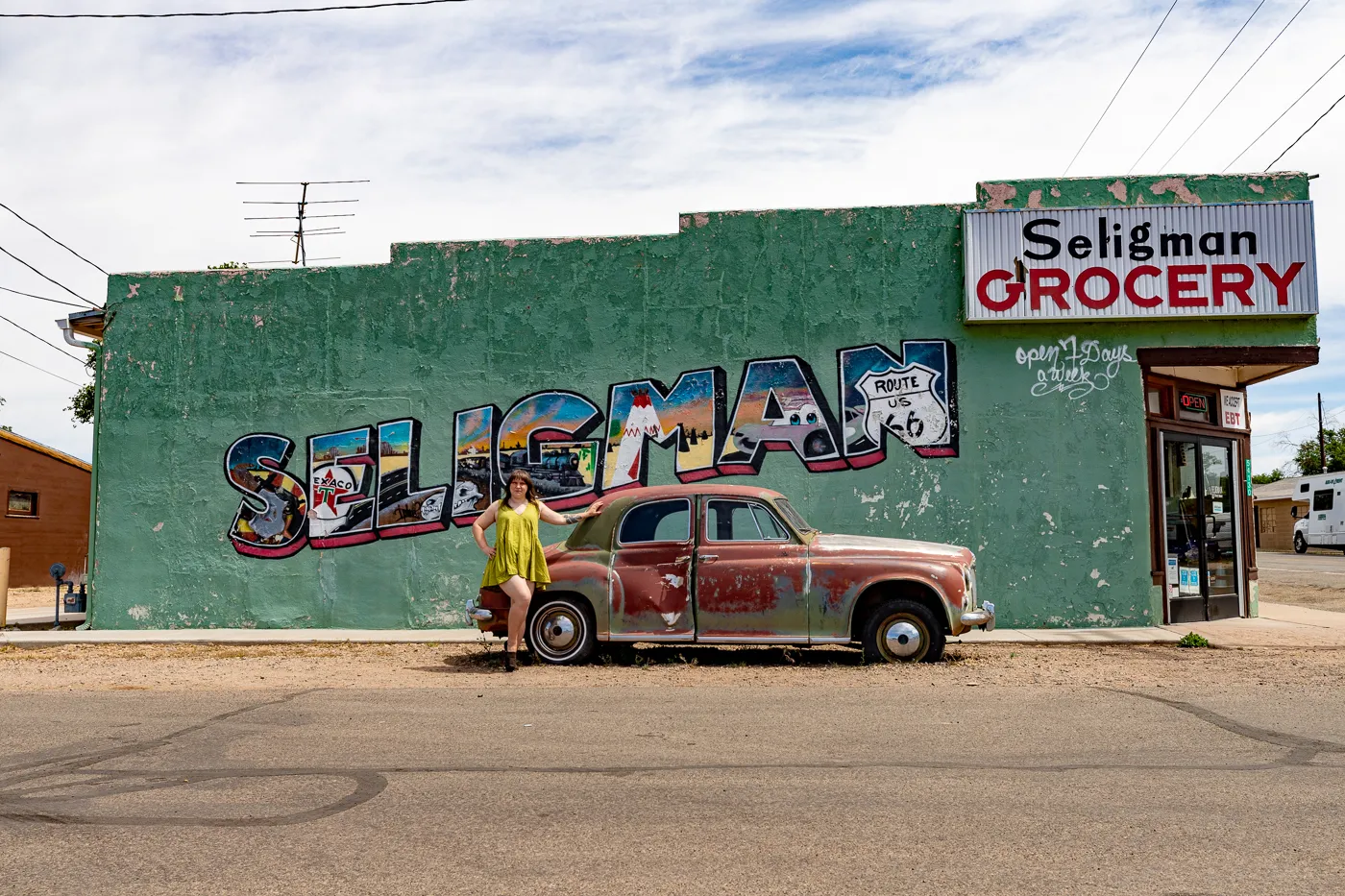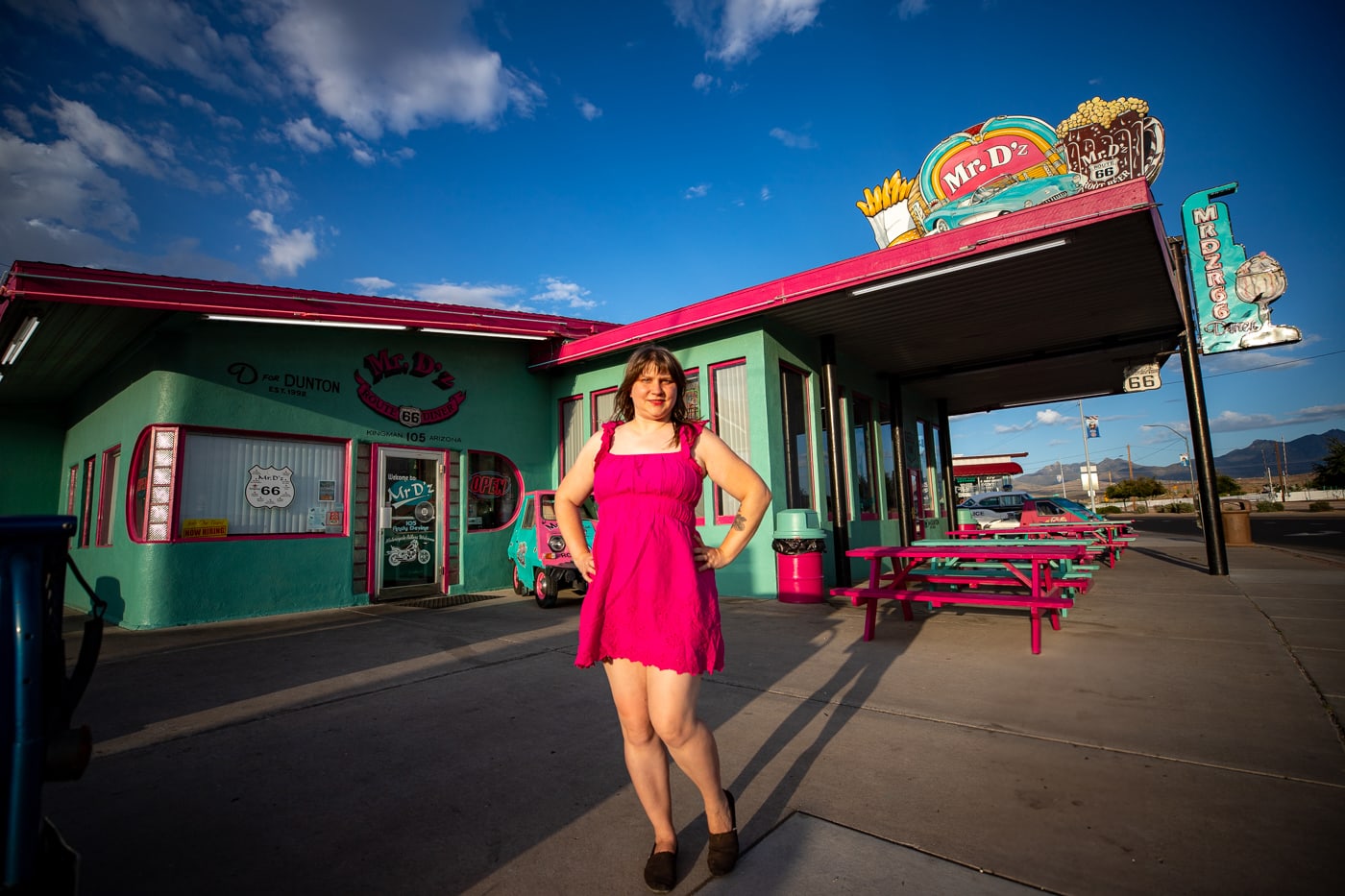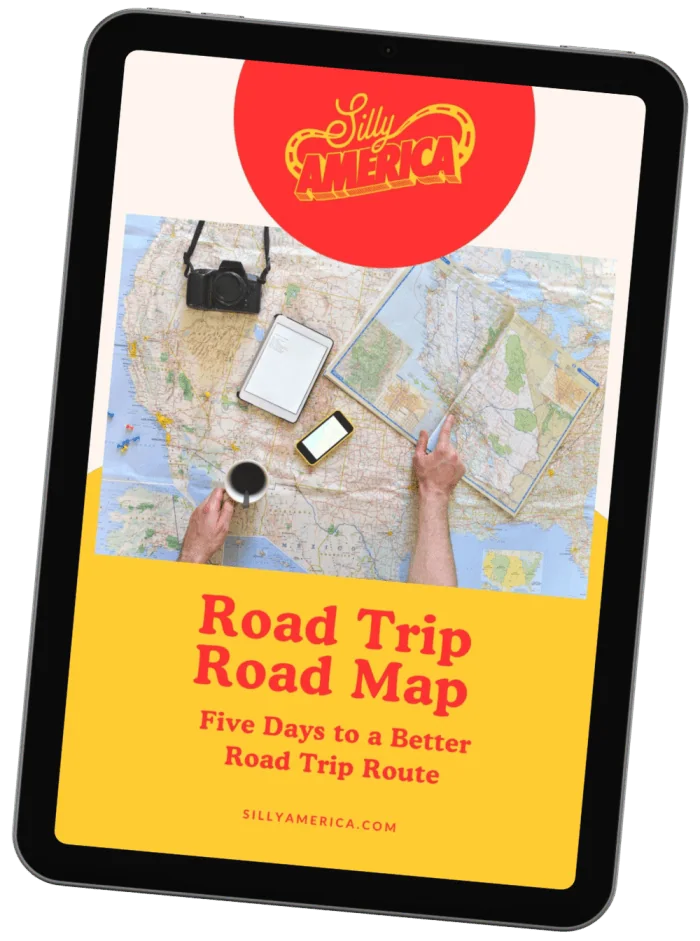The Grand Canyon is one of the world’s most breathtaking natural wonders, a colossal gorge stretching about 277 miles through northern Arizona, with depths reaching over a mile deep. Formed over millions of years, this marvel is largely the handiwork of the mighty Colorado River, which began carving its way through layers of rock nearly six million years ago. Recognizing its remarkable beauty and geological significance, the Grand Canyon was designated a national park in 1919, cementing its place as a must-see destination for generations of nature lovers, adventurers, and road trippers alike.
Offering spectacular panoramic views of the magnificent landscape that glows in pinks and purples and oranges in the rising and setting sun, it’s no wonder millions of people visit this destination each year. The National Park is a bucket-list item for any road tripper. And, with convenient access to the South Rim from Route 66 in Williams or Flagstaff, Las Vegas, Phoenix, or anywhere in Arizona, it’s an easy add to your travel itinerary.
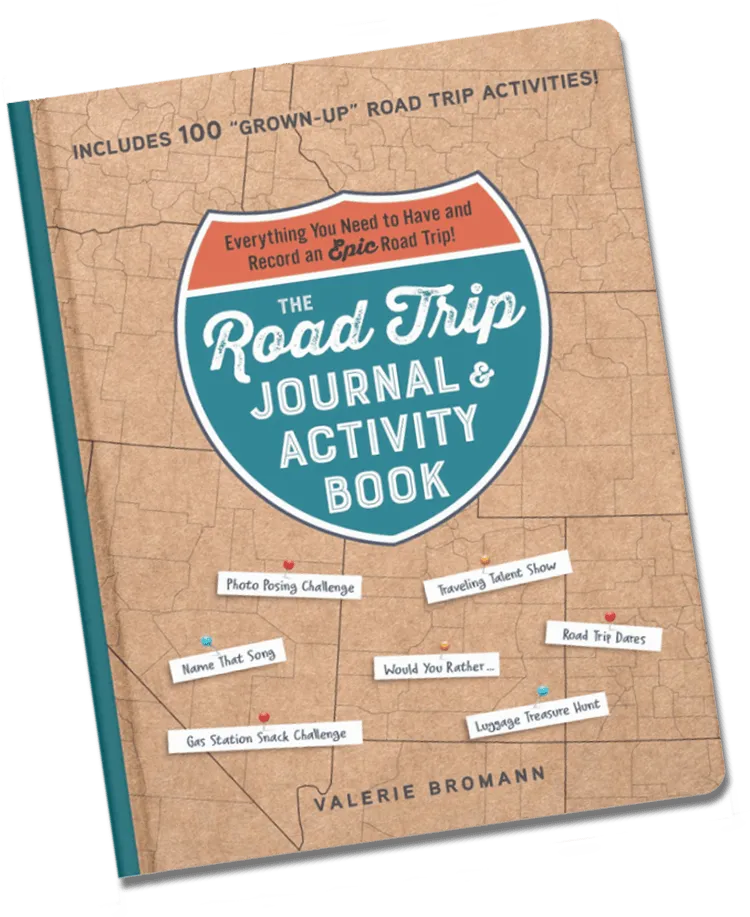
The Road Trip Journal & Activity Book
Enjoy fun games and challenges to pass the time on your next road trip and have a keepsake to look back on for years to come with this entertaining must-have for your next vacation.
There’s something for everyone to enjoy at South Rim of Grand Canyon National Park. Serious hikers can spend days traversing deep into the canyon while novices can take a casual walk or stick to the shuttles. Plus there are museums, historic buildings, restaurants, and more to explore.
- What to Do at the Grand Canyon National Park
- Things to See at the South Rim of Grand Canyon National Park
- Grand Canyon Shuttle Buses
- Take a Tour of the Grand Canyon National Park
- Parking at The Grand Canyon South Rim
- The Grand Canyon Railway
- Photos of the Grand Canyon National Park in Arizona (South Rim)
- Plan Your Arizona Road Trip
- Roadside Attractions Near the Grand Canyon National Park South Rim
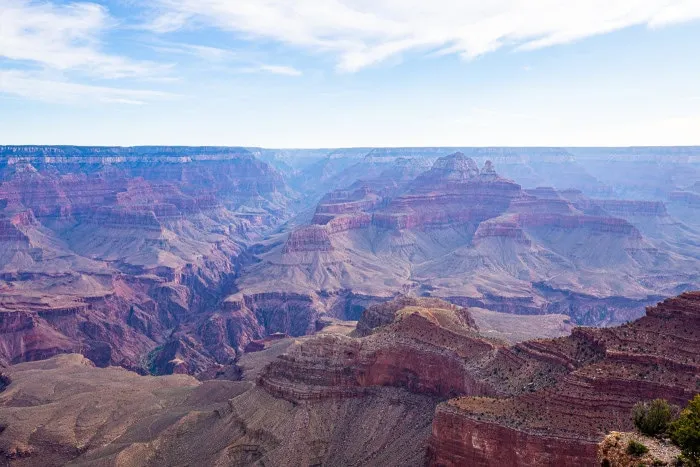
What to Do at the Grand Canyon National Park
There are plenty of things to do at the Grand Canyon National Park. One of the best ways to experience all the beautiful viewpoints is to take a hike. Whether you’re a novice hiker who wants to take a leisurely stroll between a couple of outlooks or a serious backpacker who plans to spend multiple days camping in the park, there’s a trail for almost anyone.
For the even more adventurous types, you can take a trip river rafting on the Colorado River. There are half-day and all-day smooth water trips available or whitewater rafting trips that last from 3 to 21 days.
You can also get around the park via a variety of vehicles. The Grand Canyon is a bike-friendly national park and you can even purchase or rent gear on site. You can take a tour in a jeep to explore by ground or on a helicopter to get a new vantage from the sky. Or you can take a horseback ride or a ride on a friendly mule.
Ranger programs are available at various times and locations throughout the park where you can learn more about the canyon’s history and wildlife straight from the rangers. And kids can become a Junior Ranger for themselves, with fun and educational activities they can complete on their visit.
And don’t forget to take lots of photos! The Grand Canyon National Park is one of the most picturesque places in the country. You’re going to want to capture it all!
Things to See at the South Rim of Grand Canyon National Park
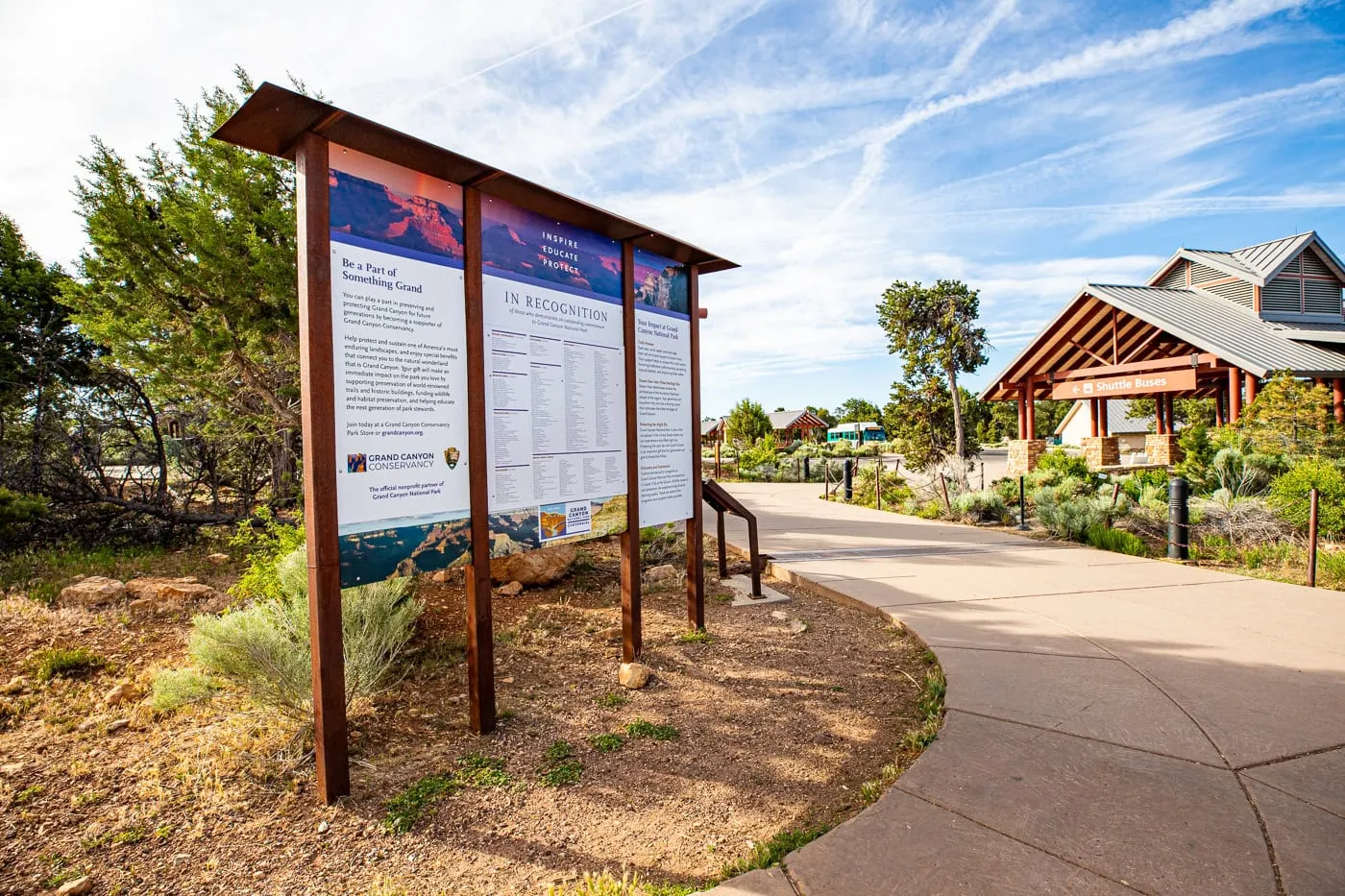
Grand Canyon Visitor Center
The first stop for many visitors to the Grand Canyon is the Visitors Center. Here you can explore exhibits on the park’s natural and human history and get your footing by picking up a brochure or talking to an experienced staff member for advice on how to make the most of whatever time you have or what the best views are.
You can also catch two free 24-minute informational films: “We Are Grand Cayon,” which showcases the 11 tribal communities who have called the park home since time immemorial and “Grand Canyon: A Journey of Wonder,” which takes you on a rim to river journey through the park.
Outside, explore the sidewalk signs and kiosks to see maps, information on shuttle busses, and other trip and hiking information.
Grand Canyon Conservancy Park Store
The Grand Canyon Conservancy Park Store is located right across from the visitor center and has a selection of books, maps, apparel, souvenirs, and gifts to use to guide your journey or to bring home in remembrance of your trip. Stop here to get your National Parks Passport stamped or get your Junior Ranger books and badges.
Bright Angel Bicycles & Café
Bright Angel Bicycles & Café is a convenient stop for a coffee or prepacked sandwich to take with you on your hike. They use locally roasted beans to make specialty coffees and offer a small menu of takeaway fare like grab-and-go sandwiches, salads, pastries, and more. This stop also offers bicycle rentals for those wanting to peddle through the park.
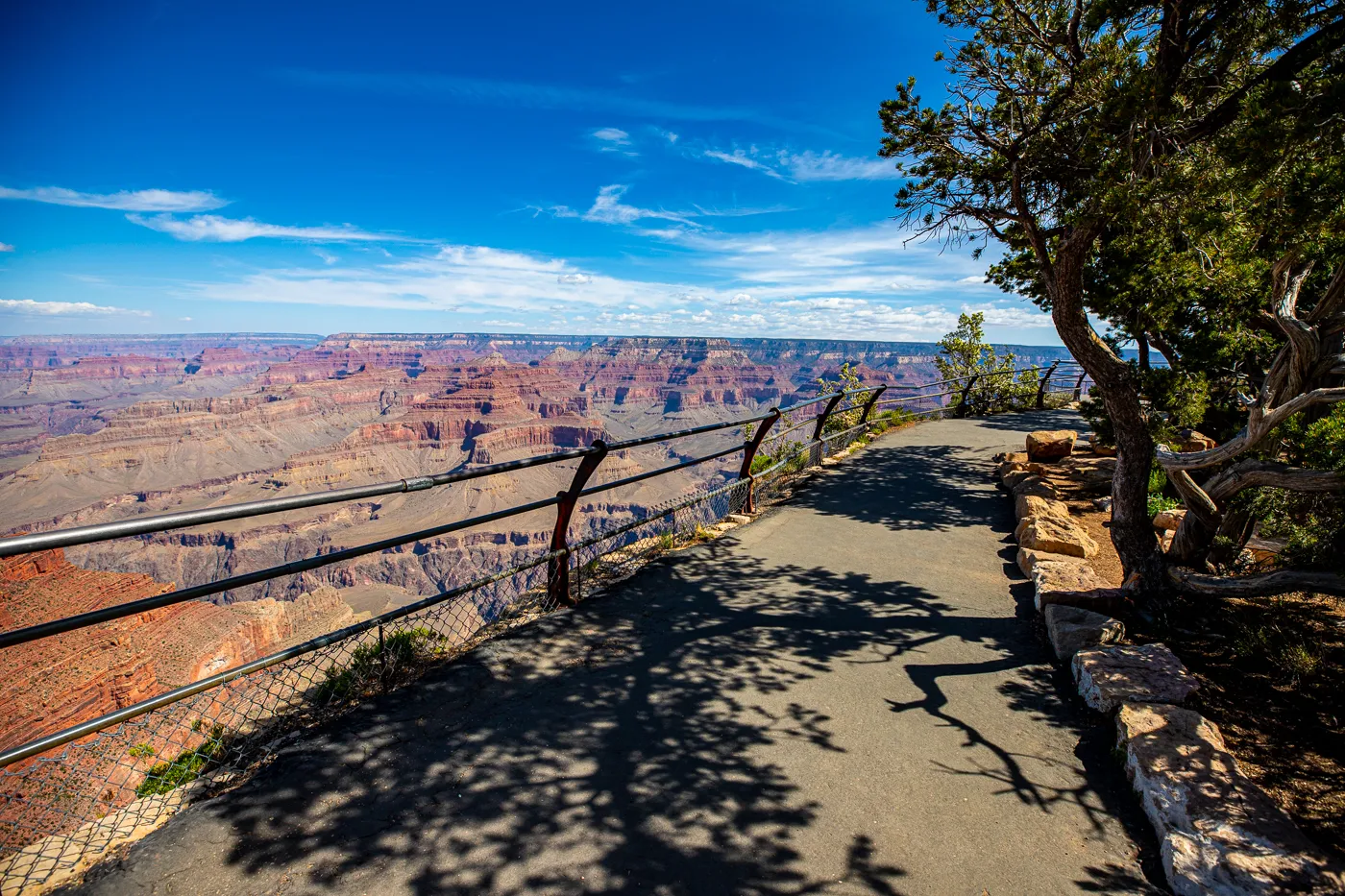
Rim Trail
Rim Trail spans 12.8 miles from the South Kalibab Trailhead to Hermits Rest. It’s a relatively easy hike, with much of the way a defined path and plenty of overlooks to rest at. The entire trail offers beautiful views of the canyon below. Even if you don’t walk the entire path, try a nice stroll between Mather Point and Yavapai Point. At only .7 miles it’s a quick walk among gorgeous scenery. You can even take the shuttle bus back to your car if you want.
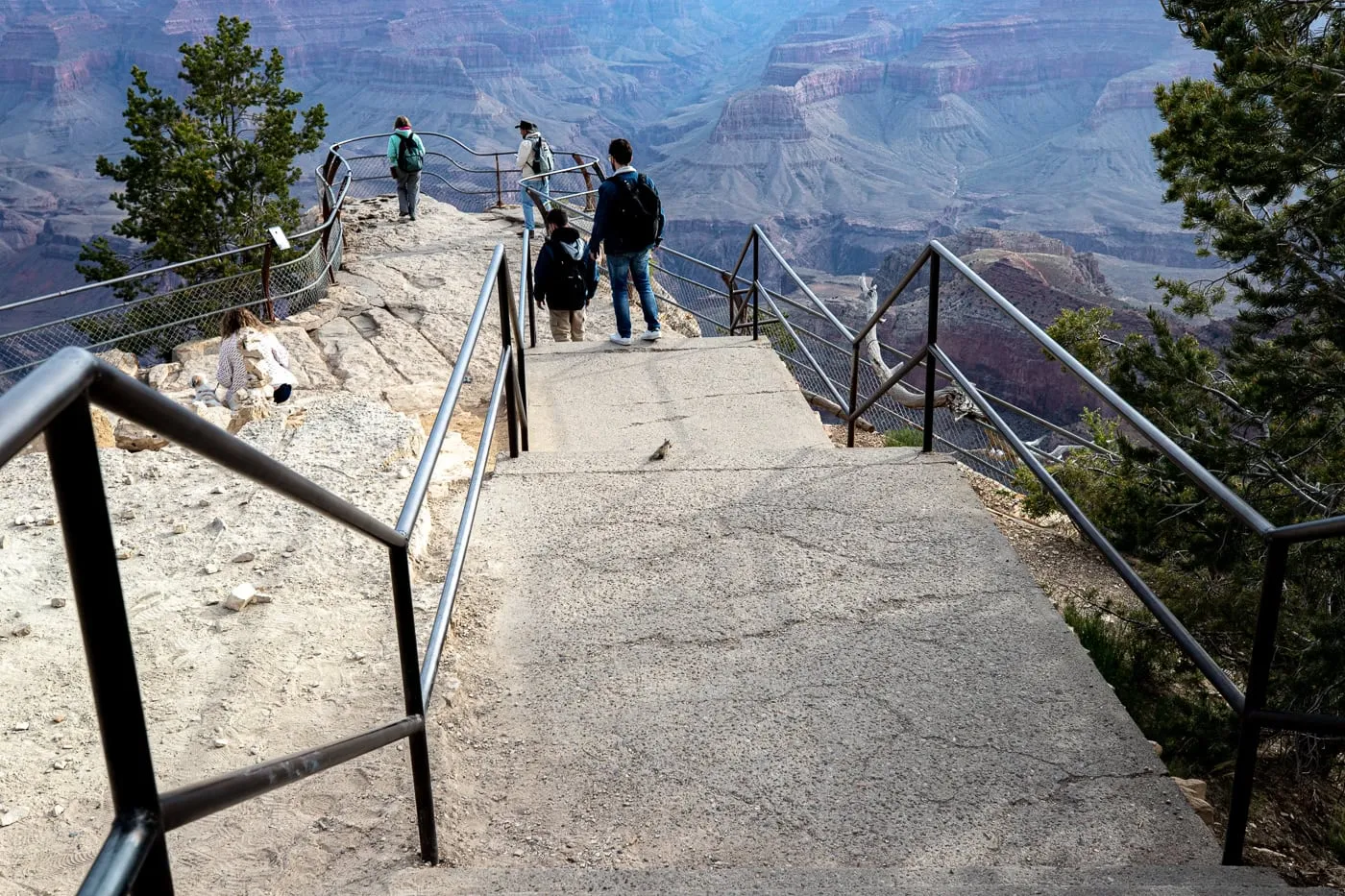
Mather Point
Mather Point is one of the most popular overlooks in The Grand Canyon. Located just a short walk from the Visitor Center and parking lot on a wide and well-paved trail, it’s easy, convenient, and accessible to get to. If you only have time for one stop before hitting the road again, this is it. The overlook was named after Stephen Mather, the National Park Service’s first director who was critical in establishing Grand Canyon National Park.
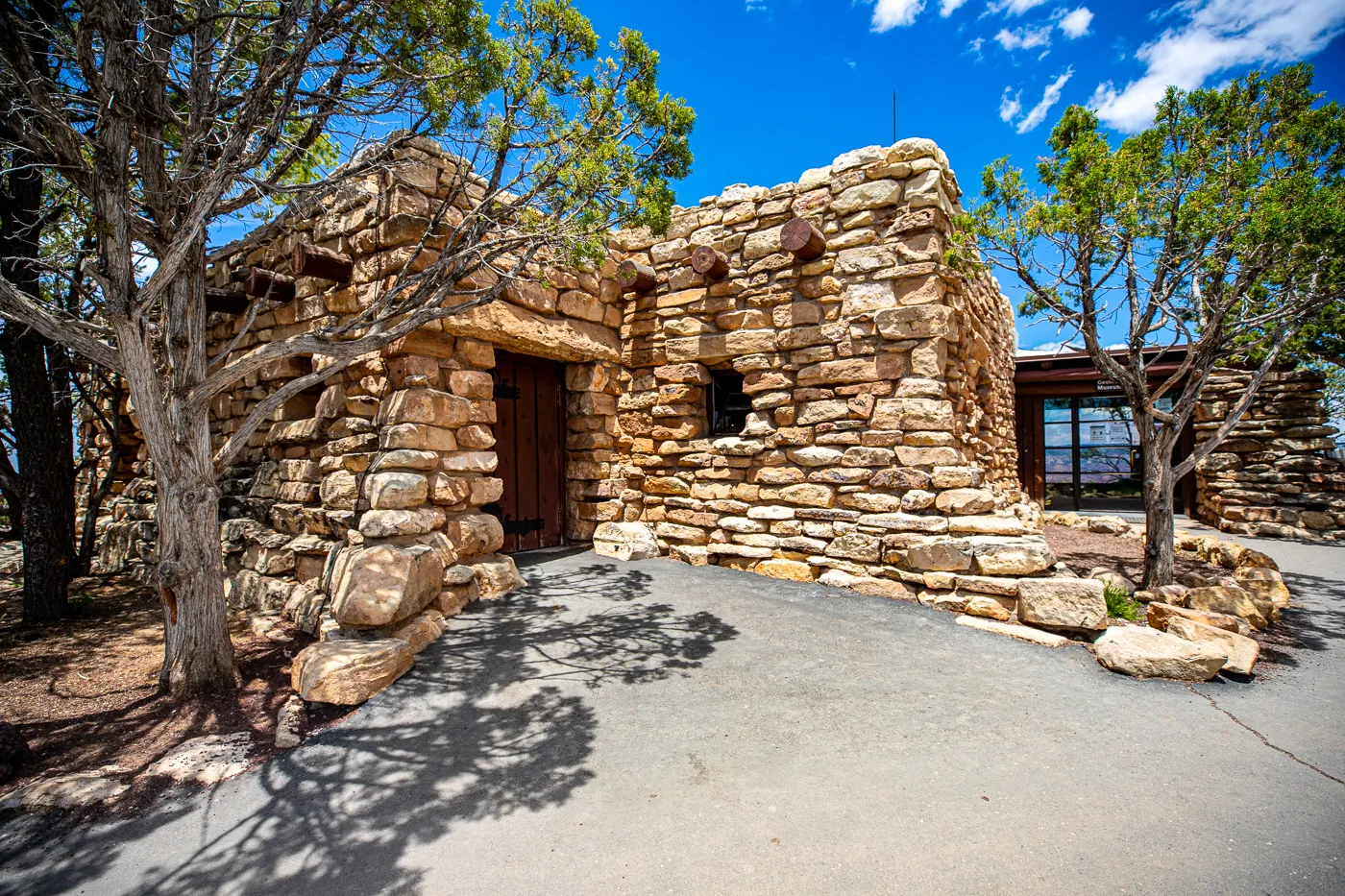
Yavapai Point and Yavapai Museum of Geology
The rustic stone building at Yavapai Point is home to the Yavapai Museum of Geology, a geology museum explores the nearly two billion year-old canyon’s history. Located right on the edge of the canyon’s cliff the large panoramic picture windows provide amazing views. Explore educational exhibits, annotated displays, three-dimensional models, artwork, photographs, and interpretive panels. One of the highlights is the large topographic relief map that brings the canyon to life in front of you. There’s also a small bookshop and gift shop inside.
Outside walk through the amphitheater for more impressive views or to catch a Park Ranger program. This is also one of the most popular places in the park to watch the sunset. Get there early as crowds will form.

Hermit Road
Hermit Road follows the canyon’s rim for 7 miles from the Village Historic District to Hermits Rest and the Hermit Trailhead with nine scenic overlooks along the way. Accessible by foot, shuttle bus, bicycle, or commercial bus tour (private vehicles are only allowed for a few months in winter), it’s one of the most popular routes in the park.
A shuttle ride is 80 minutes round trip, making nine stops on the way there and four stops on the way back. You can get off anywhere and hop back on the next bus or mix and match and walk between whichever stops you choose.
Hermit Road Scenic Overlooks
- Transfer Station: This is the starting point for the Hermit Road shuttle and the Rim Trail. A steep hill here provides beautiful views of the Bright Angel Fault.
- Trailview Overlook: This overlook gives a great view of the Bright Angel Trail switchbacks, as well as the Historic Village District and the iconic El Tovar Hotel.
- Maricopa Point: Known for its scenic canyon vistas, Maricopa Point also offers a view of the historic Orphan Lode Mine site.
- Powell Point: Featuring a memorial to explorer John Wesley Powell, this spot offers wide, panoramic views of the canyon.
- Hopi Point: One of the most popular spots for sunrise and sunset, Hopi Point has wide vistas and is equipped with restrooms.
- Mohave Point: This viewpoint is perfect for sunrise and sunset, with beautiful views of the Colorado River winding below.
- The Abyss: From here, visitors get a dramatic, nearly vertical view into Monument Creek and can glimpse Granite Rapids below.
- Monument Creek Vista: This vista is the starting point of the Greenway Trail, which is accessible to hikers, cyclists, and wheelchair users.
- Pima Point: Known as a prime location to see and sometimes hear the Granite Rapids, Pima Point is also along the Greenway Trail, which leads toward Hermits Rest.
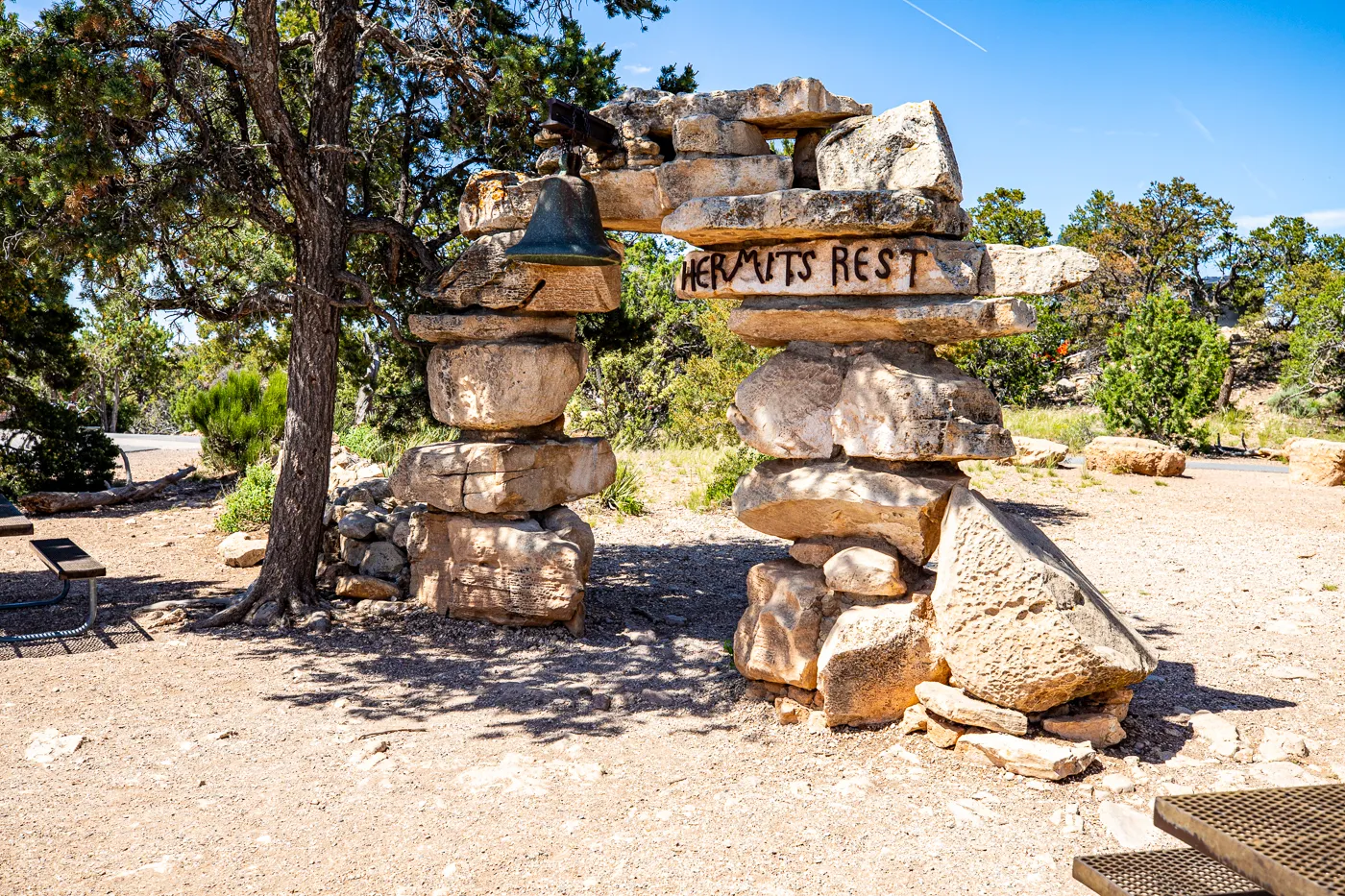
Hermits Rest
Hermits Rest is a roughhewn building that was designed by Mary Colter in 1914. The building resembles an old miner’s cabin, made with native stonework and logs, an overhang roof over the entrance, a front porch, and a giant alcove fireplace. Today it holds a gift shop and snack bar. Located at the end of Hermit Road it is the ultimate stop on the Hermits Rest shuttle and the road. You can also find the start of The Hermit Trail which winds steeply down into the canyon.
Village Historic District
Developed in the early 20th century, the Village Historic District was designed to provide amenities for visitors flocking to see the canyon’s incredible views. When the the first Steam-Powered Train, a spur line of the Santa Fe Railway, arrived on September 17, 1901, the area became booming with expansion to match the new crowds. Its iconic buildings include the historic El Tovar Hotel, which opened in 1905 as a luxurious retreat for tourists arriving by train, and the rustic Bright Angel Lodge, crafted by renowned architect Mary Colter to reflect the natural surroundings. Other highlights include Hopi House, modeled after traditional Native American dwellings, and the Grand Canyon Railway Depot, a rare and beautifully preserved log-built station. With its timeless structures and scenic overlooks, the Village Historic District offers a unique glimpse into the canyon’s past while serving as a bustling hub for today’s visitors.
Village Historic District Attractions
- Verkamp’s Visitor Center: A former family curio shop turned visitor center featuring exhibits on early Grand Canyon life, with a museum store and water station.
- Hopi House: A historic gift shop resembling a Hopi pueblo, designed by Mary Colter in 1905, showcasing Native American arts and crafts.
- Grand Canyon Railway Depot: One of the oldest wooden train depots in the U.S., welcoming train visitors directly to the South Rim.
- El Tovar Hotel: An iconic 1905 lodge with fine dining and canyon views, known as one of the park’s most luxurious accommodations.
- Bright Angel Lodge: A rustic lodge with diverse dining options and affordable accommodations designed by Mary Colter, right on the canyon edge.
- Buckey O’Neill Cabin: The oldest continuously standing structure on the South Rim, offering a unique, historic lodging experience.
- Lookout Studio: A stone structure by Mary Colter with panoramic views, built for visitors to enjoy and photograph the canyon.
- Kolb Studio: A historic photo studio built by the Kolb brothers, early photographers of the canyon, now hosting art exhibits and a gift shop.
- Bright Angel Trailhead: A popular starting point for Grand Canyon hikes, offering breathtaking canyon views and access to one of the park’s most iconic trails.
Market Plaza on the South Rim
Market Plaza at the Grand Canyon South Rim is the hub for visitors looking to stock up, refuel, and get a taste of convenience during their canyon adventure. Centrally located, it offers everything from groceries and camping supplies to a post office and bank, making it easy for travelers to access essentials without leaving the park. At Market Plaza you will find:
- US Post Office: Conveniently located at Market Plaza, providing essential mailing services within the park.
- Canyon Village Market & Deli: Open daily, this market offers groceries, souvenirs, and outdoor gear, with a deli.
- Yavapai Lodge: The largest lodging option at the South Rim, featuring a cafeteria, coffee shop, gift shop, and pet-friendly rooms, all within a short walk of the Market Plaza amenities.
Desert View Drive
Desert View Drive is a scenic 25-mile route along the Grand Canyon’s South Rim, offering some of the most stunning panoramic views of the canyon. Accessible from Grand Canyon Village or the East Entrance Station, this drive winds toward the Desert View Watchtower, with multiple overlooks and photo-worthy stops along the way. Ideal for those who want to explore the beauty of the canyon by car, Desert View Drive promises breathtaking vistas at every turn.
Tusayan Museum and Ruin
The Tusayan Museum is a small space with exhibits on local Native American culture. Behind the museum is a short self-guided trail that leads to the Tusayan Ruin, the remains of a 12th-century Puebloan village.
Desert View Drive Overlooks
- Pipe Creek Vista: This first overlook on Desert View Drive is accessible by private car or the Kaibab Rim Shuttle, with limited parking; visitors can access the Canyon Rim Trail from here.
- Duck on a Rock: At this viewpoint, visitors can use their imaginations to find the “Duck on a Rock” formation among the canyon’s unique shapes and shadows.
- Grandview Point: Sitting at 7,399 feet, Grandview Point offers sweeping views and a steep trail to Horseshoe Mesa, showcasing dramatic canyon layers and historic mining remnants.
- Moran Point: Named after painter Thomas Moran, this overlook displays striking geological layers, including the canyon’s oldest rocks, seen clearly from this viewpoint.
- Lipan Point: Known for its sunrise and sunset views, Lipan Point offers an expansive vista of the Grand Canyon, showcasing the Grand Canyon Supergroup rock strata and ancestral Puebloan sites.
- Navajo Point: The highest viewpoint on the South Rim, just west of Desert View Watchtower, providing panoramic views of the canyon and the Colorado River—ideal for sunrise watchers.
Desert View
Desert View offers visitors to the Grand Canyon a unique experience with expansive views, historic landmarks, and cultural sites. Located at the eastern end of the South Rim, this area is accessible via the scenic Desert View Drive, which takes you past several overlooks and points of interest, or the East entrance. At Desert View, you’ll find the iconic Desert View Watchtower, designed by Mary Colter, along with a visitor center, gift shop, and the Tusayan Museum and Pueblo, where you can explore ancient ruins and learn about the Indigenous cultures connected to the canyon. This area provides a perfect blend of stunning vistas, history, and cultural insights, making it a must-see part of the Grand Canyon.
Desert View Watchtower
The Desert View Watchtower is a 70-foot-tall circular stone tower that was fashioned by Mary Colter in 1932. She designed it based on the architecture of the Ancestral Puebloan people of the Southwest. Eighty-five steps lead up to an observation deck that give views from more than 5,000 feet above the canyon floor. It contains murals of ancient Native American life by Hopi artist Fred Kabotie. Inside you can learn more about the indigenous Hopi peoples who used to live in and around the Grand Canyon. You can also visit a snack bar, store, and gas station.
More Desert View Attractions
- Desert View Entrance Station: Serving as a secondary gateway to the South Rim, this entrance is open 24/7 and ideal for visitors coming from Southwestern Colorado, Southern Utah, New Mexico, and Phoenix, Arizona.
- Desert View Point & 1956 Aviation Memorial: Overlooking a stunning canyon view and a sharp bend in the Colorado River, this point includes a memorial for the 1956 TWA-United Airlines collision.
- Desert View Amphitheater: During the summer, rangers host sunset talks, while Native American community members present cultural programs, all with a breathtaking canyon backdrop.
- Desert View Trading Post: Near the Watchtower, this adobe-style trading post offers Native American handicrafts, with an outdoor patio and a snack bar.
- Desert View Market & Deli: Offering groceries, souvenirs, and deli options, this market has both indoor and outdoor seating, perfect for picking up road trip snacks and camping supplies.
- Desert View Gas Station: Open year-round with self-service gas and diesel, this station is the last fuel stop for 30 miles in either direction, located near the park’s south entrance.

Grand Canyon Shuttle Buses
The Grand Canyon Shuttle Buses are a convenient, eco-friendly way to explore the South Rim without the hassle of parking. These free shuttle buses operate on a loop system with designated stops, allowing visitors to easily access popular viewpoints, trails, lodges, and visitor centers. Each shuttle route is color-coded, with buses stopping at various points along the rim and within the Grand Canyon Village.
Key Information and Rules
- Shuttle Service Rules: Shuttle buses are free to use and are wheelchair accessible, with priority seating for those with disabilities. Pets are not allowed on buses, except for service animals.
- Pick-Up Points: Buses pick up passengers at marked stops throughout the Grand Canyon Village area, including major parking lots, visitor centers, and lodging areas.
Shuttle Routes and Schedules
- Village (Blue Route): This route runs year-round and provides easy access to essential spots within Grand Canyon Village, like the Visitor Center, Yavapai Geology Museum, and lodges. Buses operate every 15–30 minutes, allowing visitors to easily navigate the village.
- Kaibab Rim (Orange Route): The Orange Route runs year-round and connects the Visitor Center to various scenic points along the eastern rim, including Pipe Creek Vista and South Kaibab Trailhead. Buses typically run every 15–30 minutes.
- Hermit Road (Red Route): Operating March through November, this route transports visitors west from the Village area, making stops at scenic overlooks along Hermit Road, such as Maricopa Point, Hopi Point, and Hermits Rest. During the off-season, private vehicles are permitted on this route.
- Tusayan (Purple Route): From May through September, this seasonal route runs between the Grand Canyon Visitor Center and the nearby town of Tusayan. Ideal for visitors staying outside the park, this shuttle stops at key points in Tusayan and has buses every 20 minutes.
By using these shuttles, you can enjoy the breathtaking views without worrying about parking or traffic, making it an essential part of a smooth and enjoyable Grand Canyon experience.
Take a Tour of the Grand Canyon National Park
There are plenty of options for exploring the Grand Canyon is you don’t want to take a do-it-yourself adventure. Enjoy a tour by helicopter, Hummer, Jeep, or ATV. Be picked up from Las Vegas, Phoenix, Sedona, Williams, or Flagstaff. Spend a day or multiple days admiring the views. And join a small group of like-minded strangers or take a private tour. However you want to explore the Grand Canyon, there’s a tour for that.
Parking at The Grand Canyon South Rim
Parking at the Grand Canyon South Rim is manageable if you know where to go and plan ahead, especially during peak seasons. Here’s what to expect and some helpful tips for securing a spot.
Main Parking Areas
- Visitor Center Parking Lots (Lots 1–4): The largest and most popular parking area is near the Grand Canyon Visitor Center, with four designated lots offering ample space. Arriving early, especially in the summer, increases your chances of finding a spot close to the main visitor area.
- Grand Canyon Village: Parking is also available near popular areas in the Grand Canyon Village, including lodges, restaurants, and the train depot. However, spots here are more limited, and you may need to walk a bit to reach your destination.
- Market Plaza: This area has parking near the market, general store, and post office, making it a good option if you plan to stock up on supplies or need a short walk to the village area.
Parking Tips
- Arrive Early: During the summer and holiday weekends, parking fills up quickly. Arriving before 9 a.m. can make a big difference in securing a close spot.
- Use Shuttle Buses: If parking near the Visitor Center, consider using the Grand Canyon shuttle buses to reach different areas. This allows you to leave your vehicle in one spot and avoid moving it between different locations.
- Overnight Parking: If you’re staying in one of the South Rim lodges, there’s parking available near each lodge. Overnight visitors should ask their lodge about designated parking areas, as some require permits.
- Avoid Busy Times: Late mornings and early afternoons are often the busiest times. If possible, plan for early morning or late afternoon arrival to avoid peak crowds.
- Additional Options in Tusayan: If you’re unable to find parking inside the park, try parking in the nearby town of Tusayan. The seasonal Tusayan Shuttle (Purple Route) can take you directly to the Visitor Center.
Following these tips can help you find a convenient parking spot and make the most of your time at the Grand Canyon South Rim!
The Grand Canyon Railway
Want to ditch your car and have a unique adventure? Take a trip on The Grand Canyon Railway. Experience the grand tradition of taking the train from Williams, Arizona to the Grand Canyon National Park. Sit back and relax as you travel round trip inside a restored vintage locomotive and watch the 64-miles of incredible landscapes pass you by. Operating since 1901, this train will take you back in time as it takes you to the South Rim. During the season, the train departs Williams daily at 9:30am, arrives in Grand Canyon Village around 11:45am, then departs the village at 3:30pm, leaving you around 3 and a half hours to explore the park. It arrives back in Williams at 5:45pm so you can enjoy dinner and some sites back in town. Book your ticket to ride the Grand Canyon Railway.
